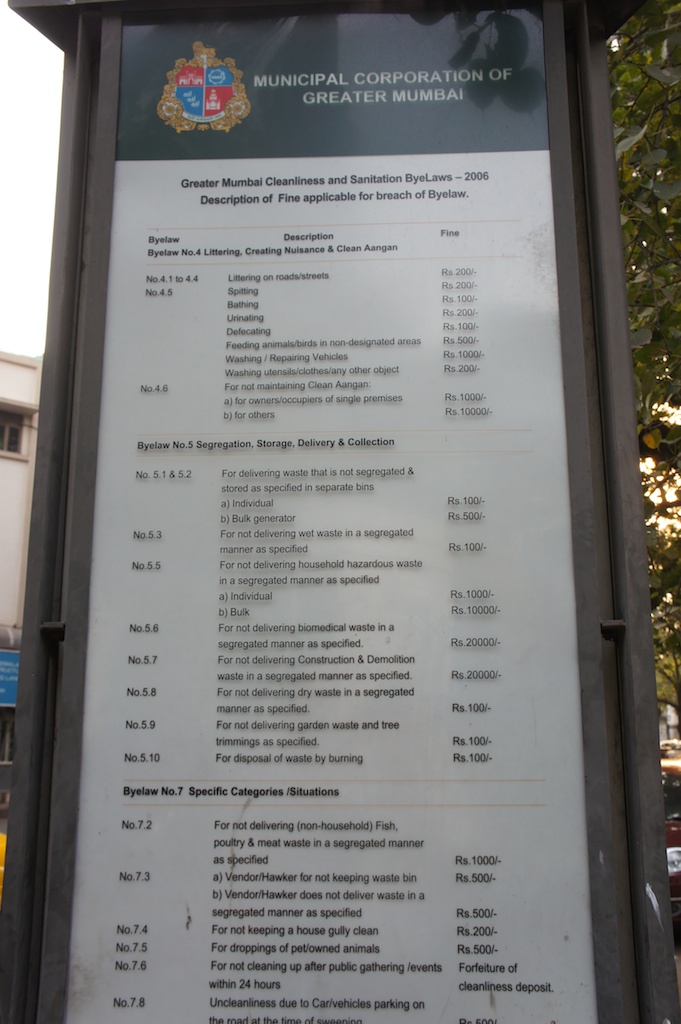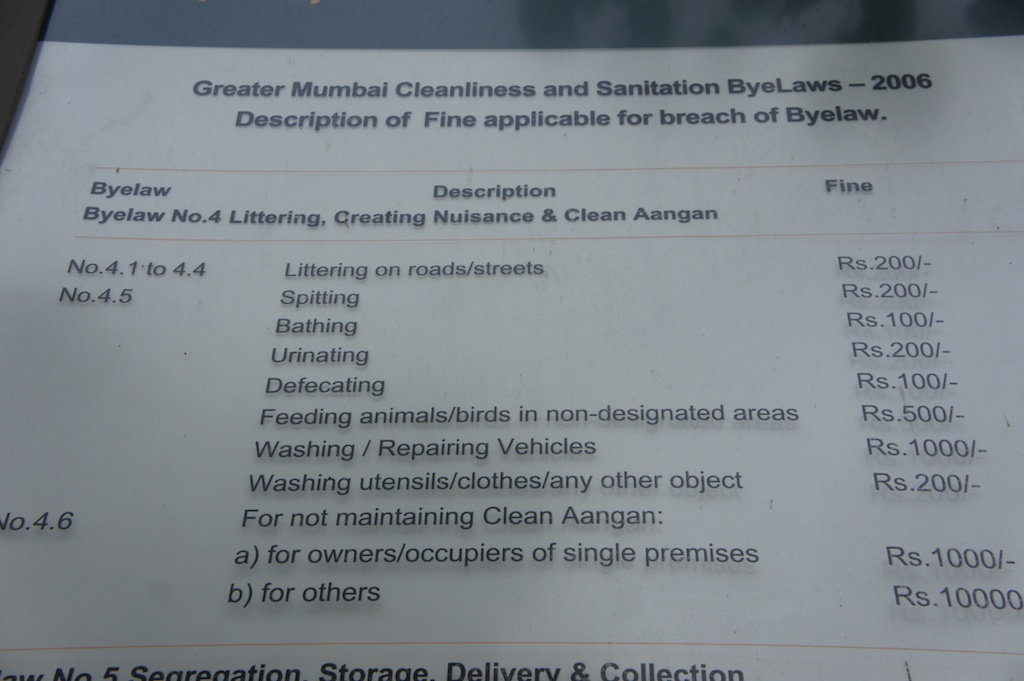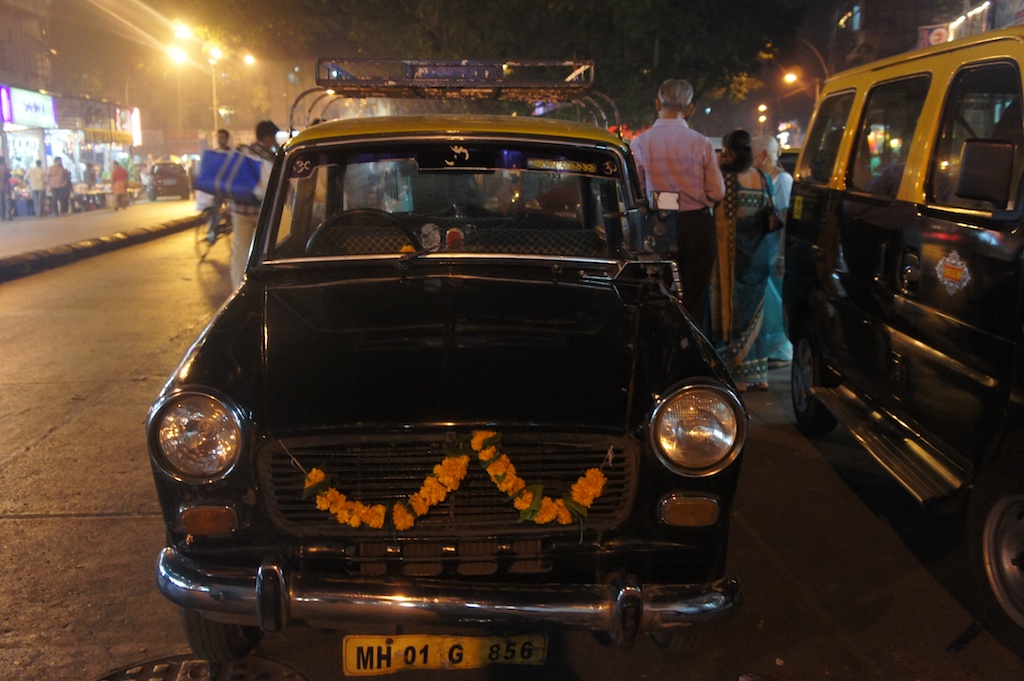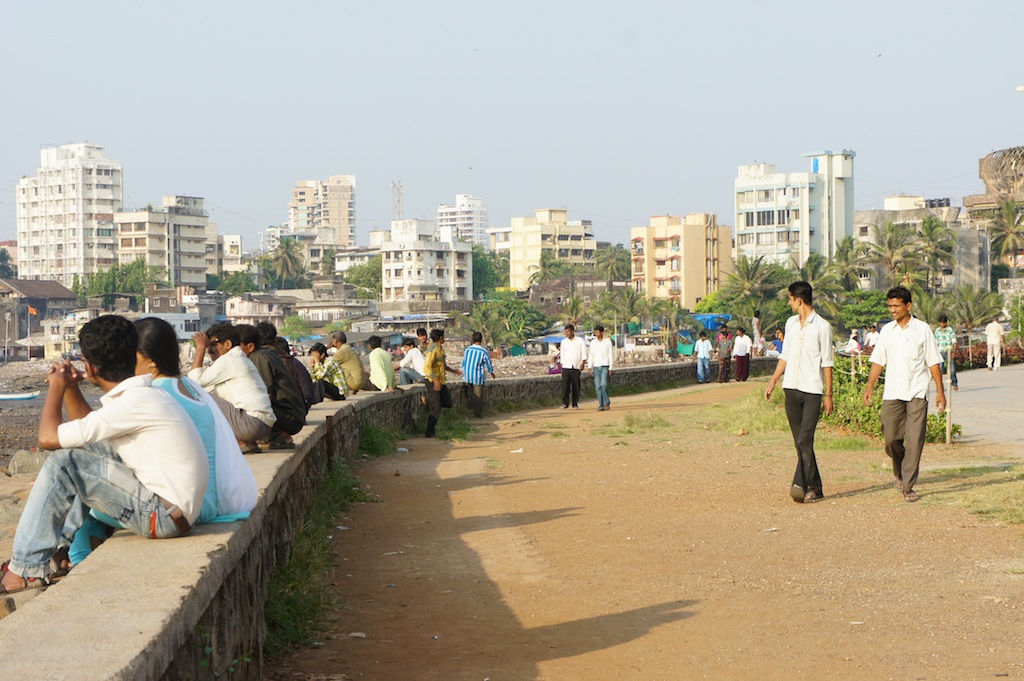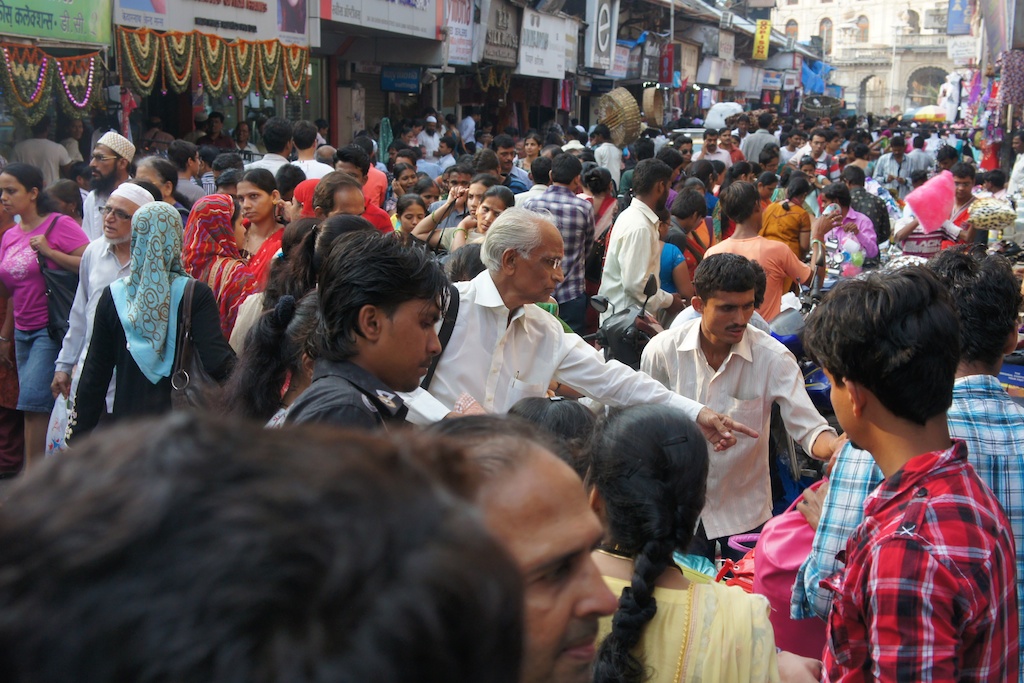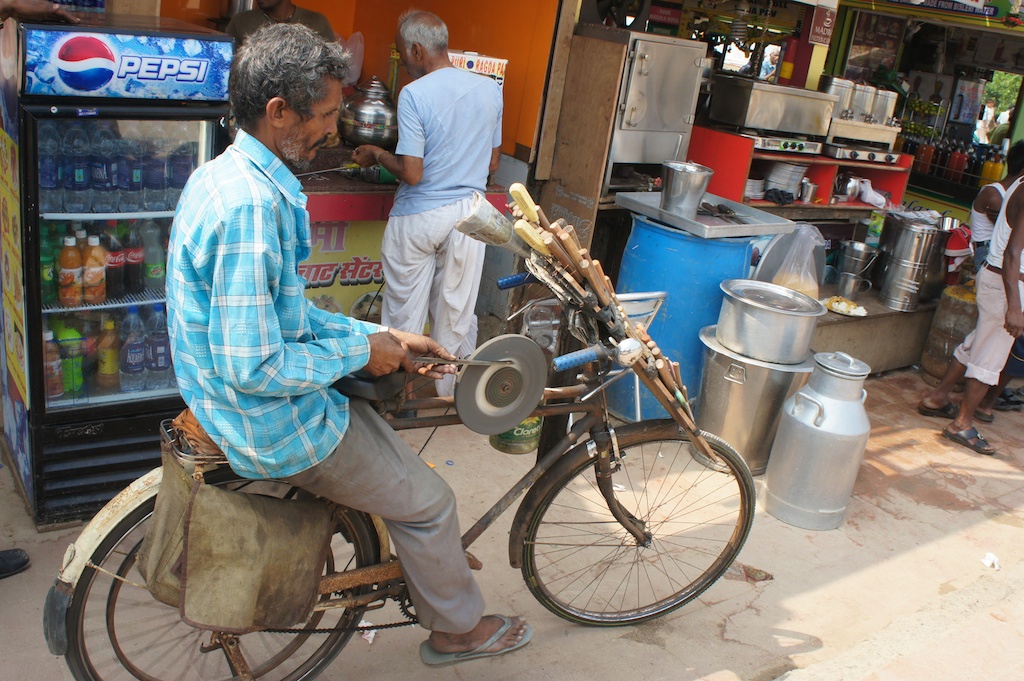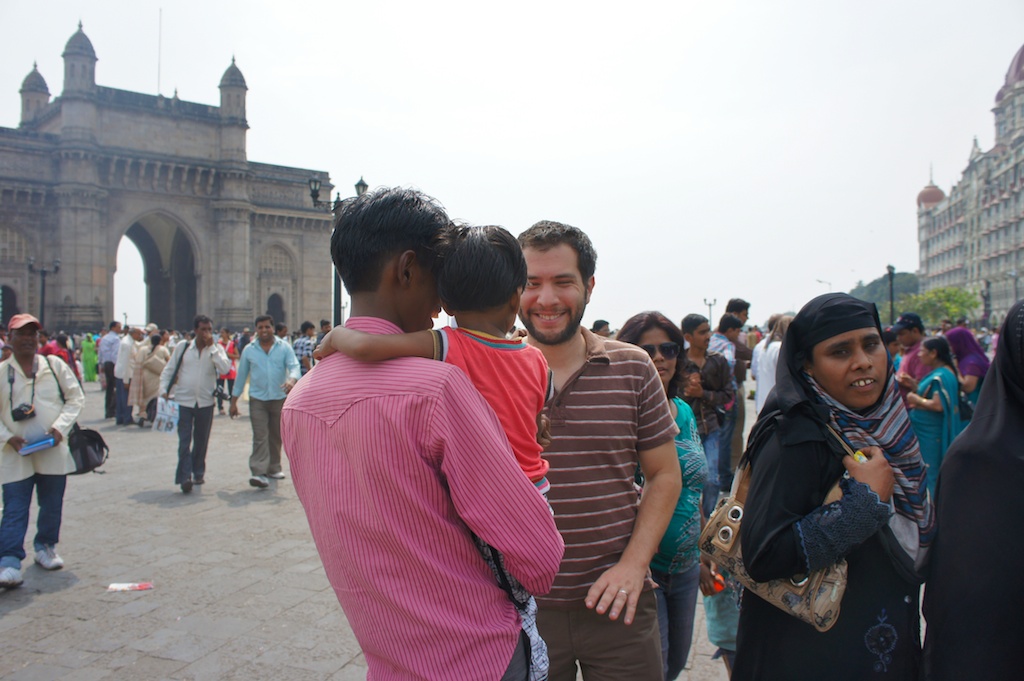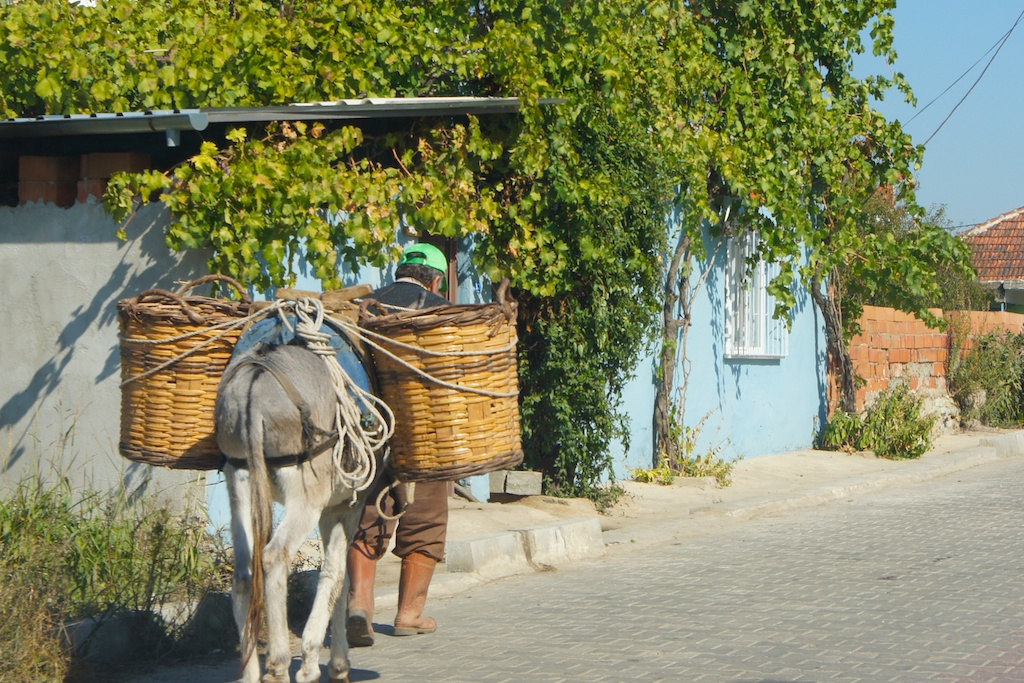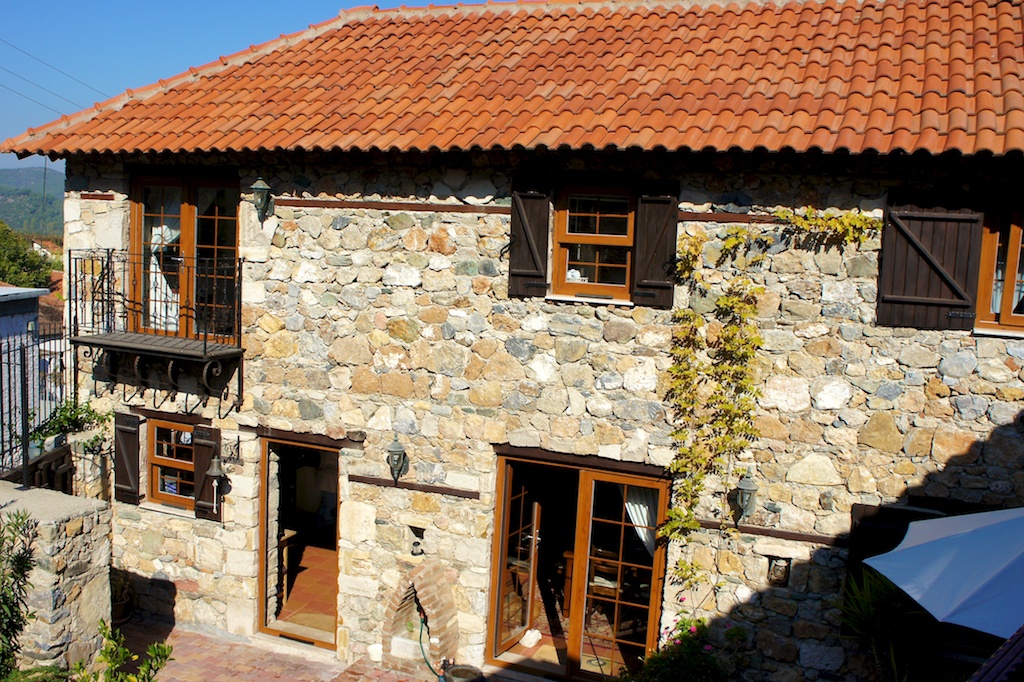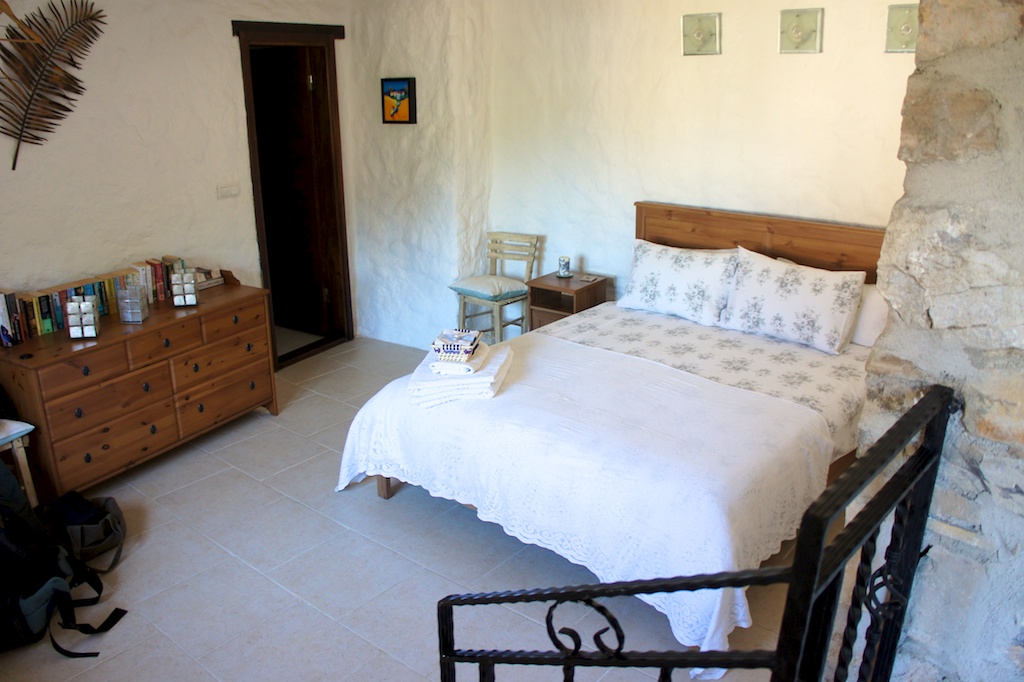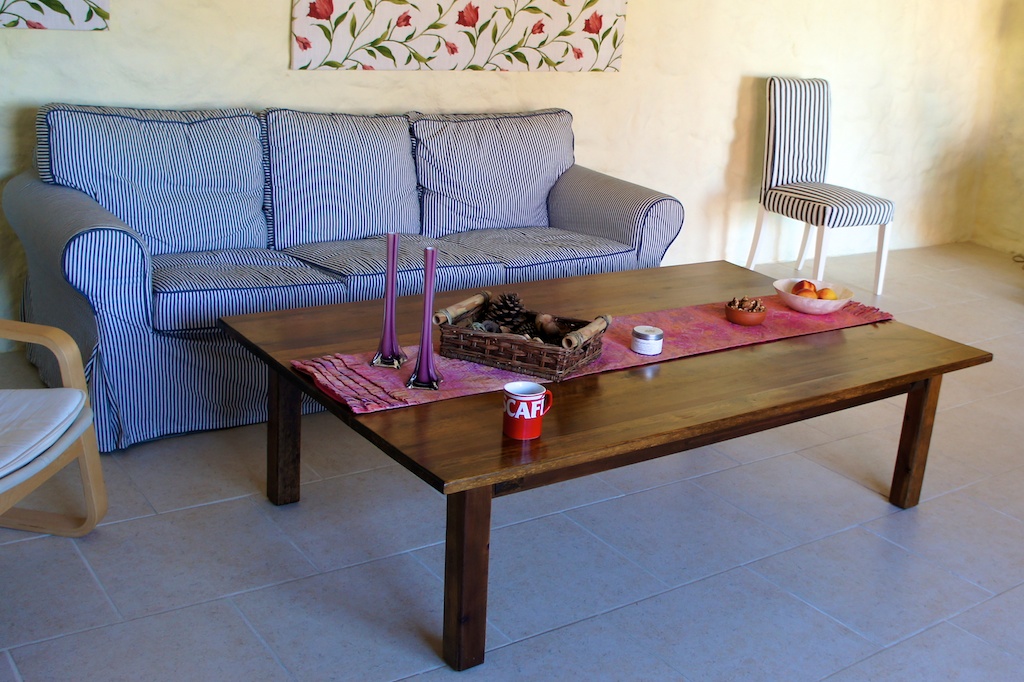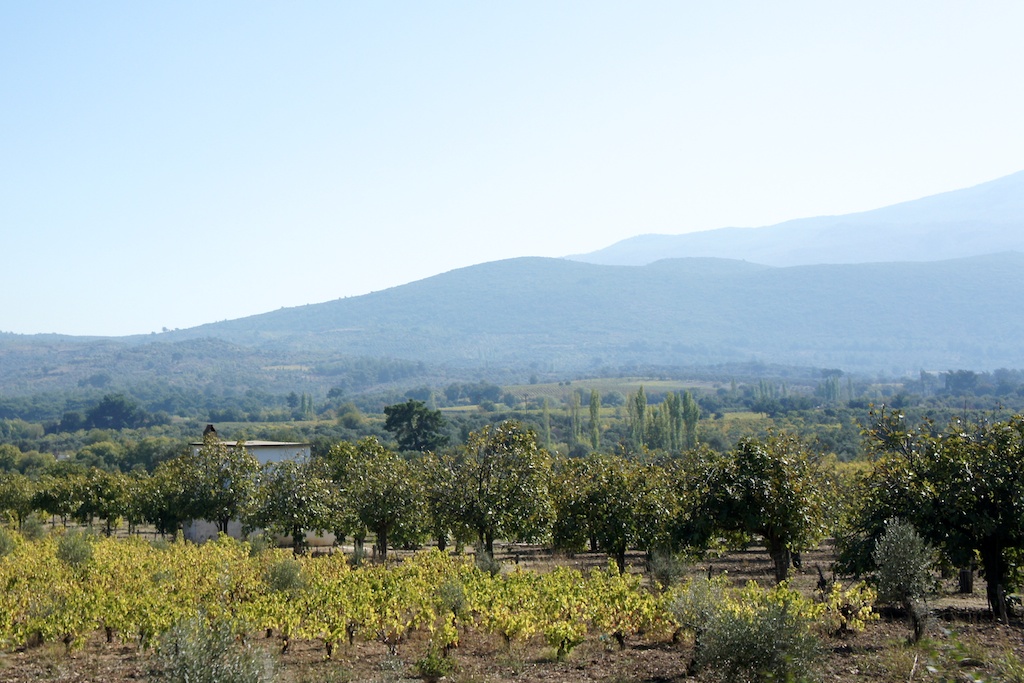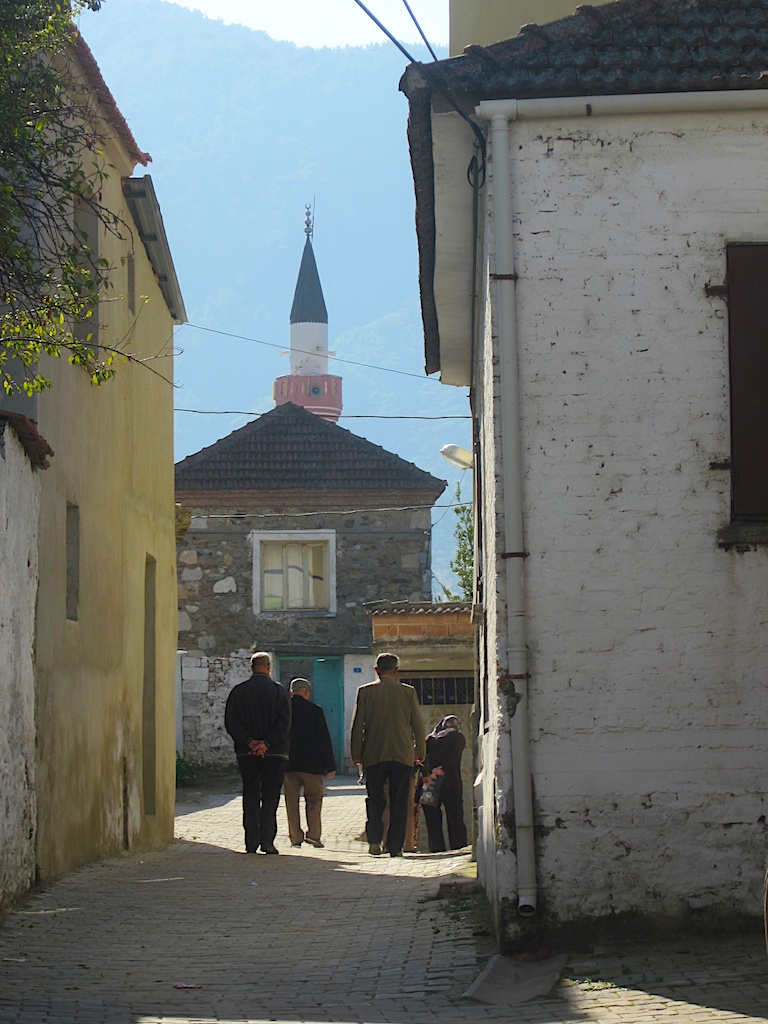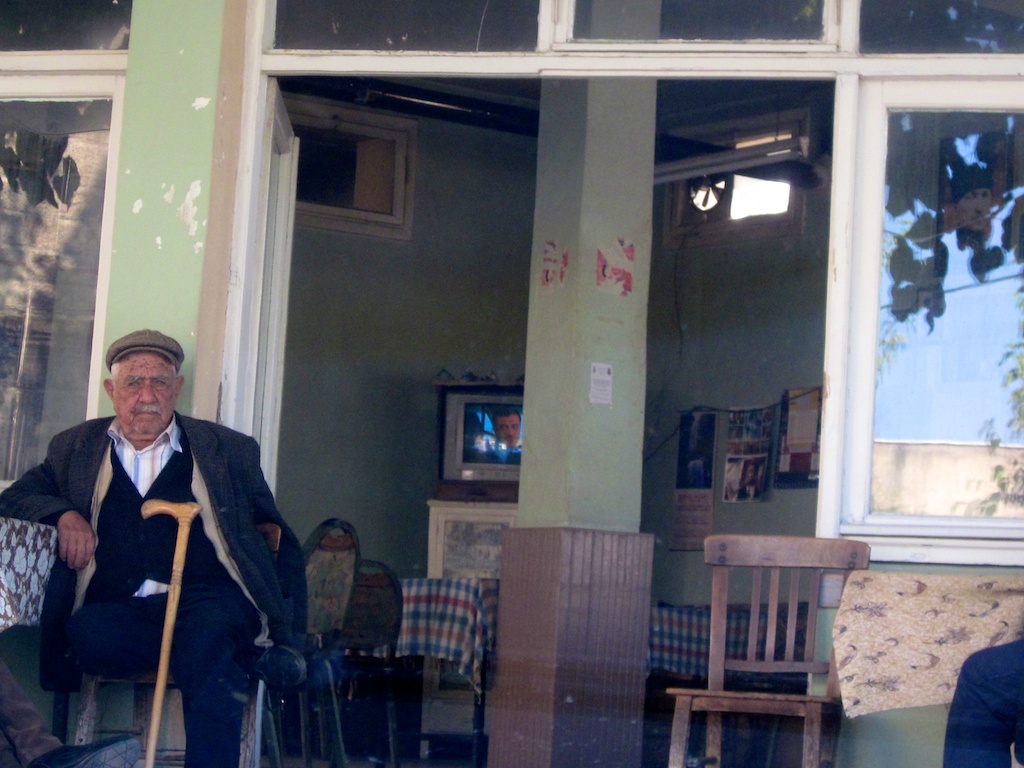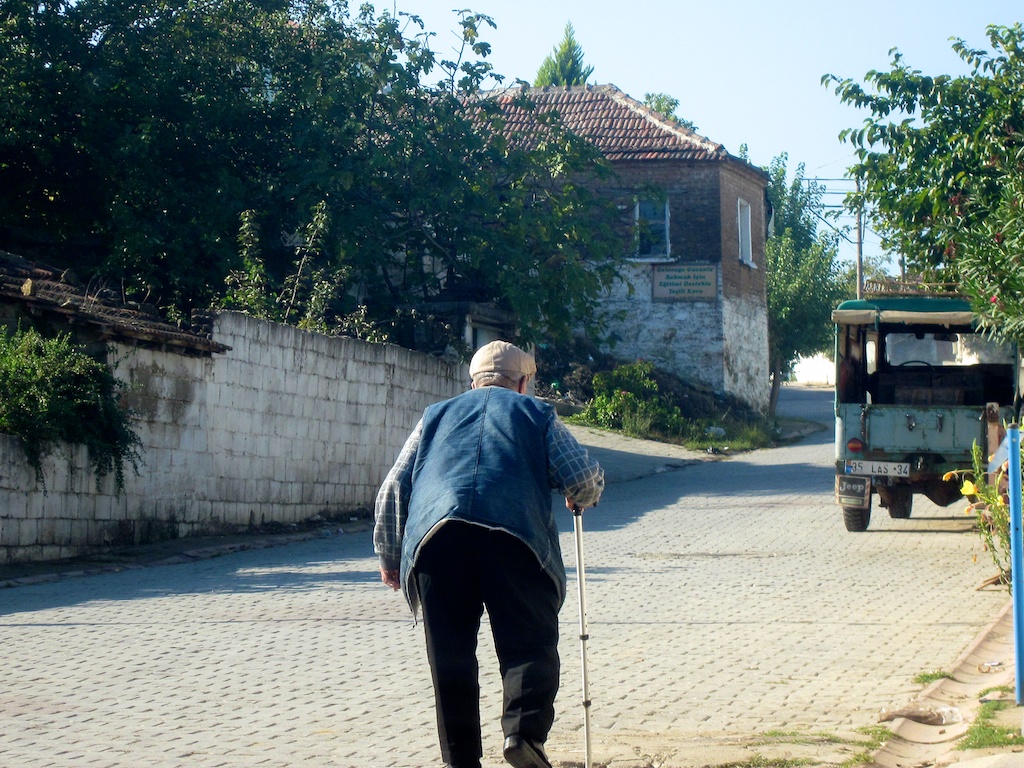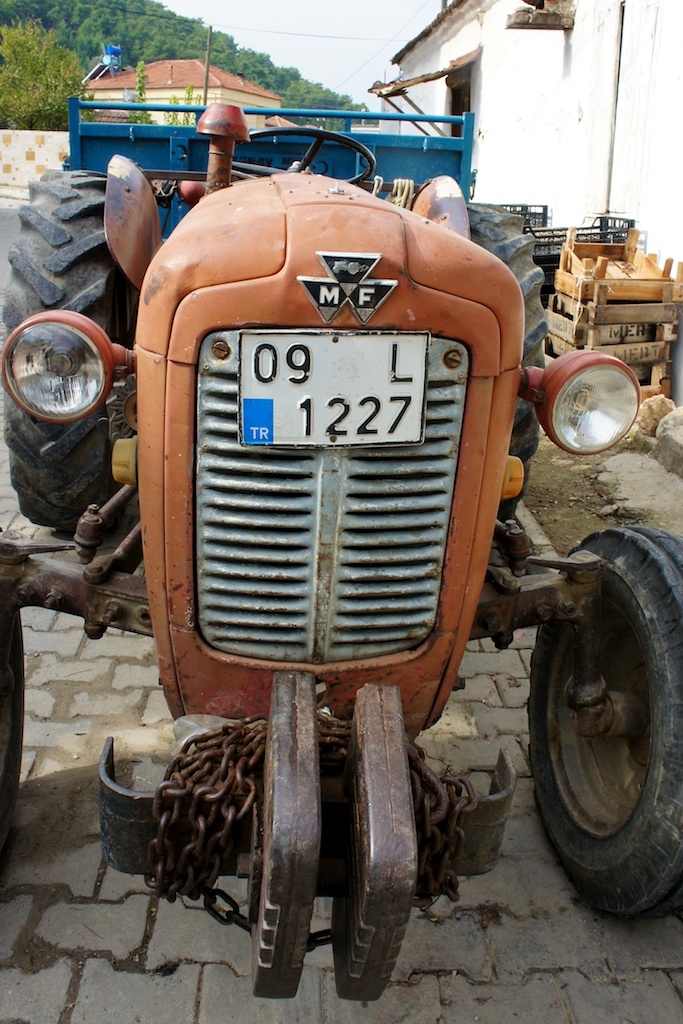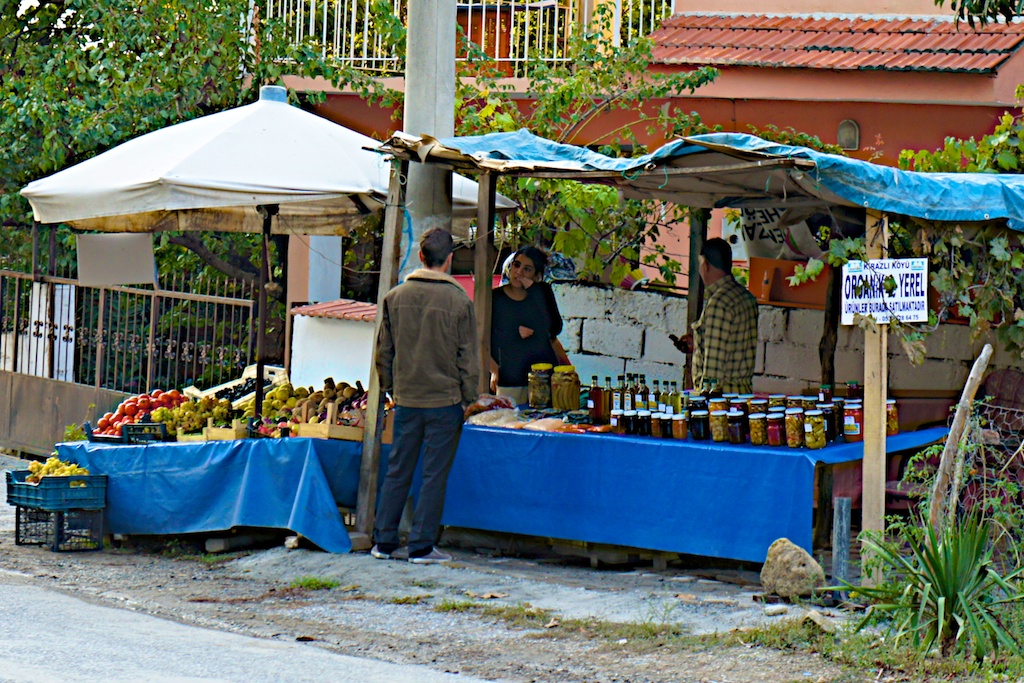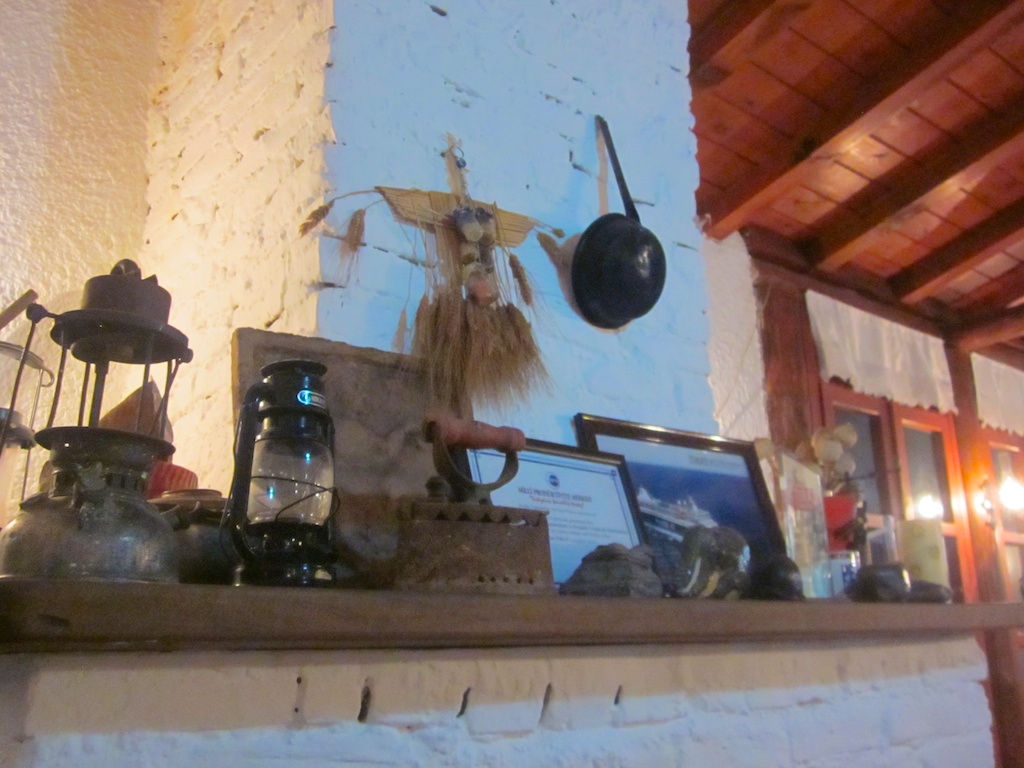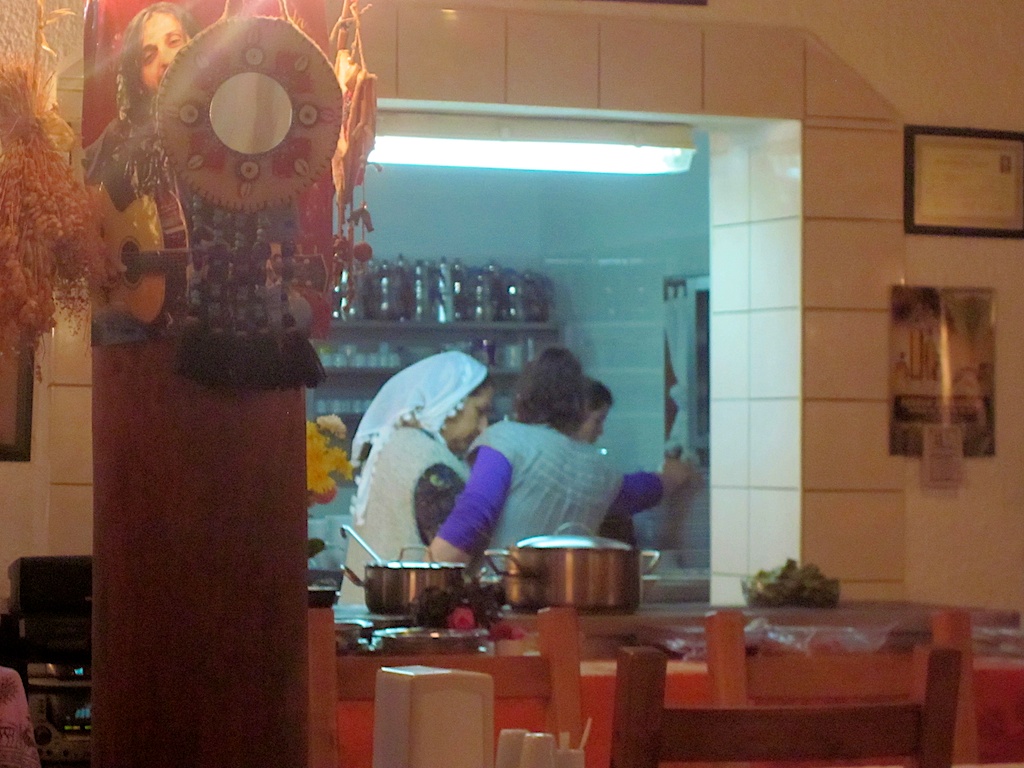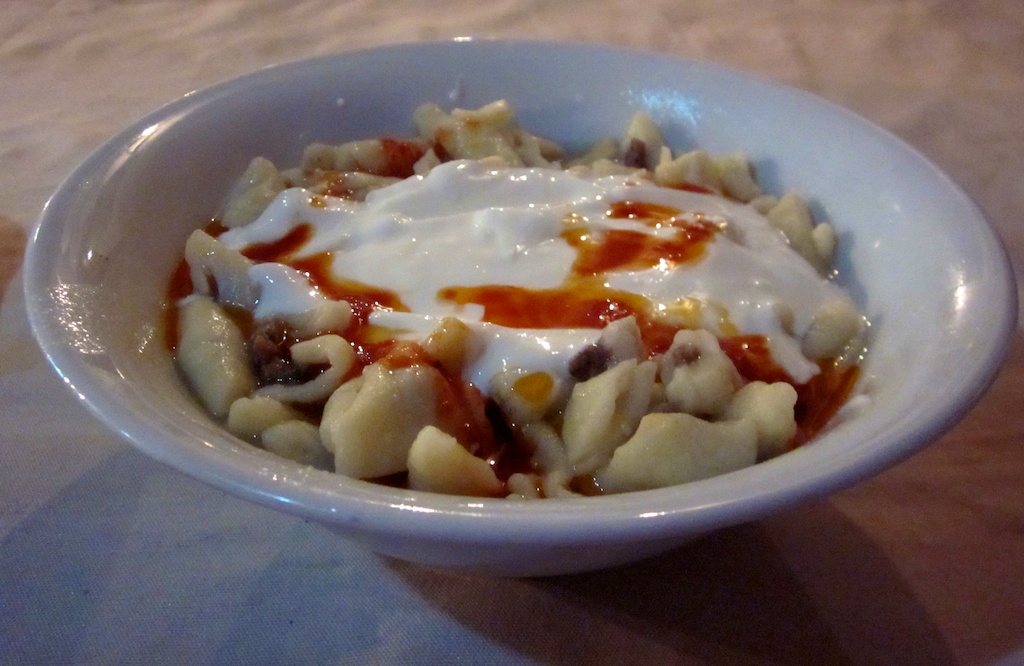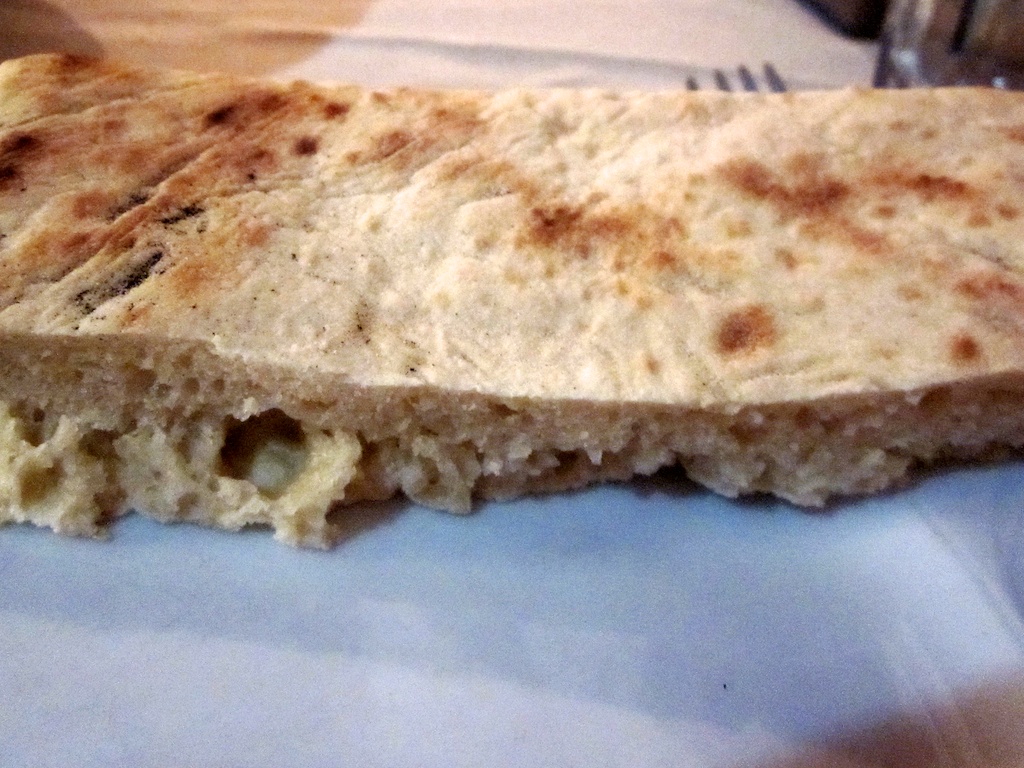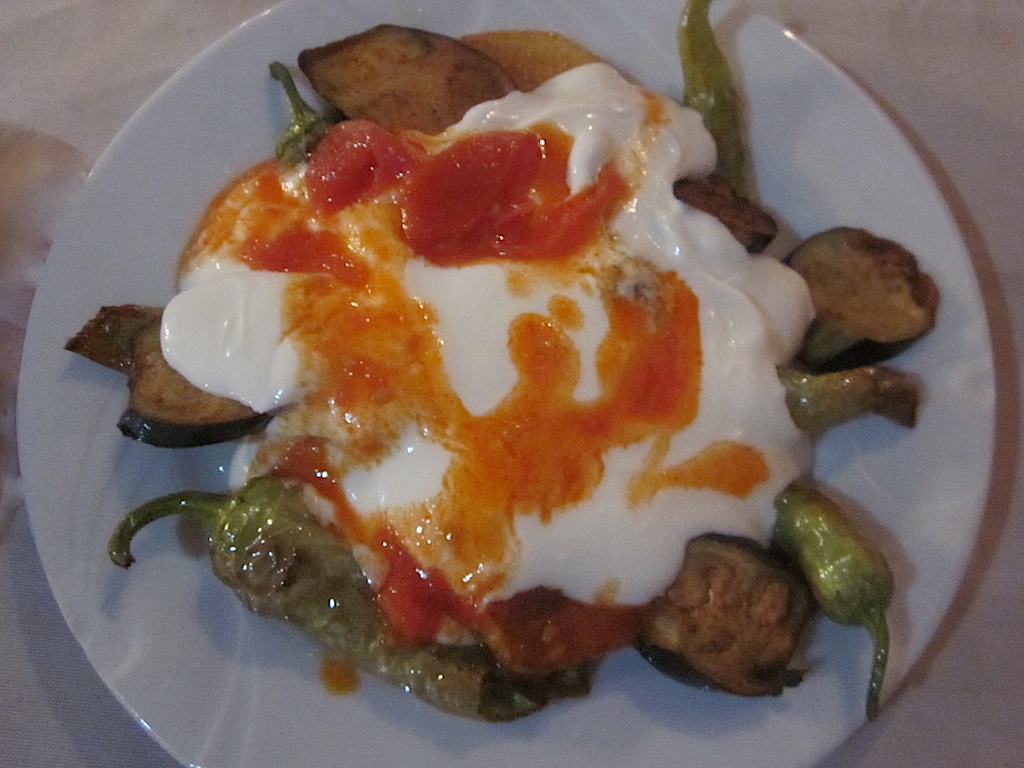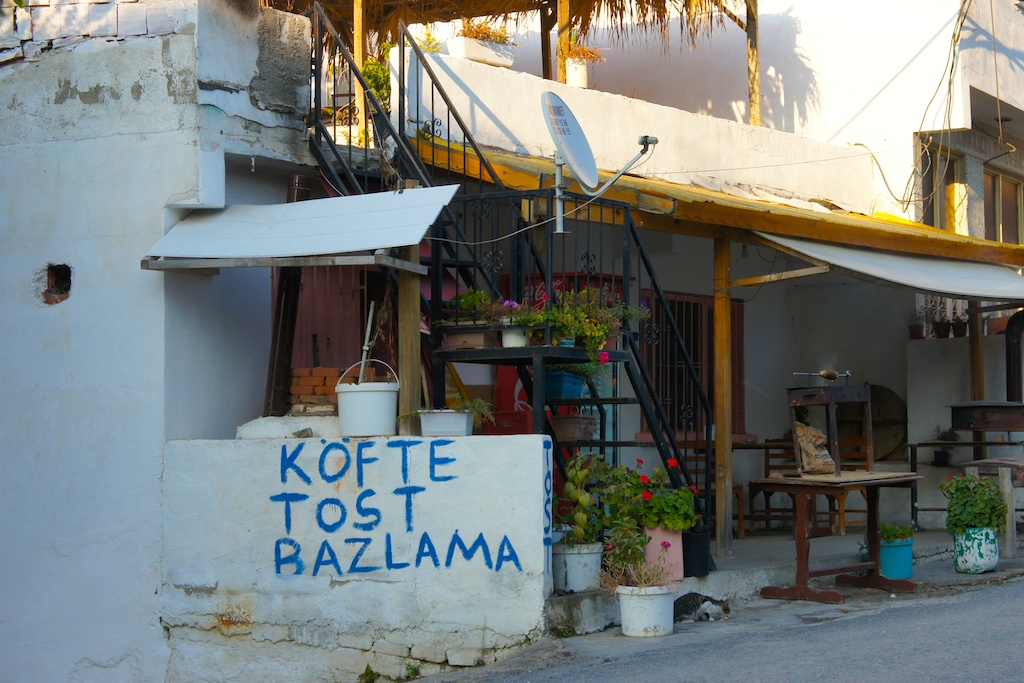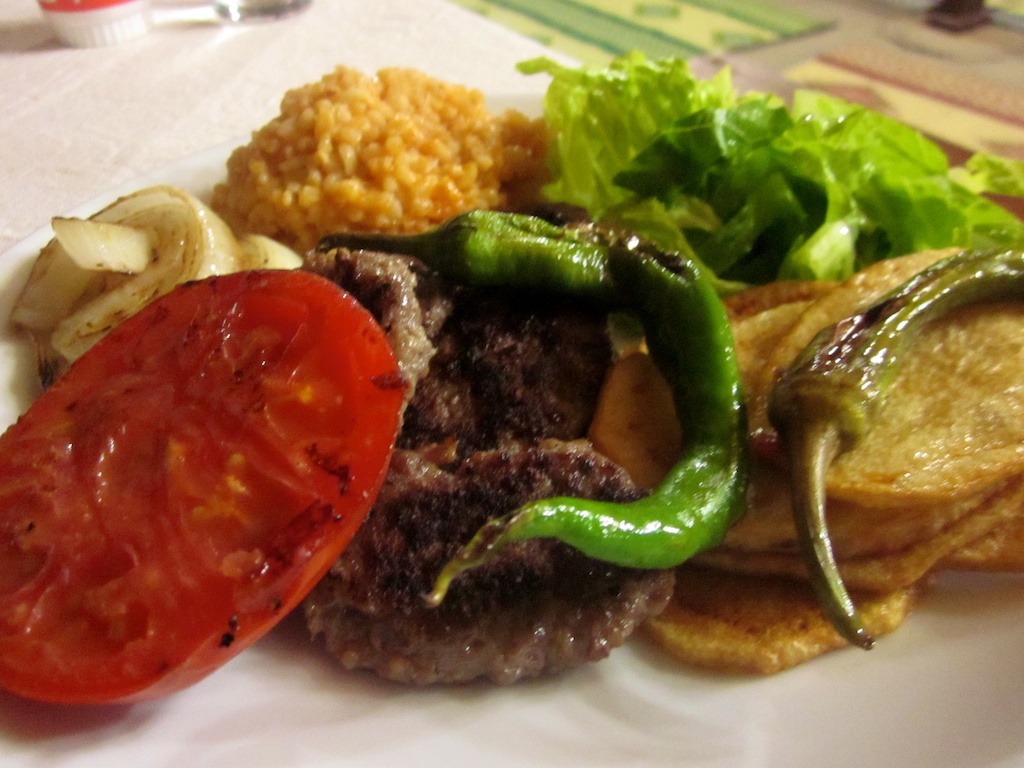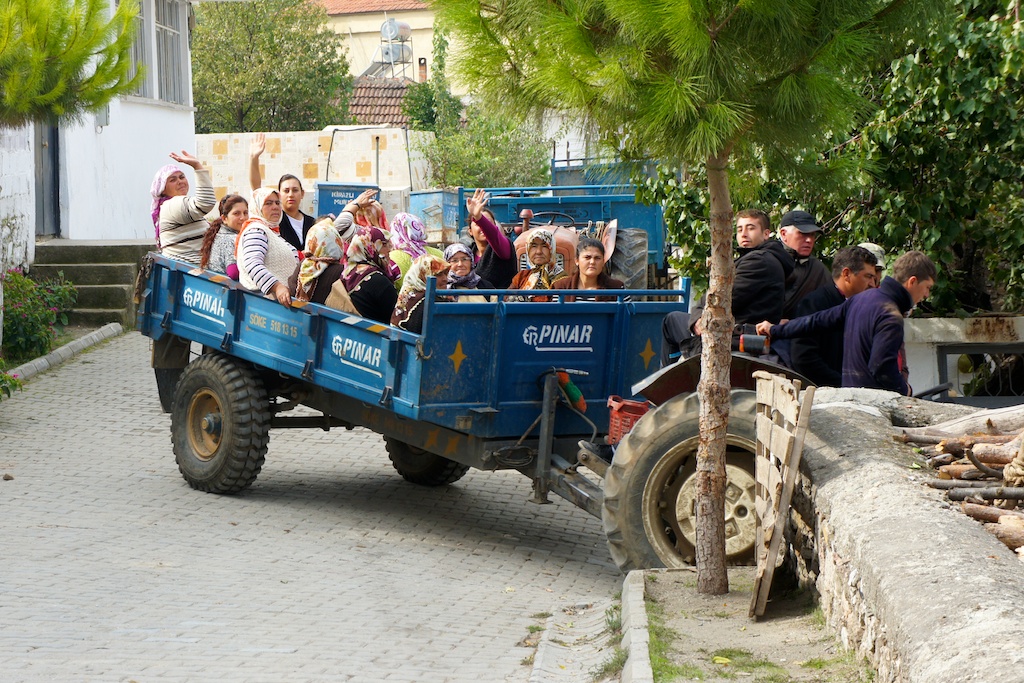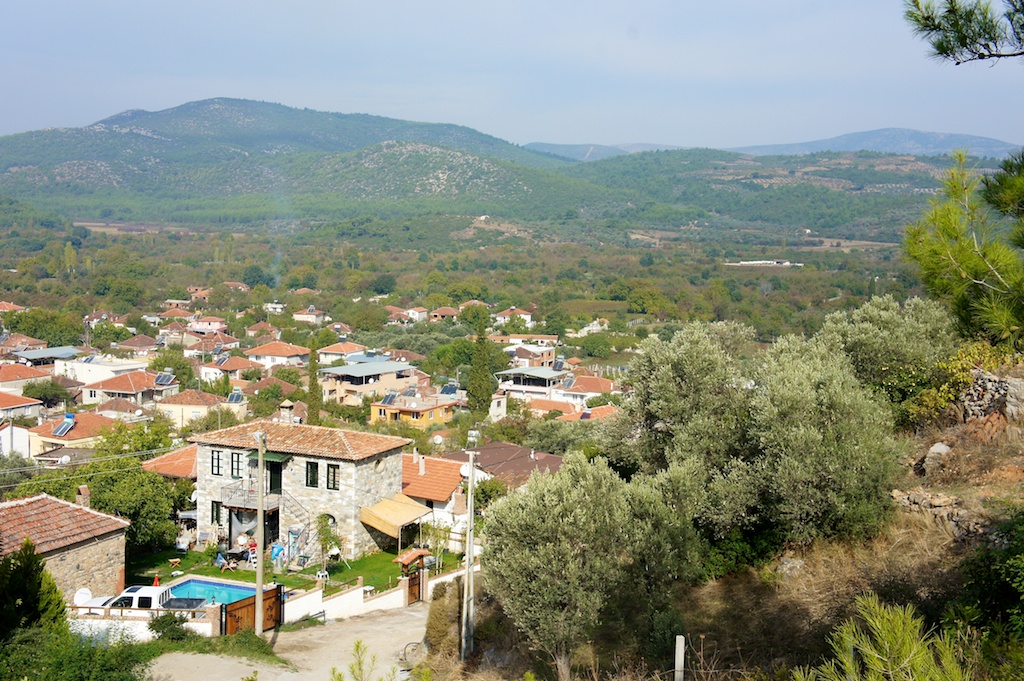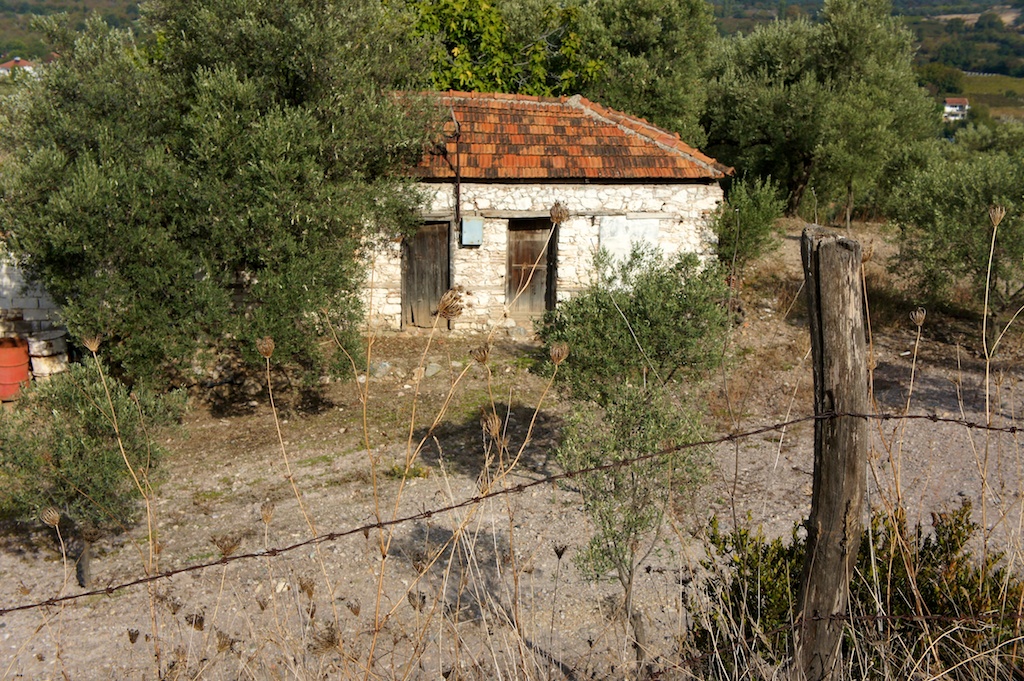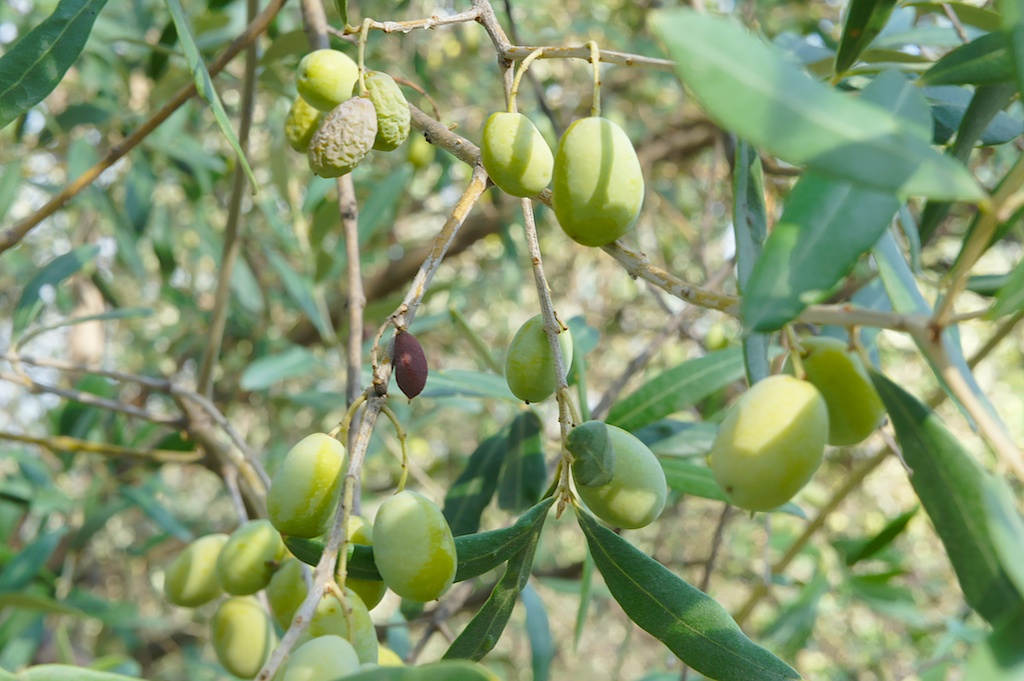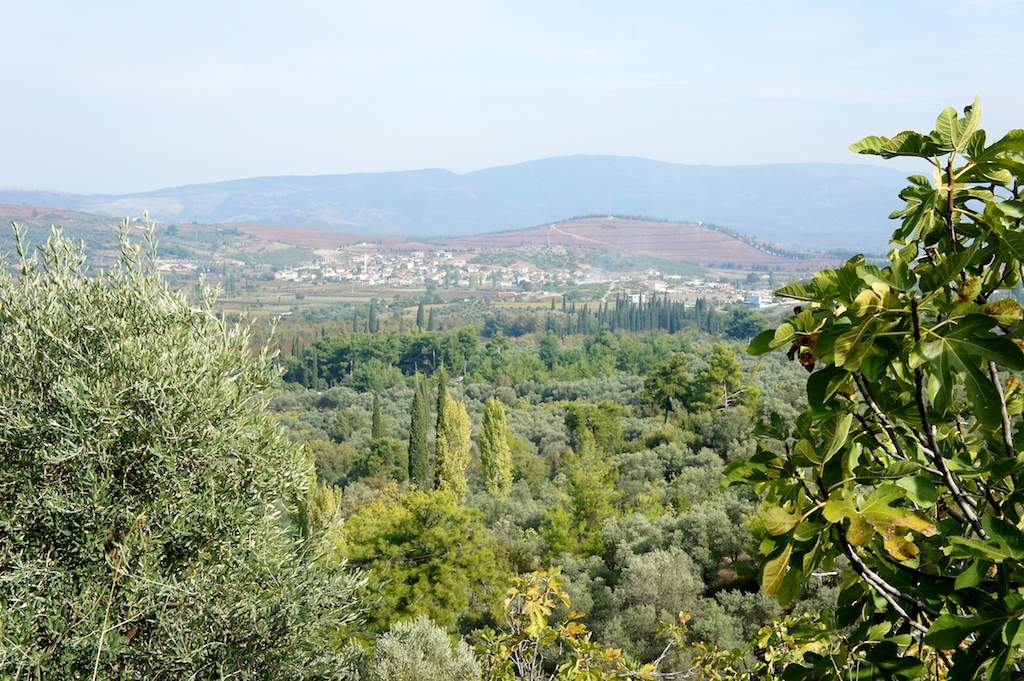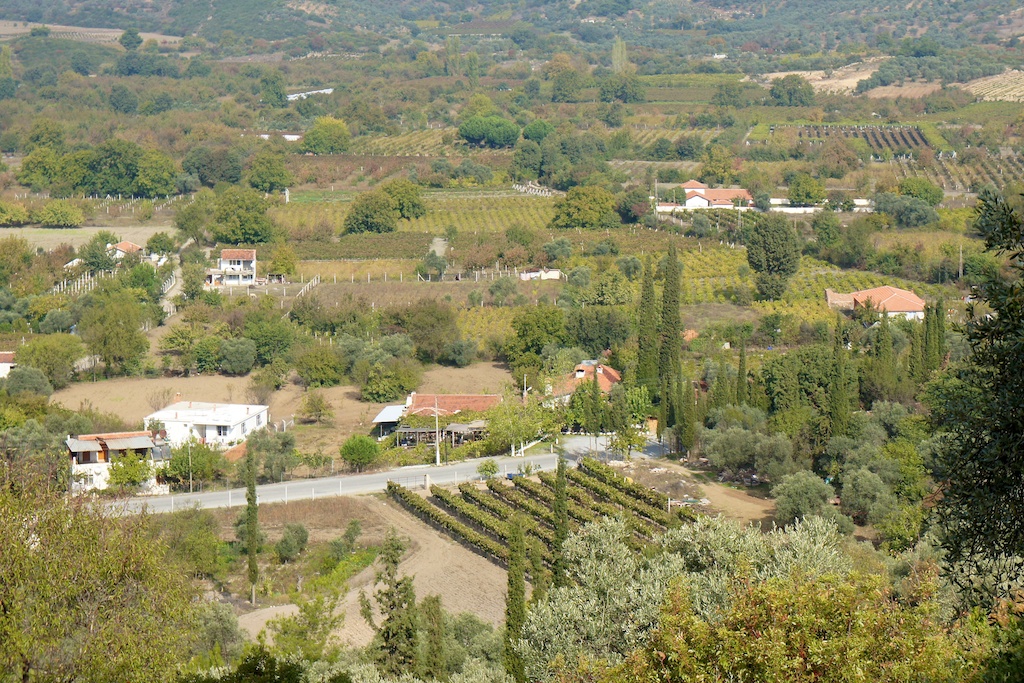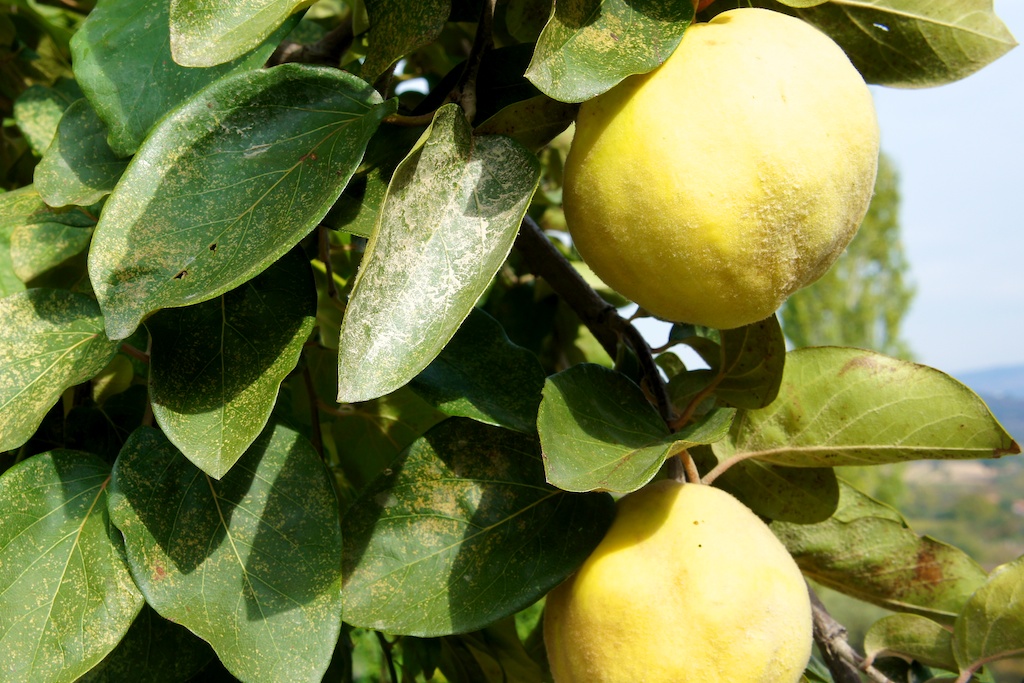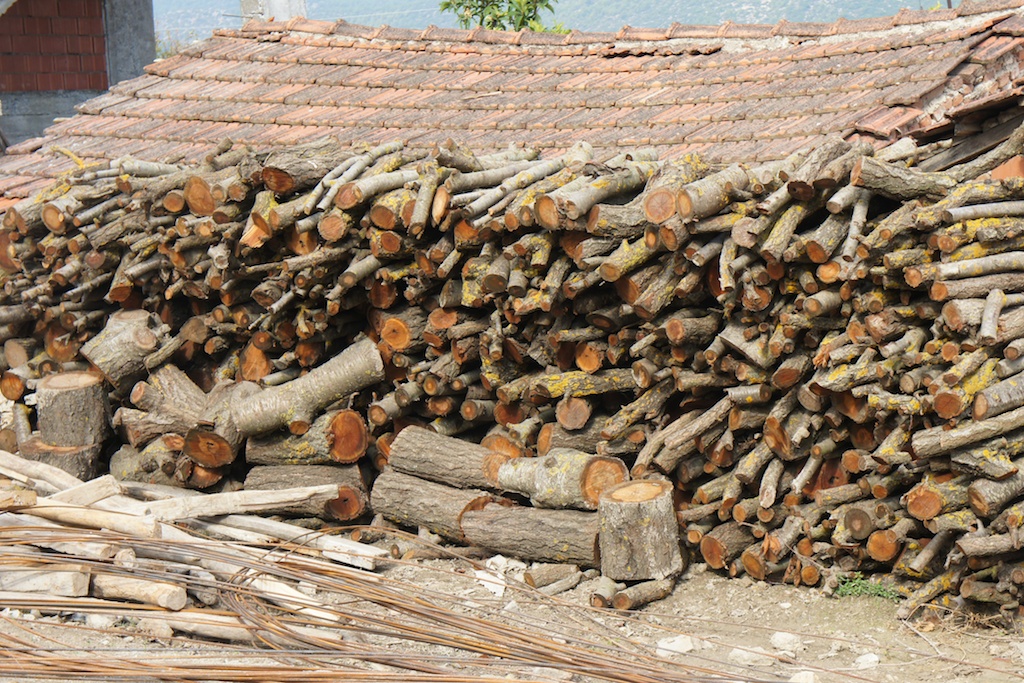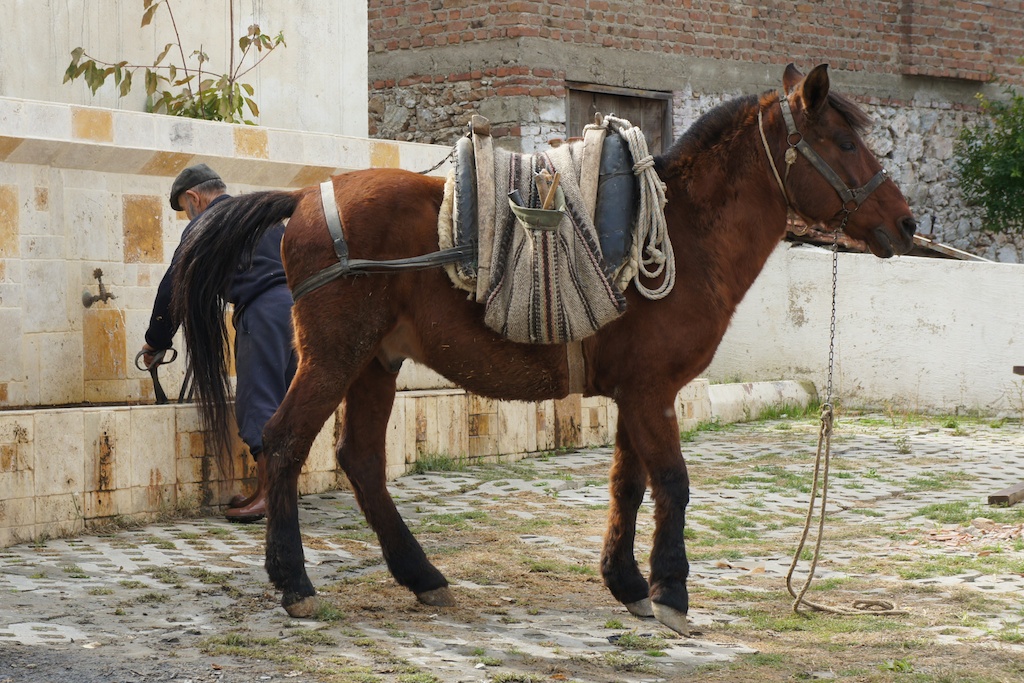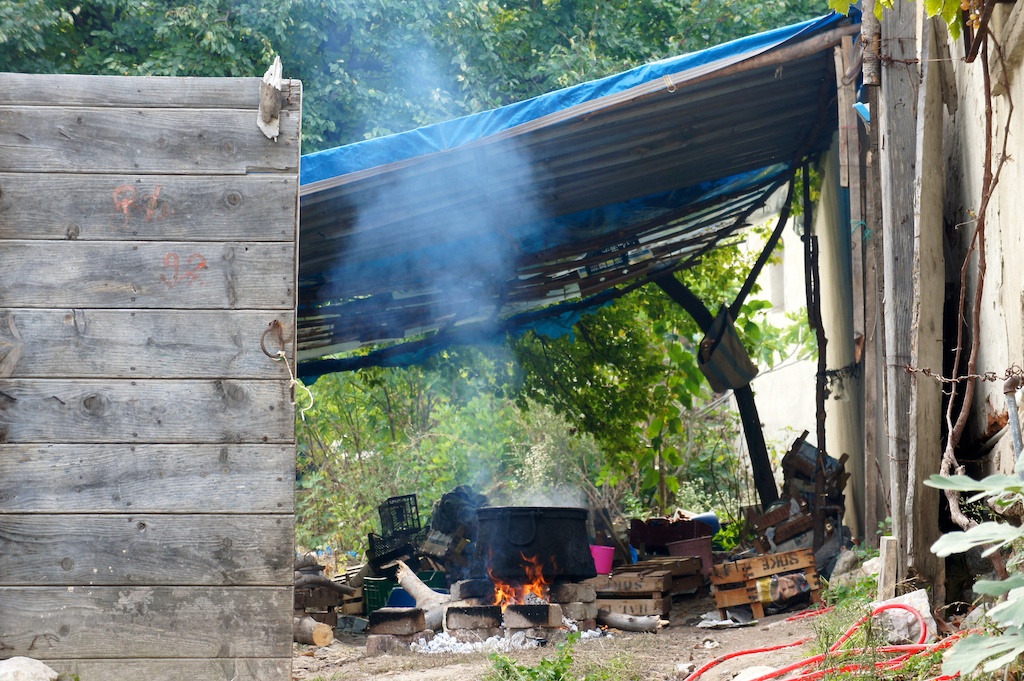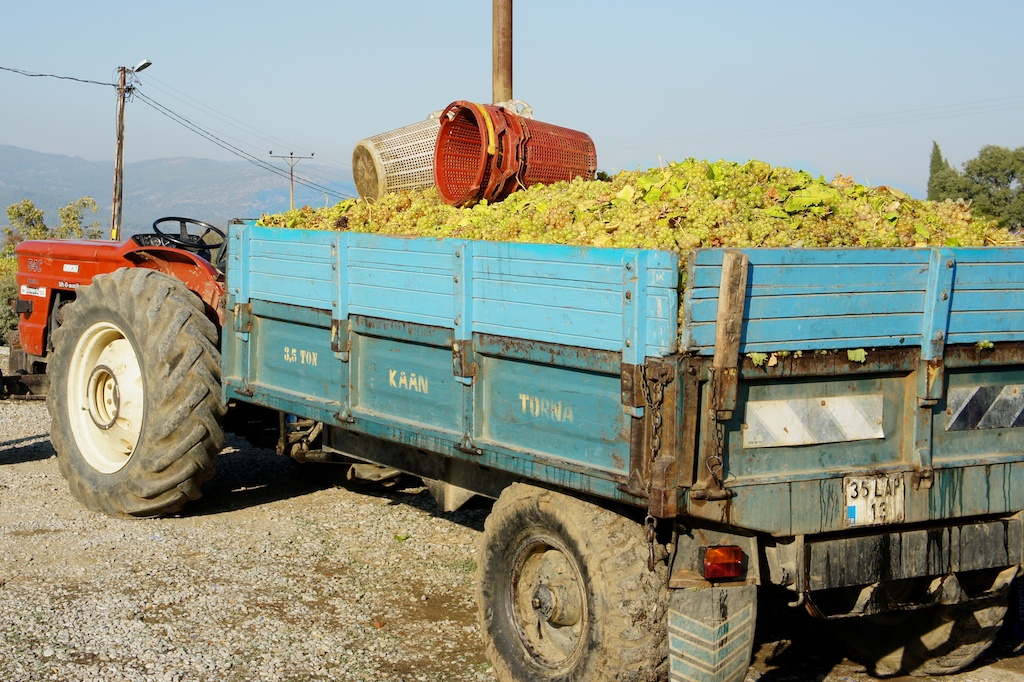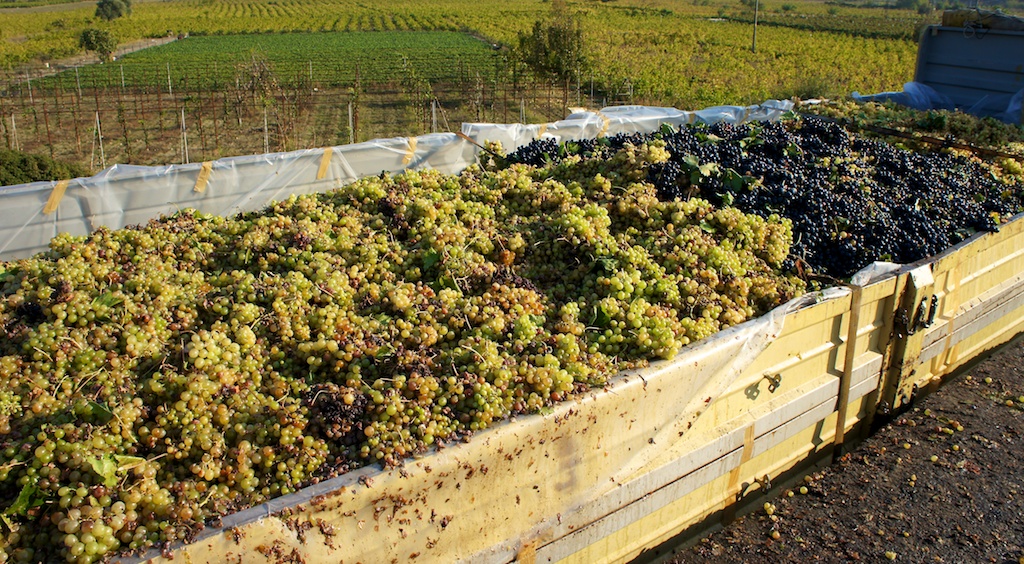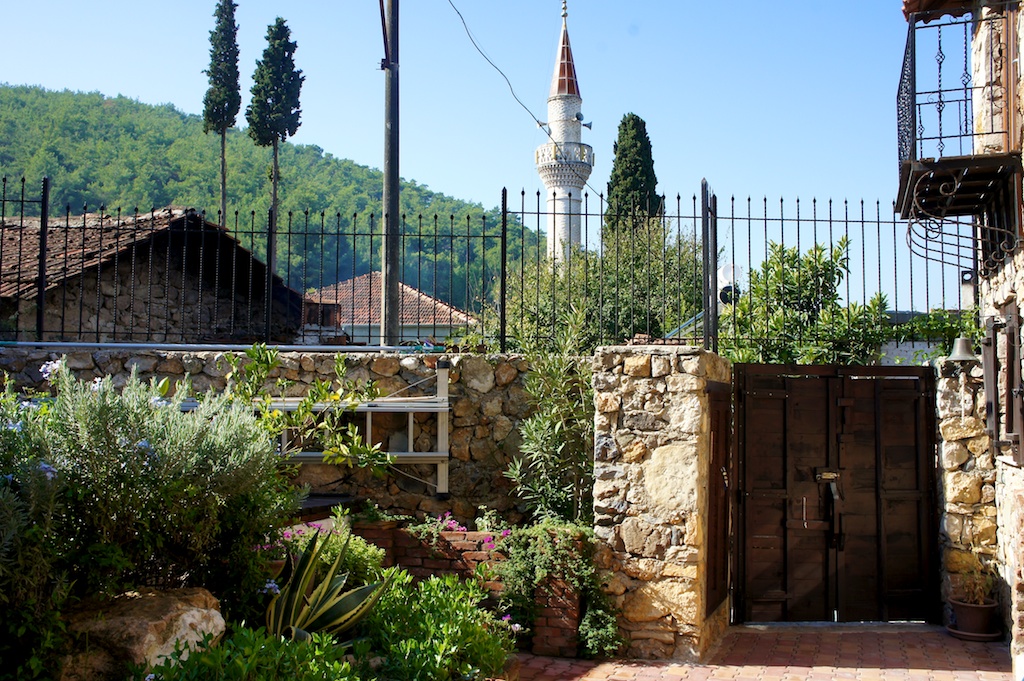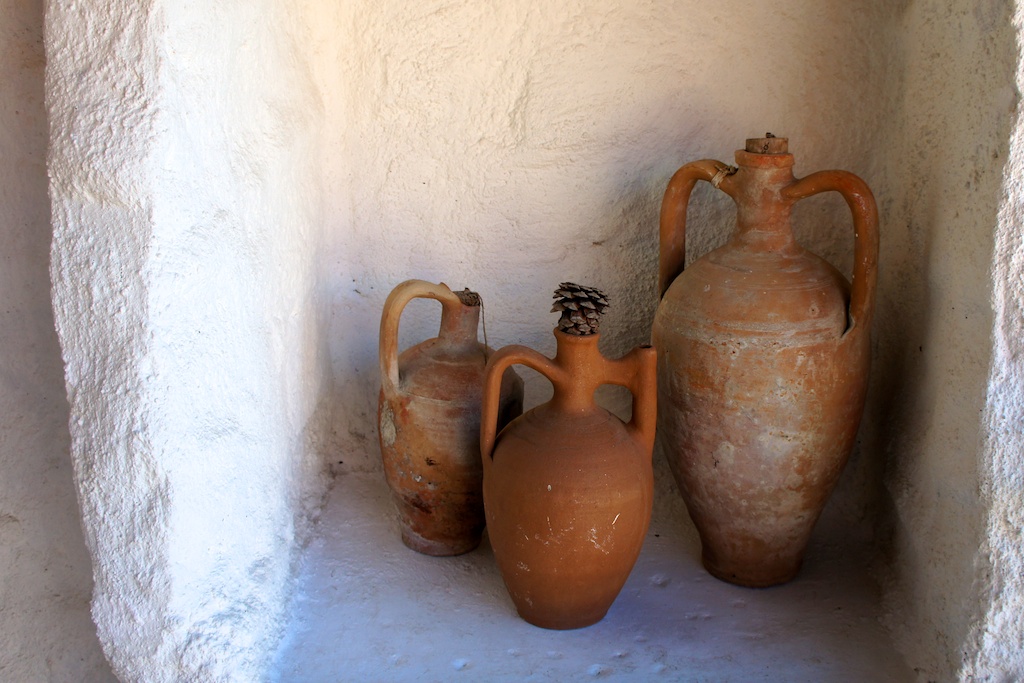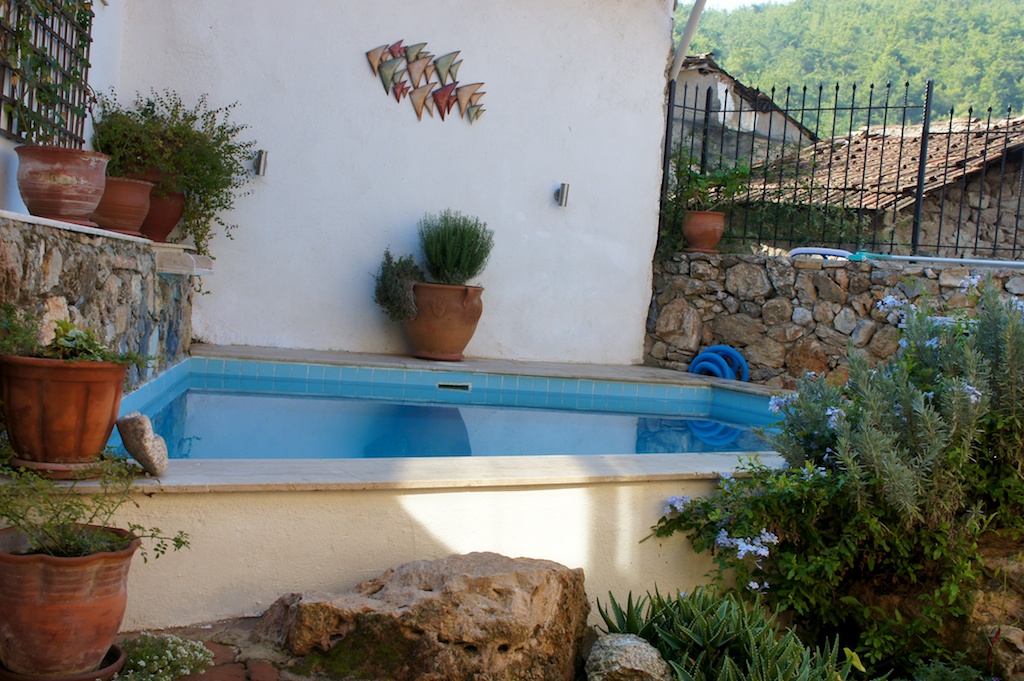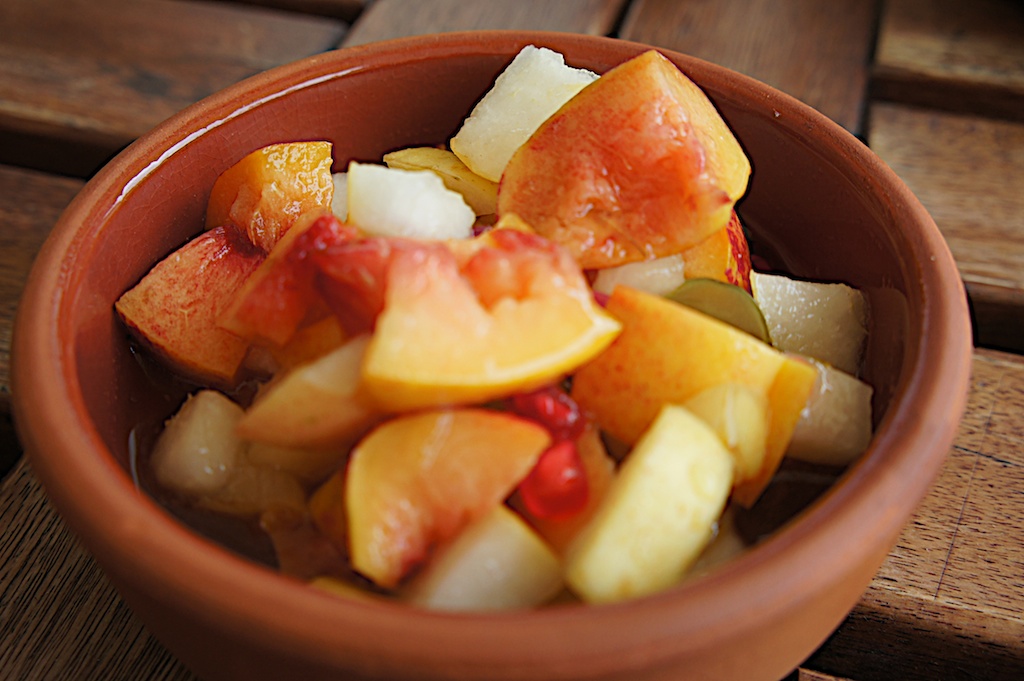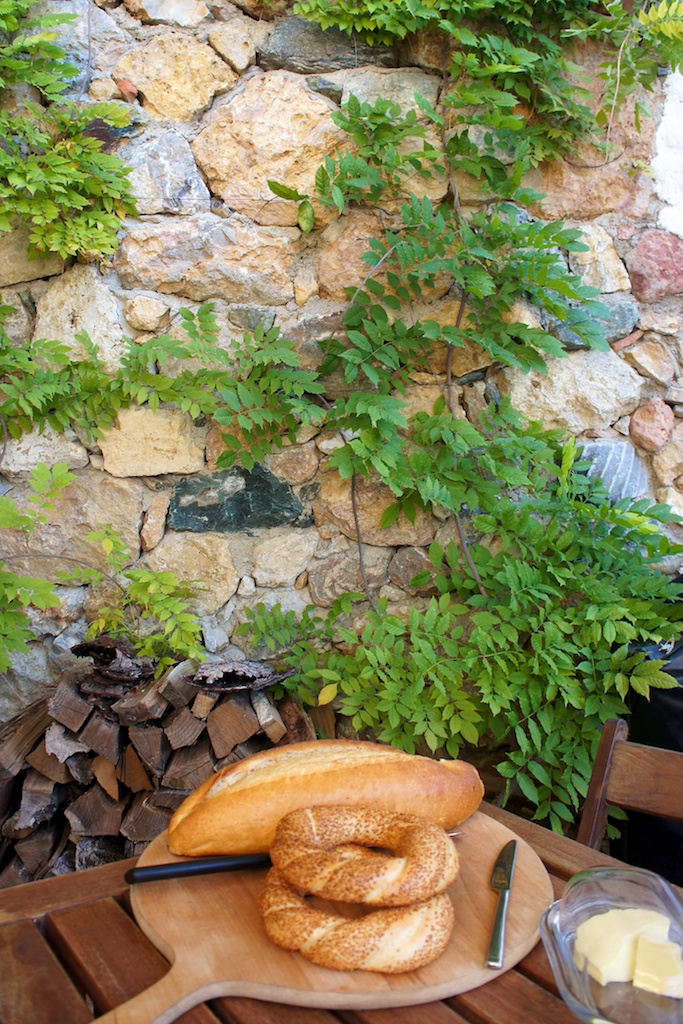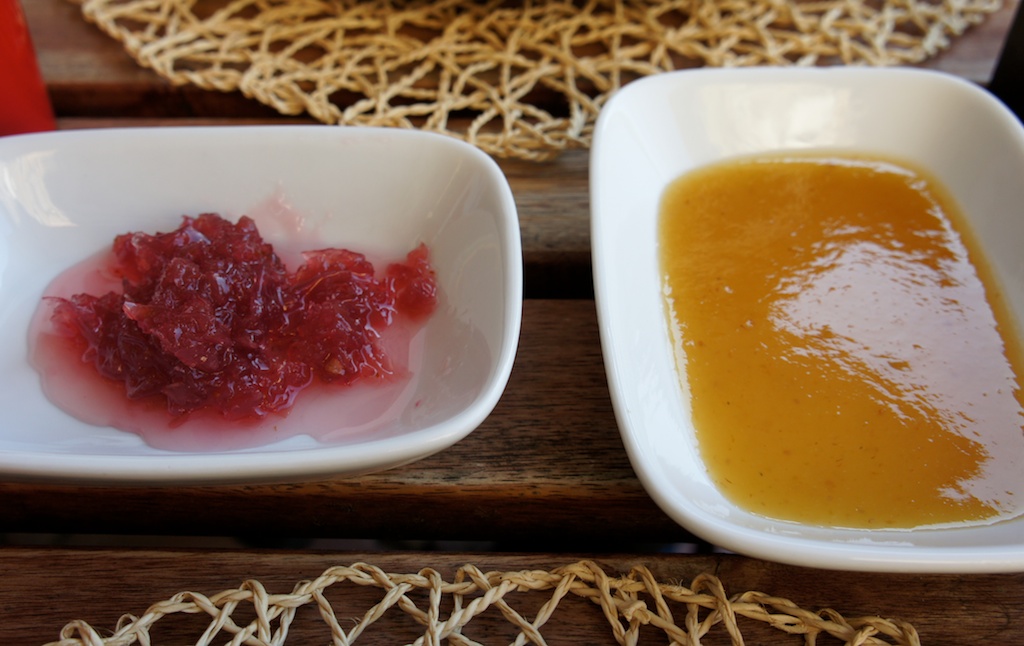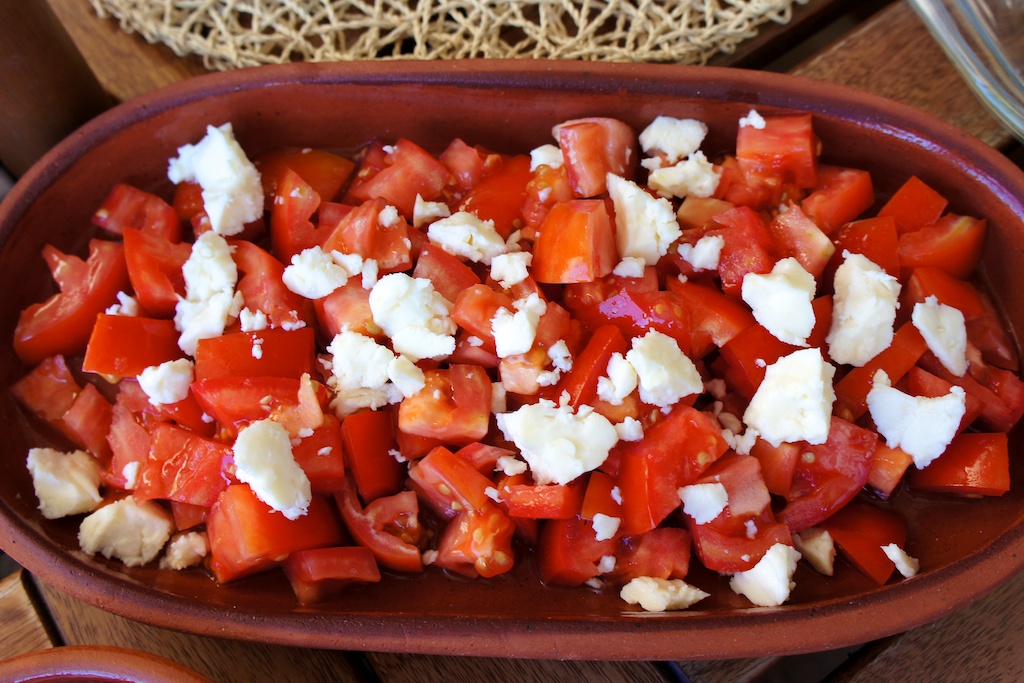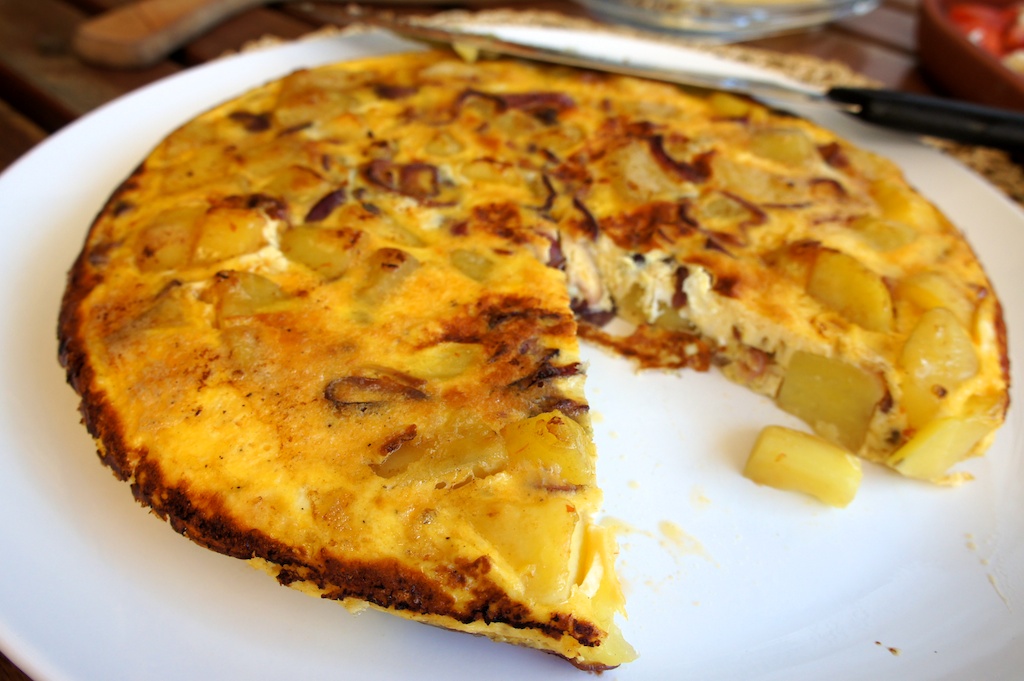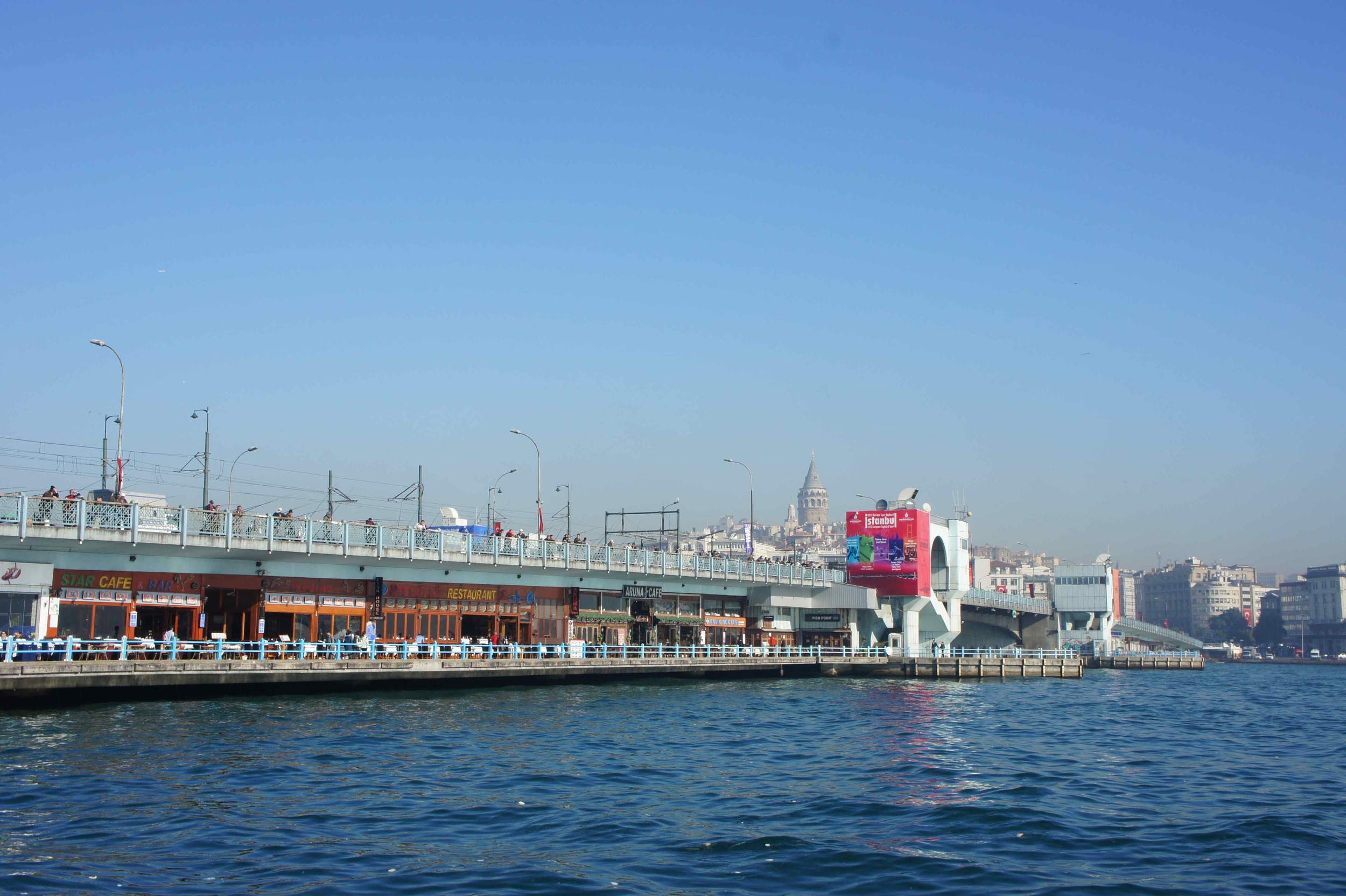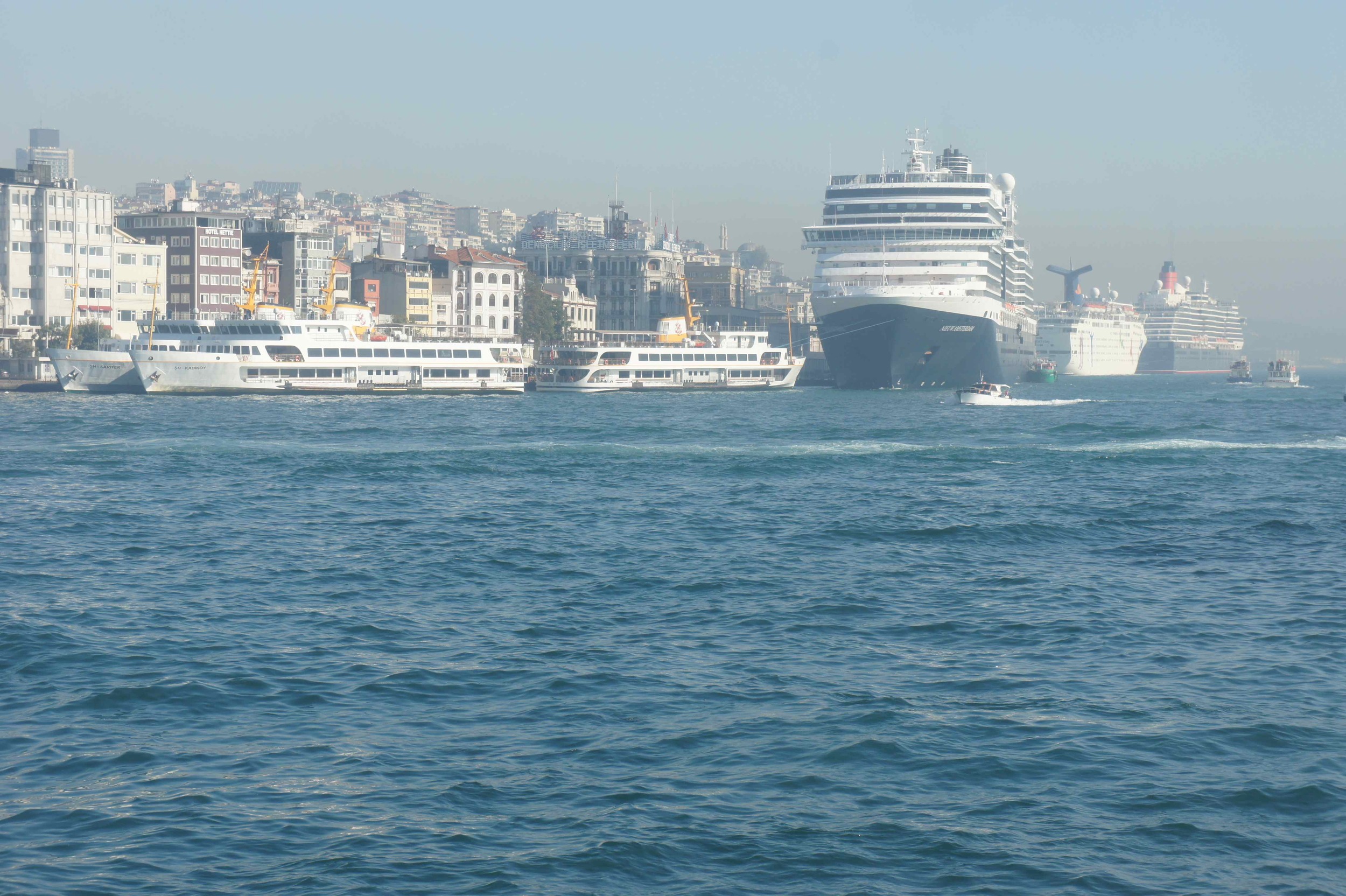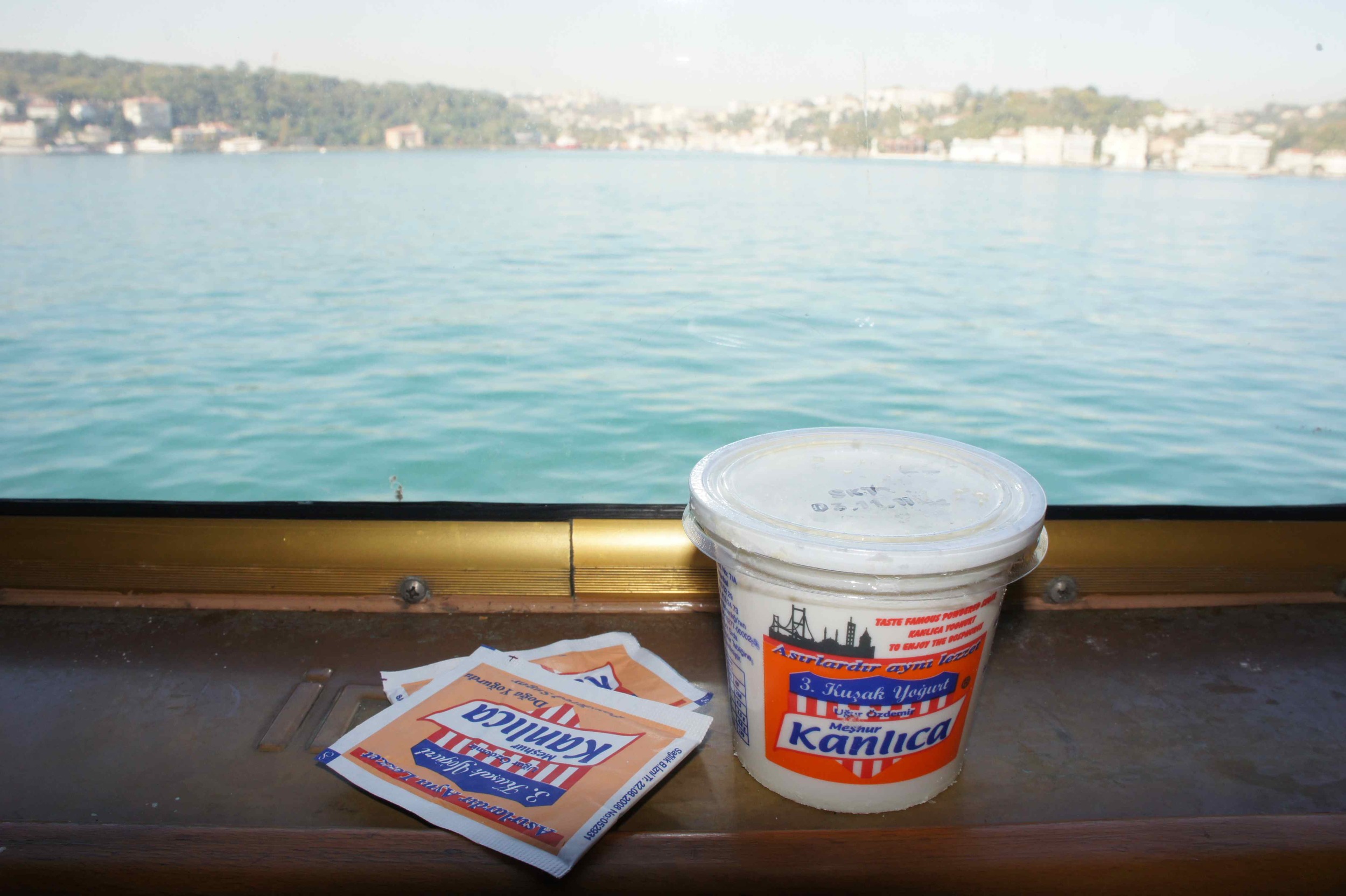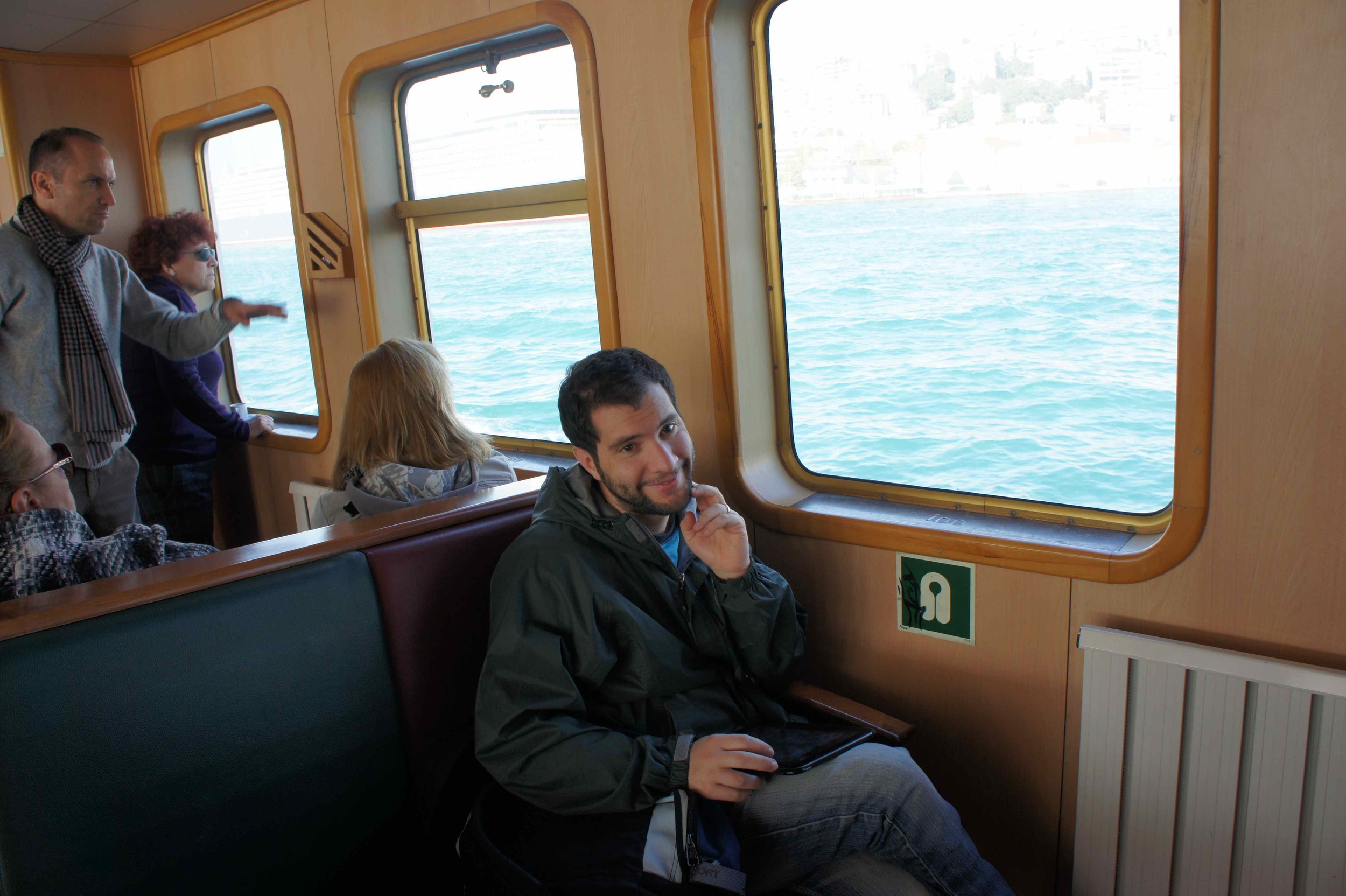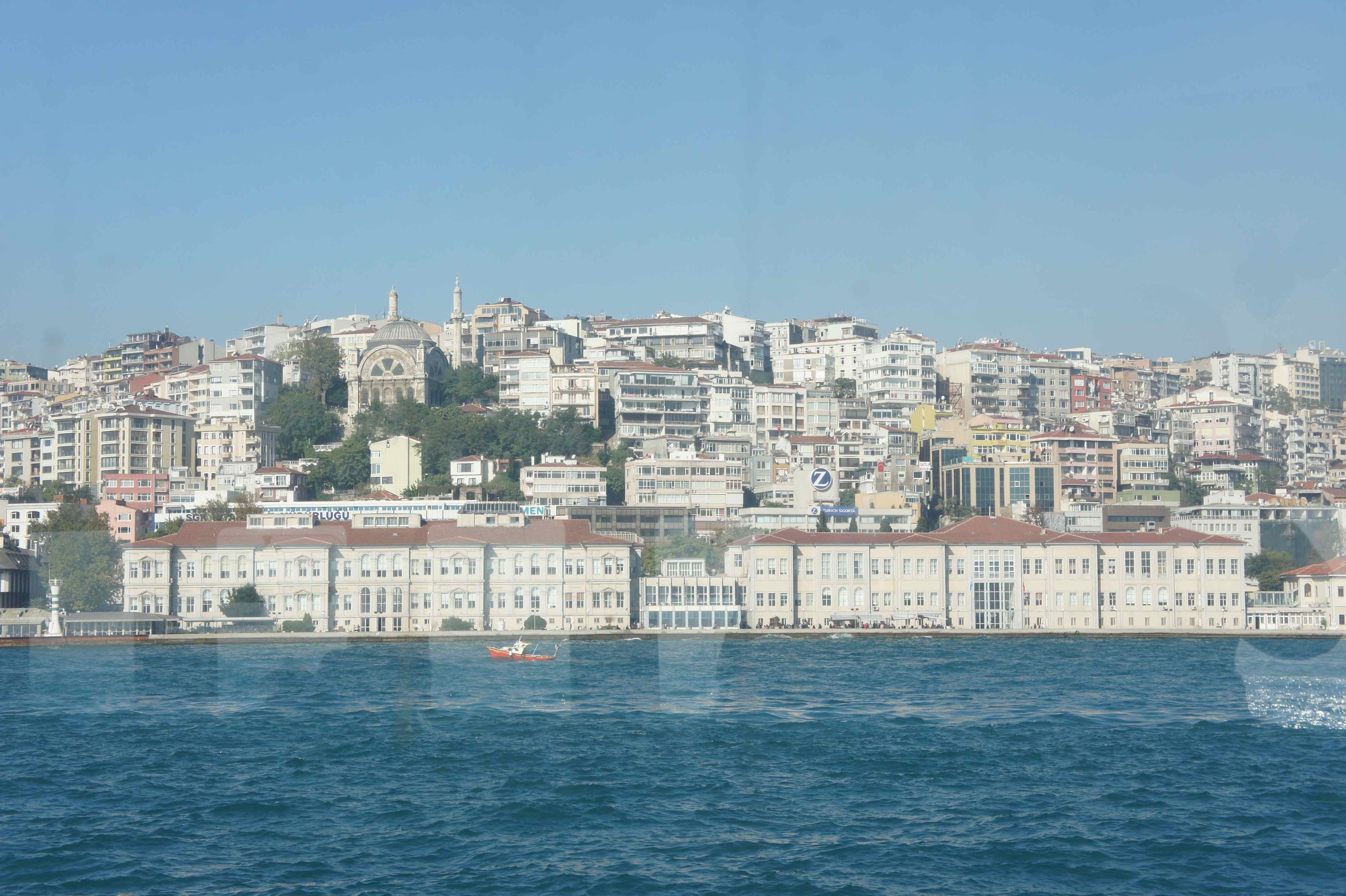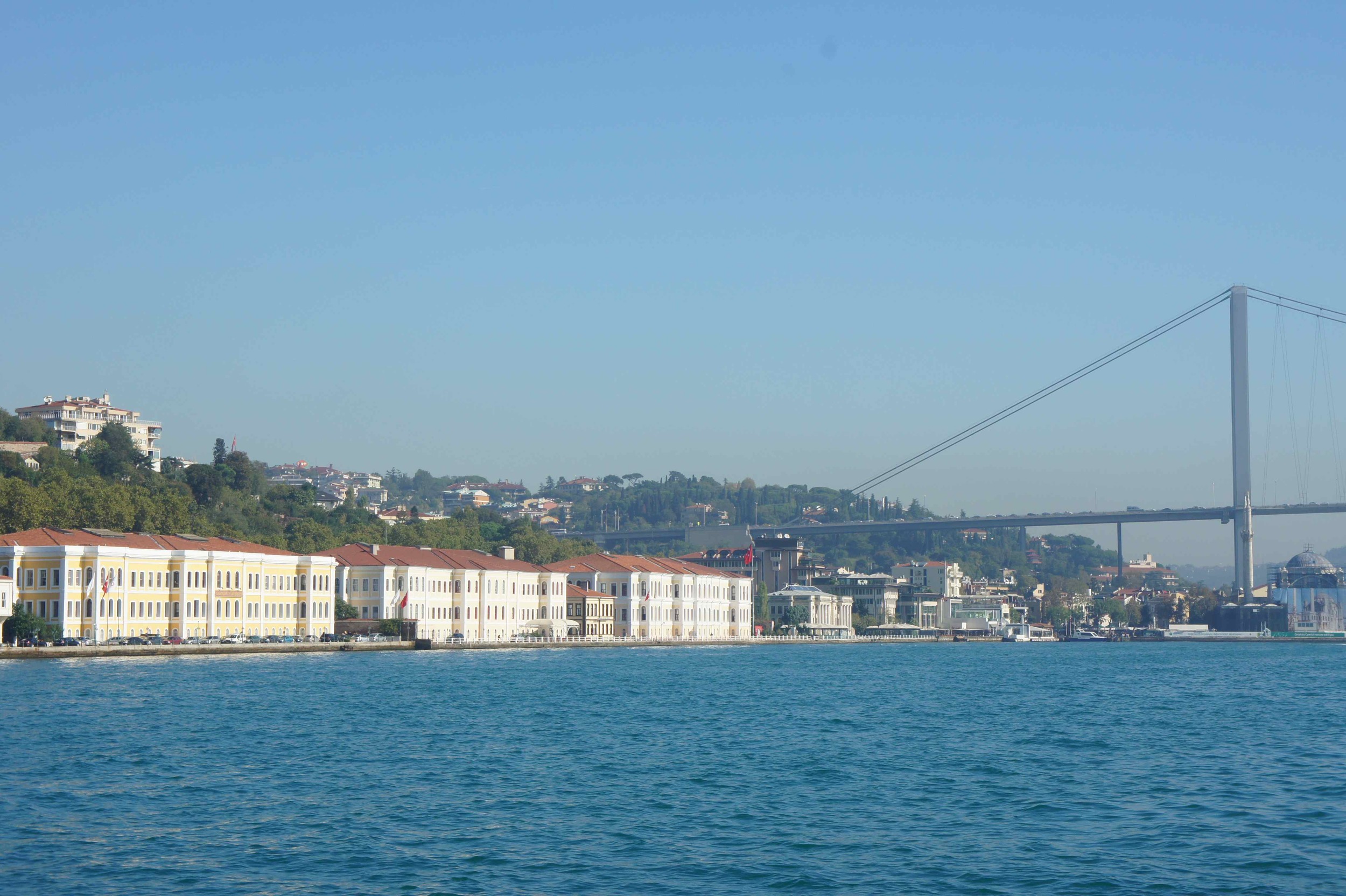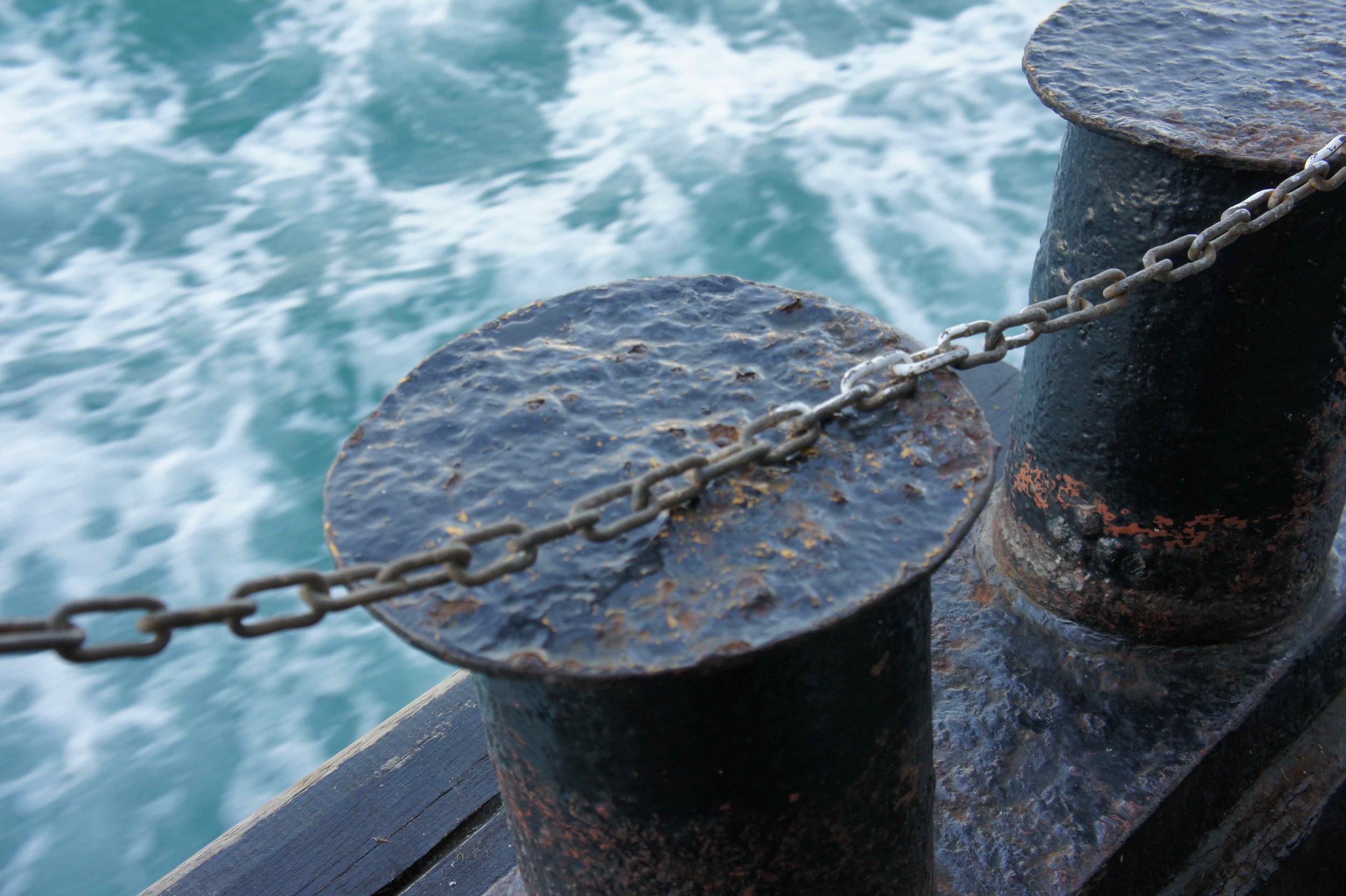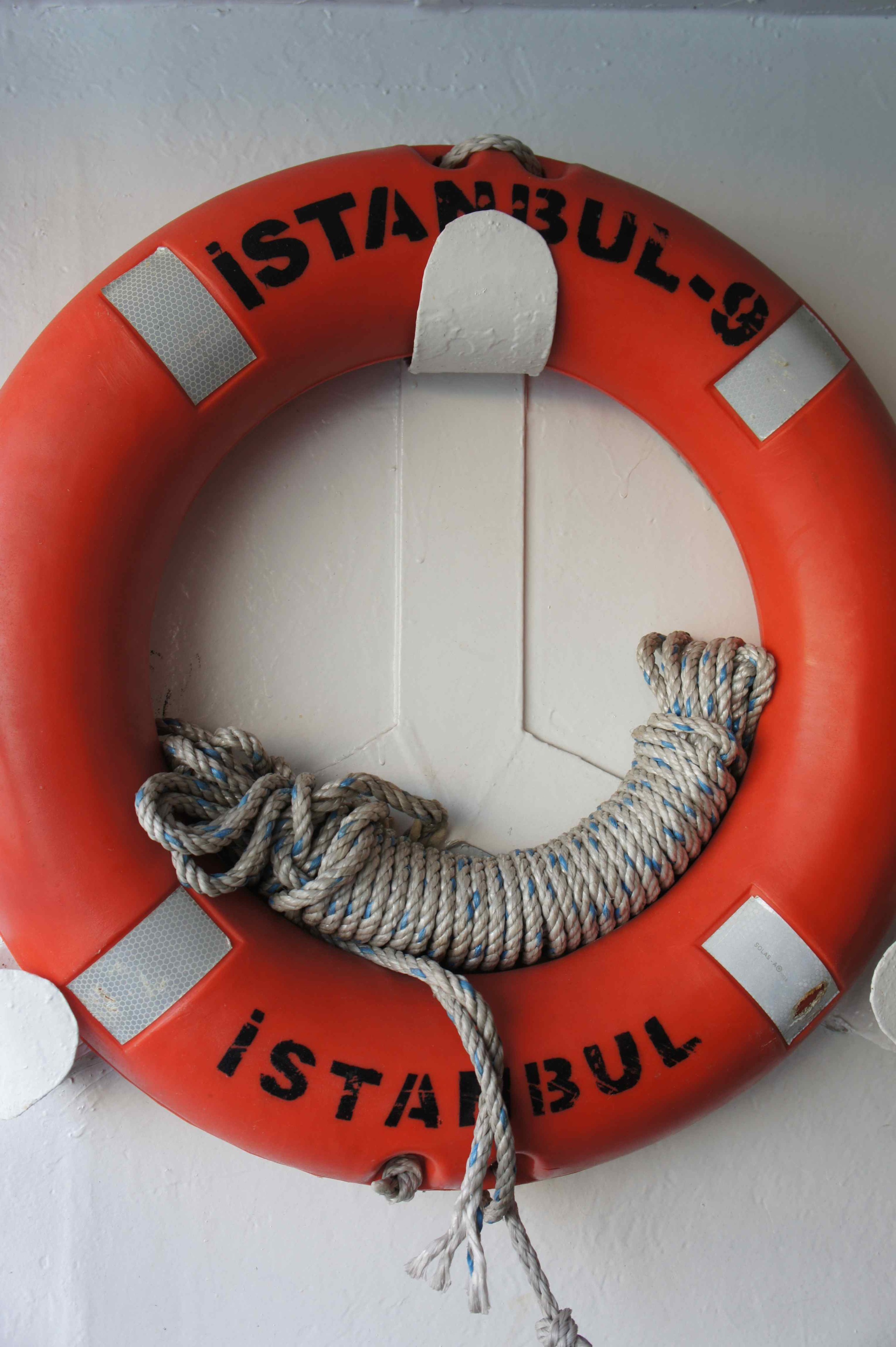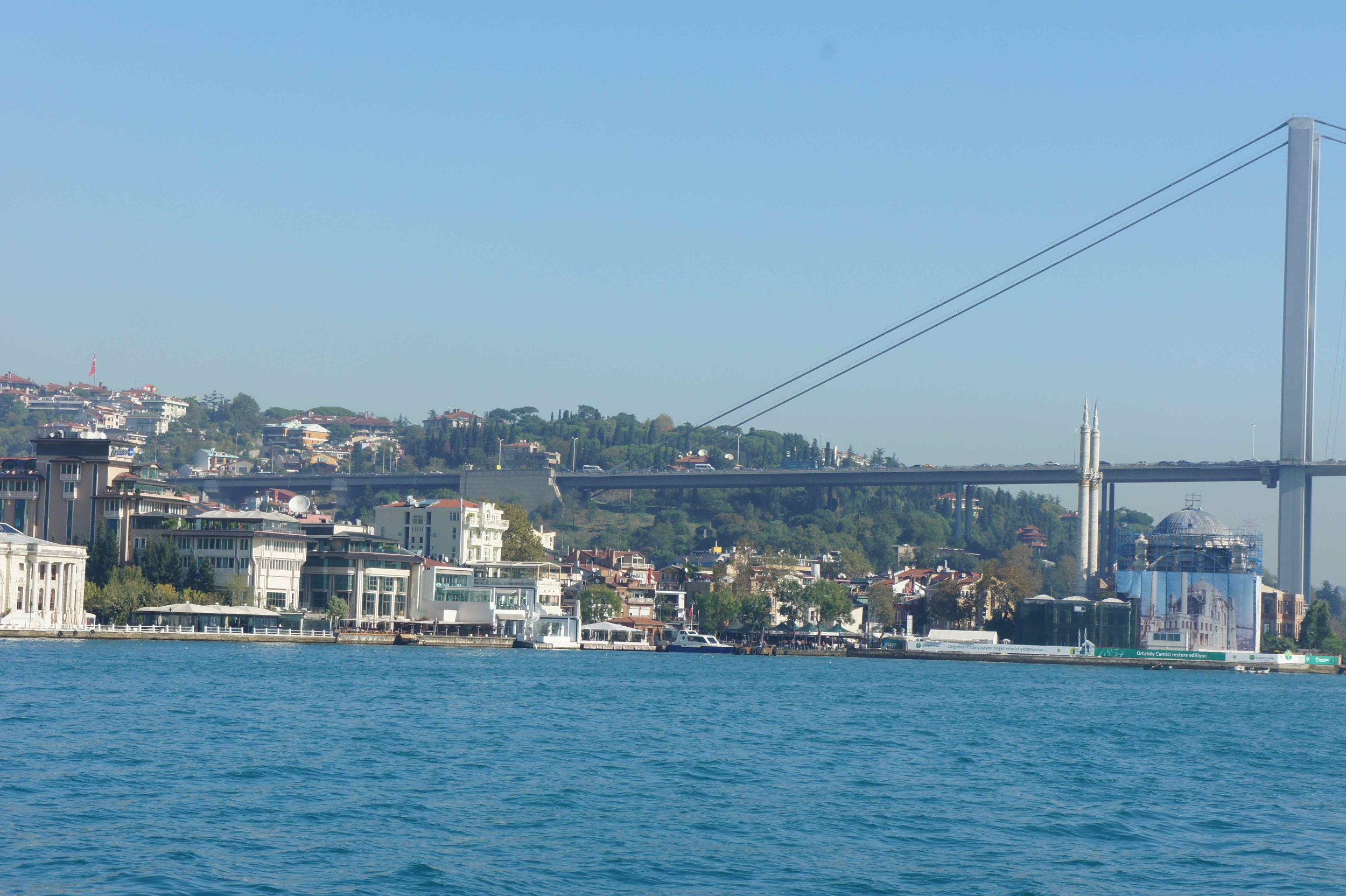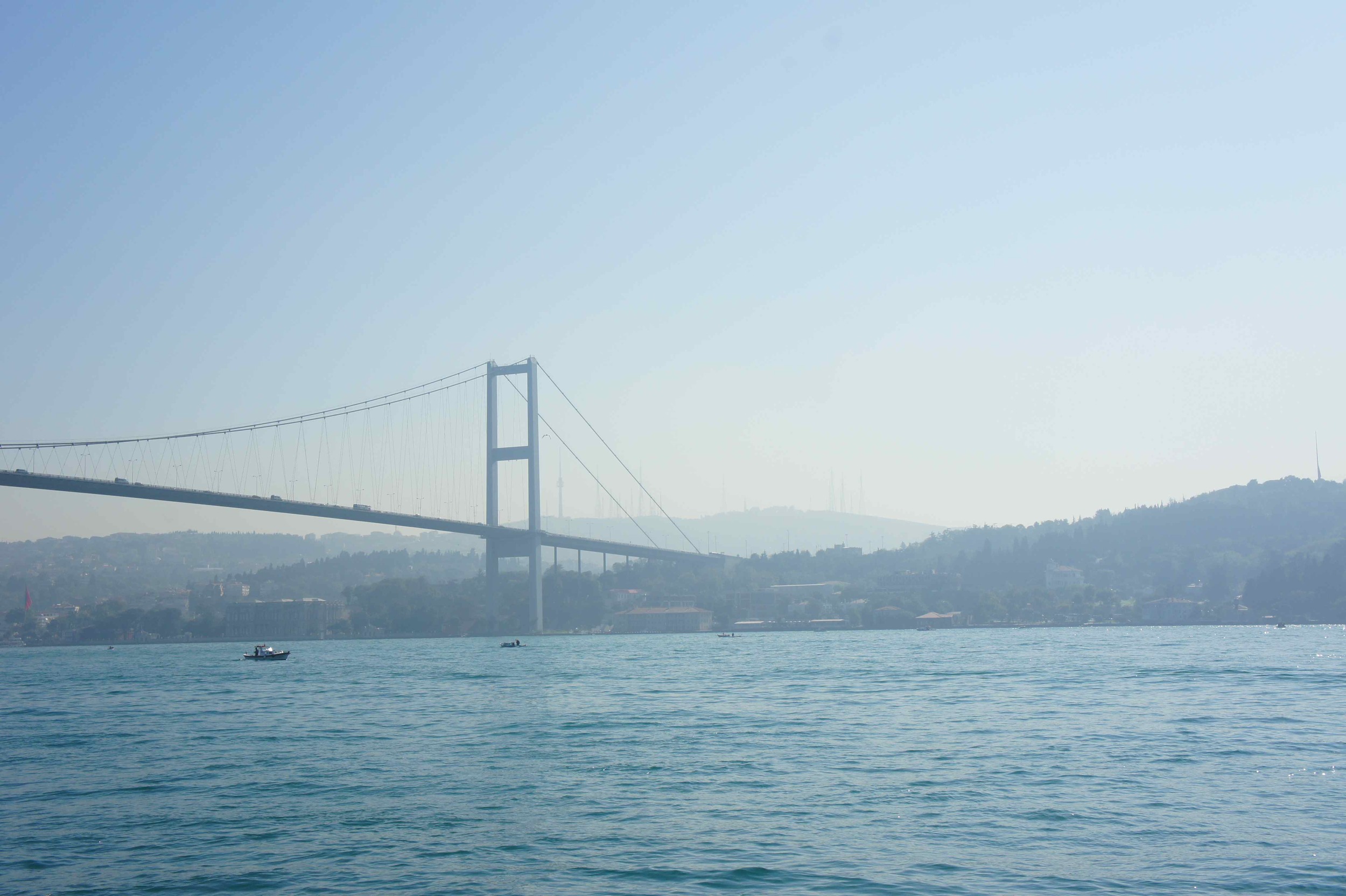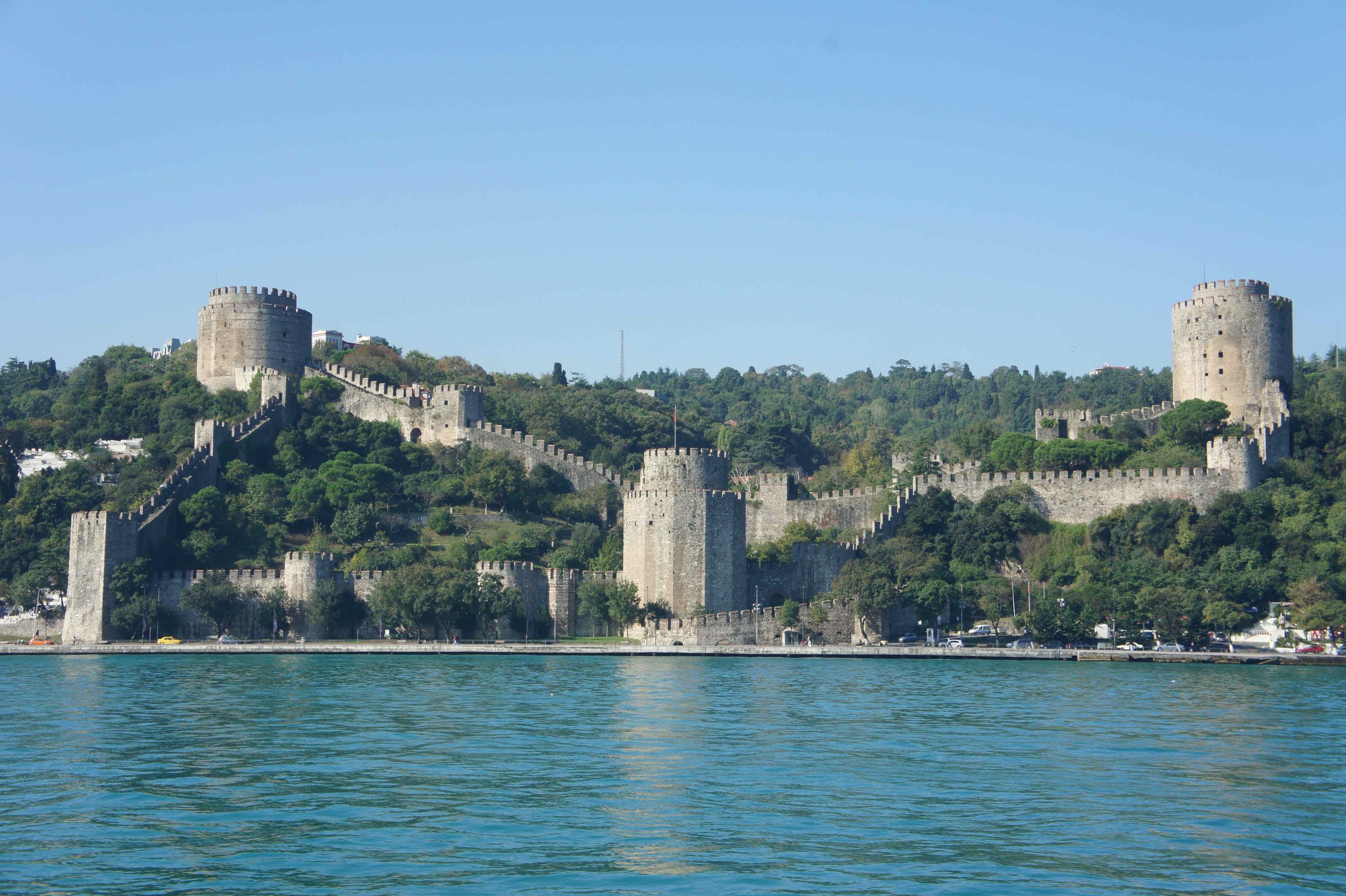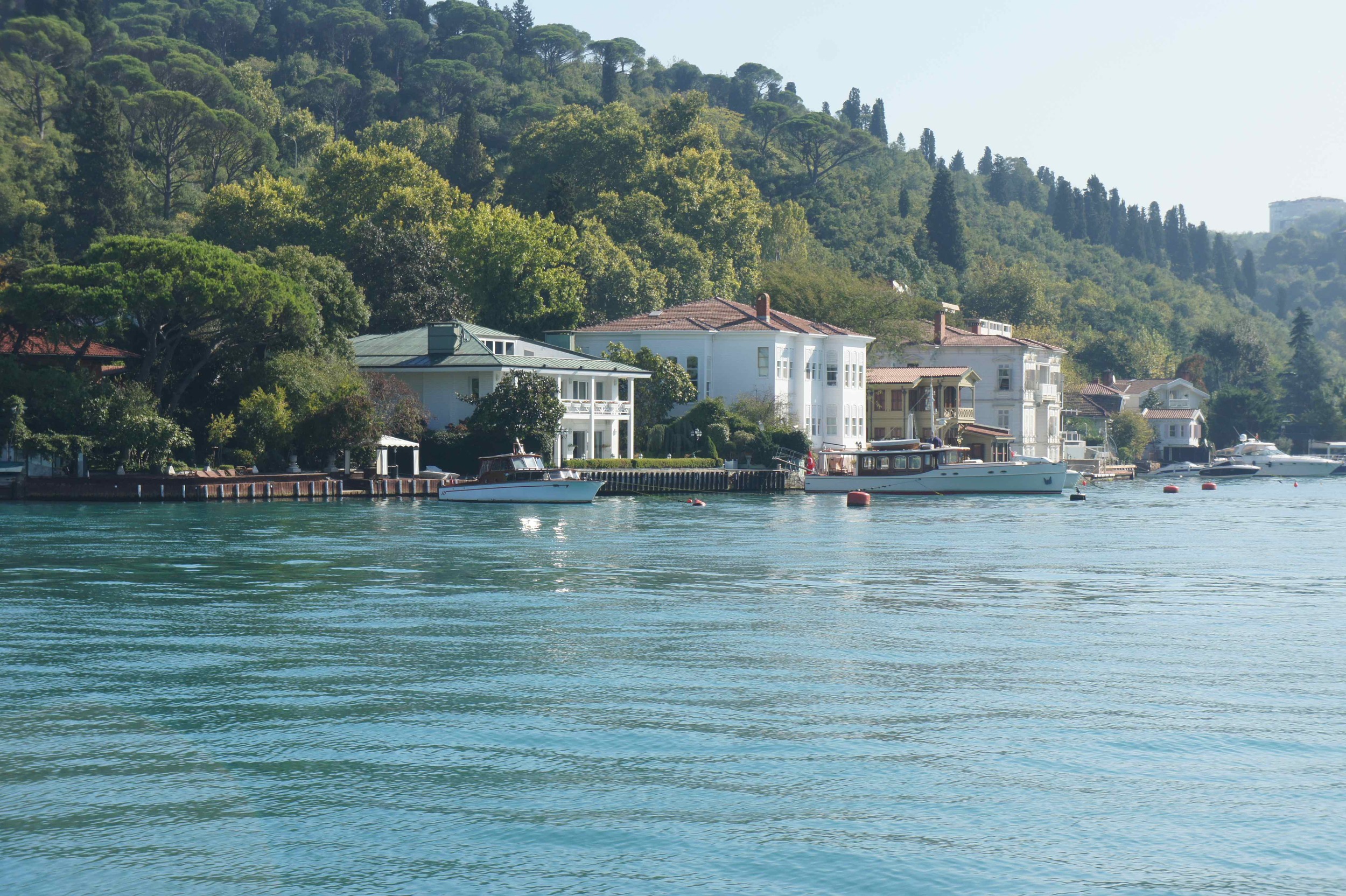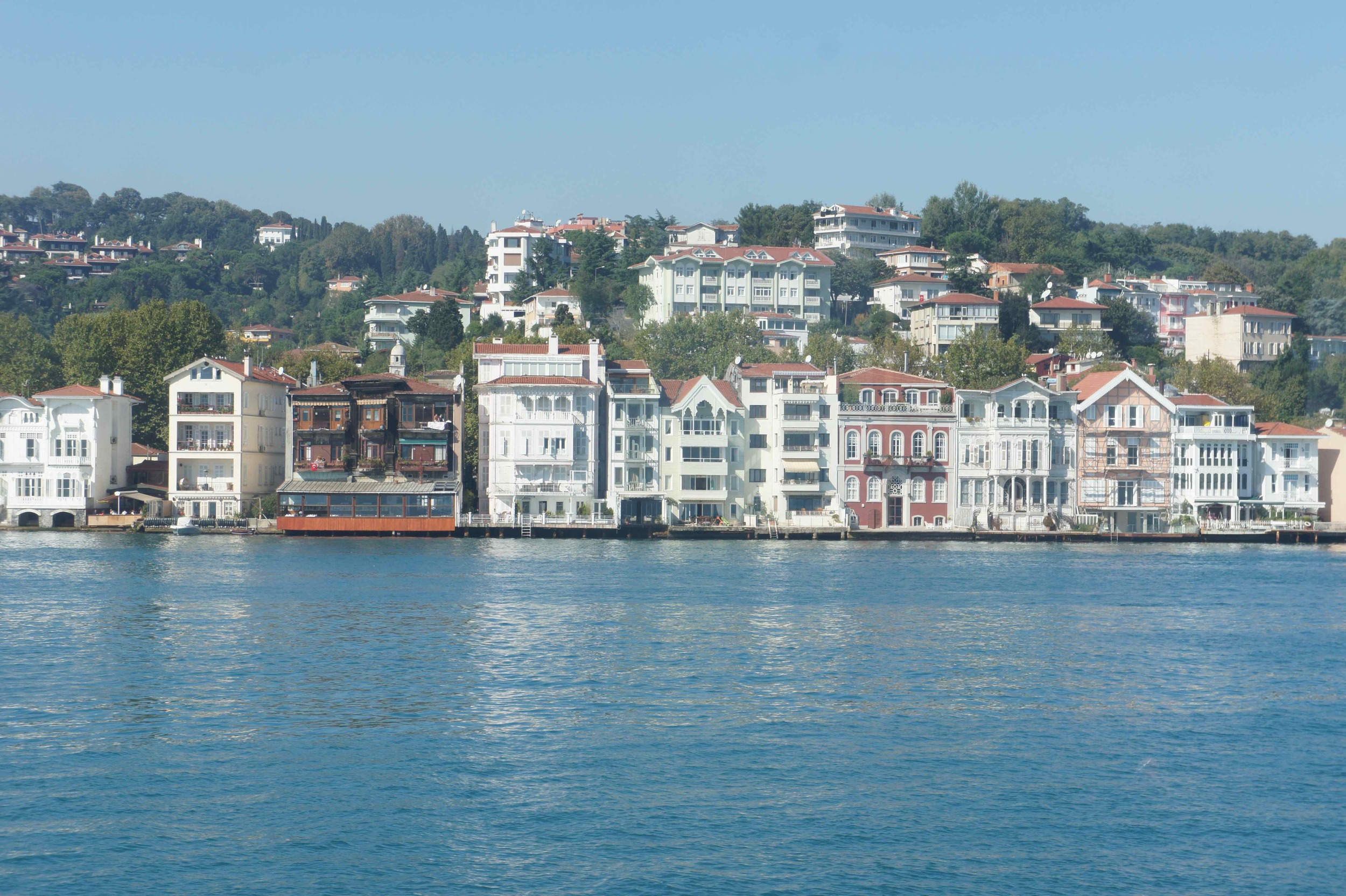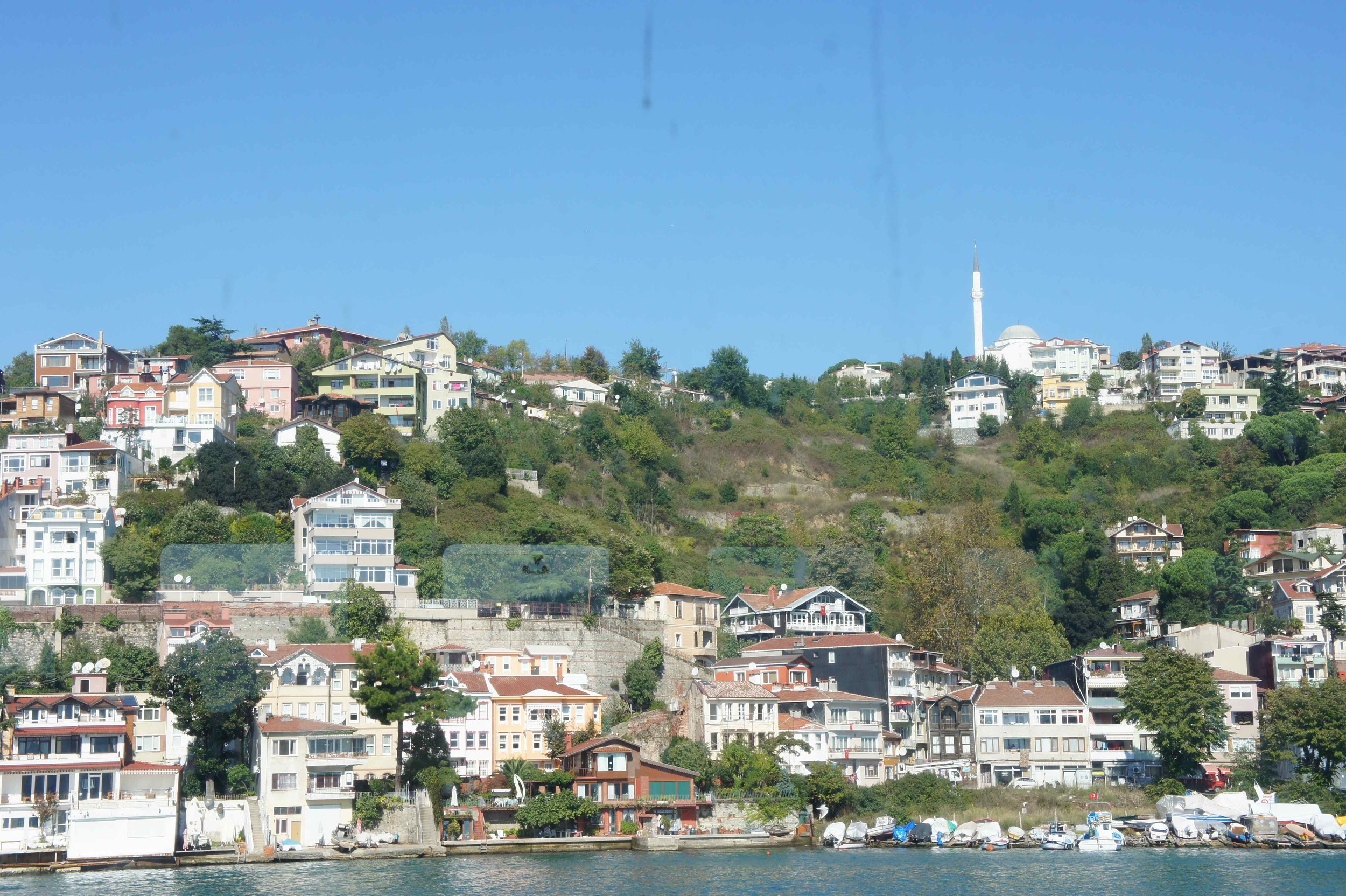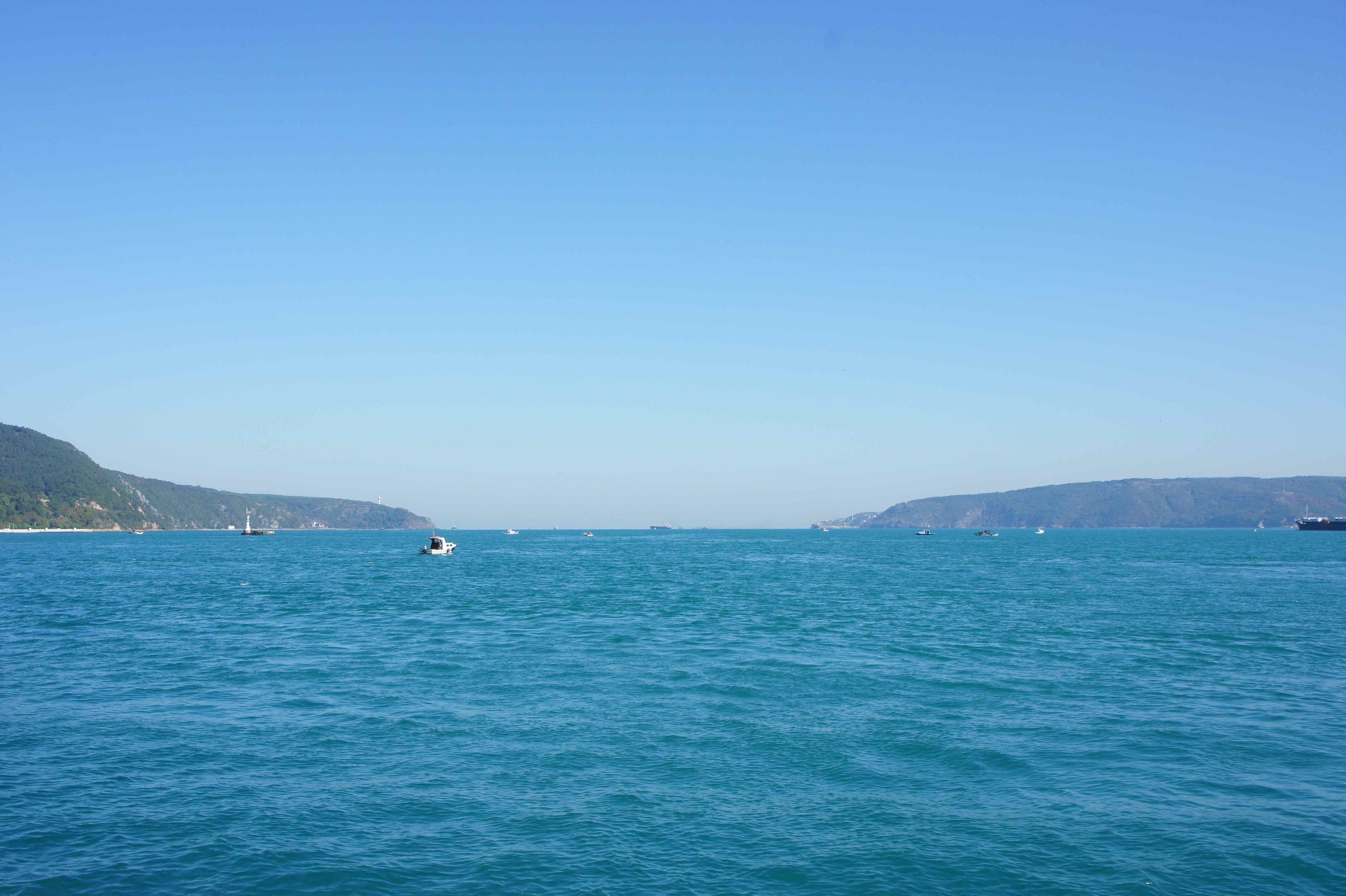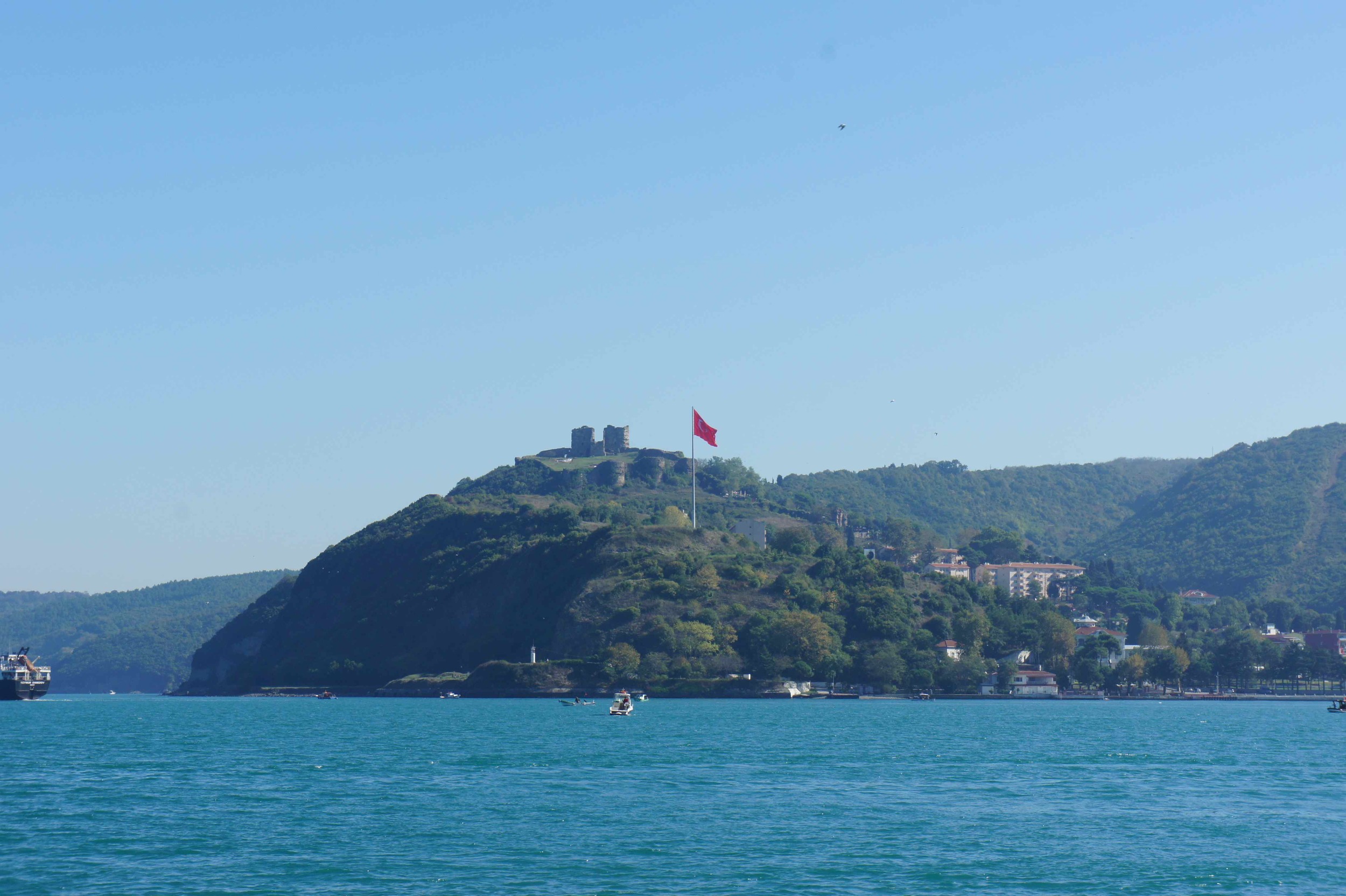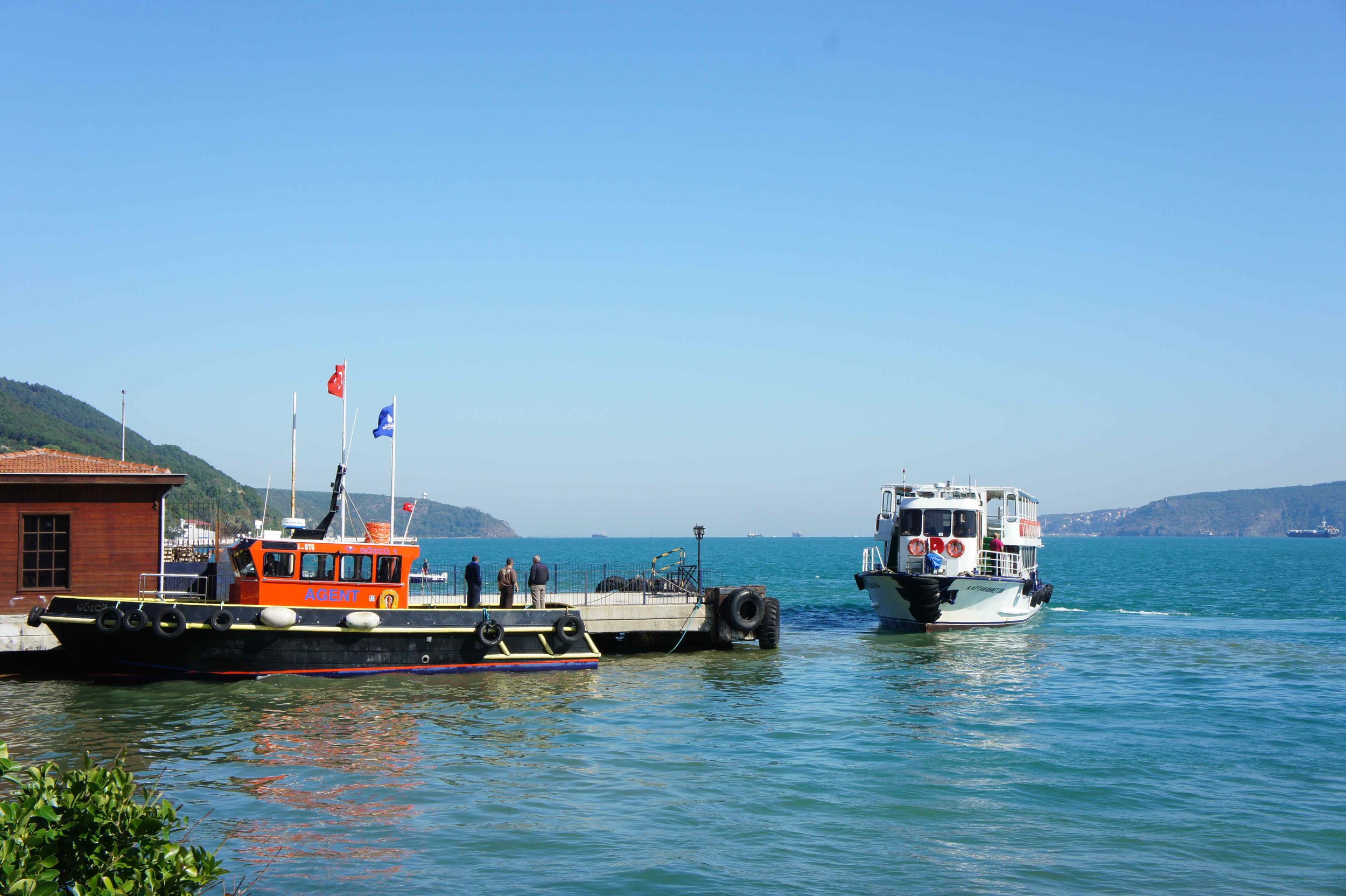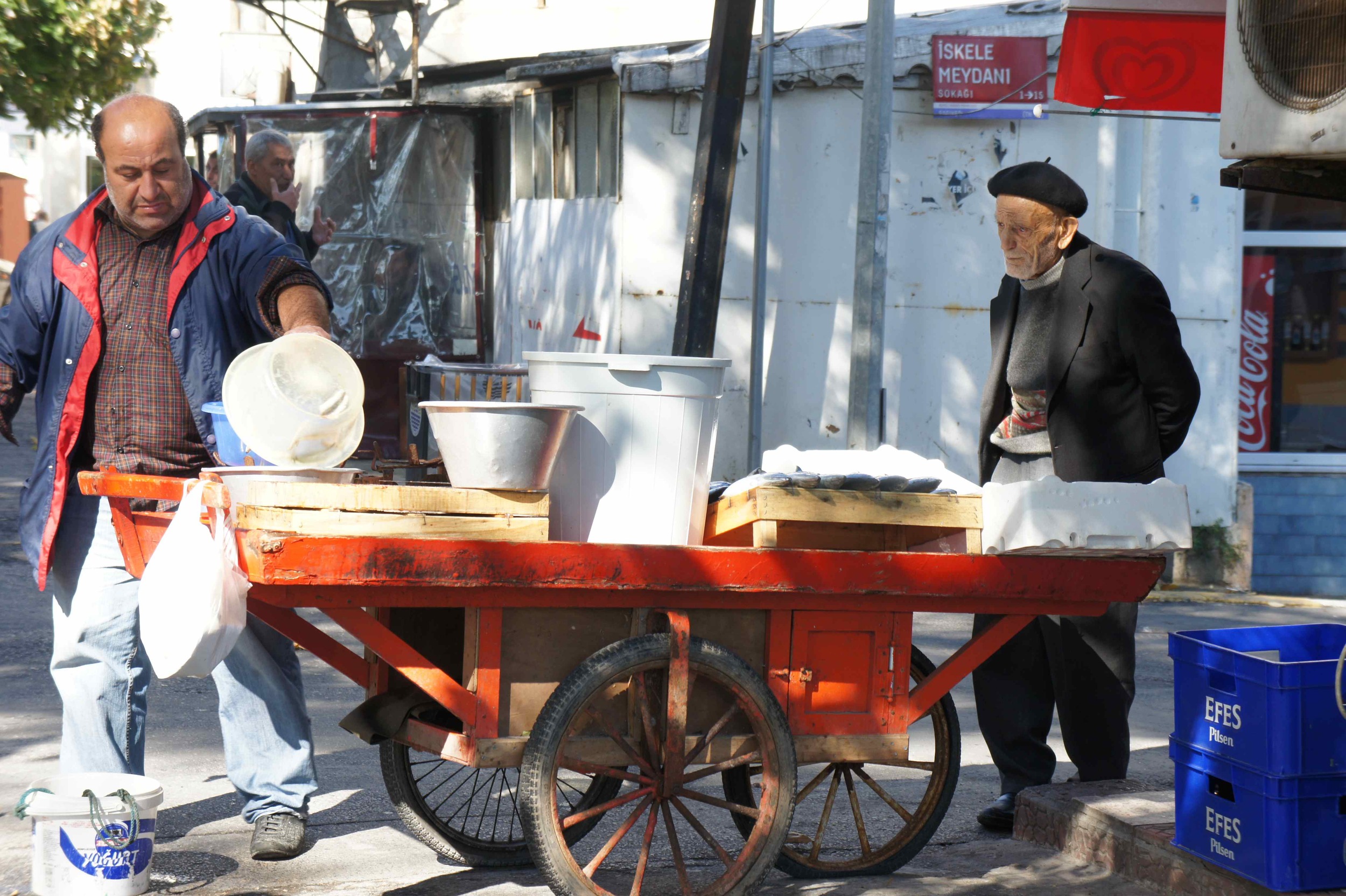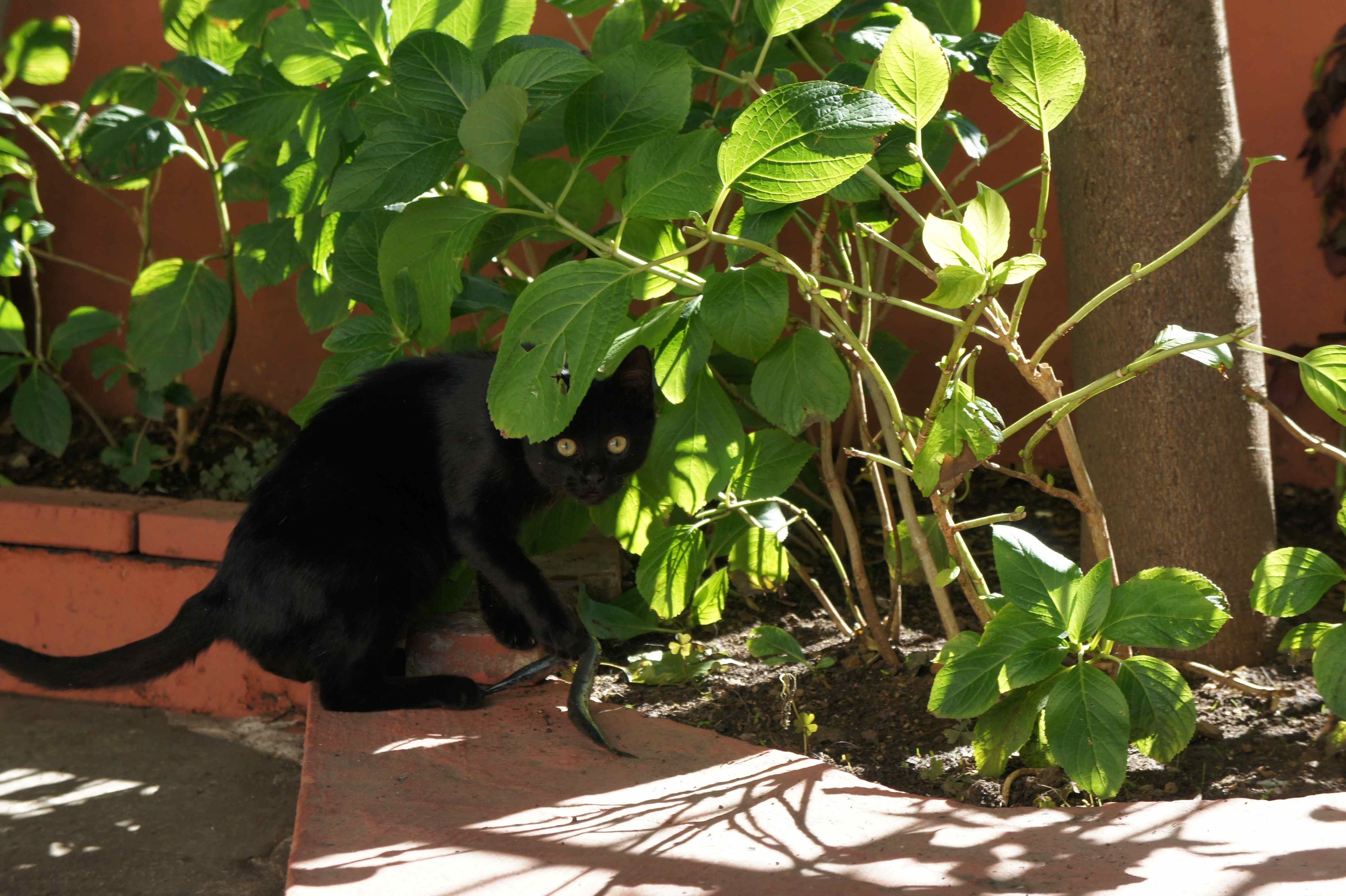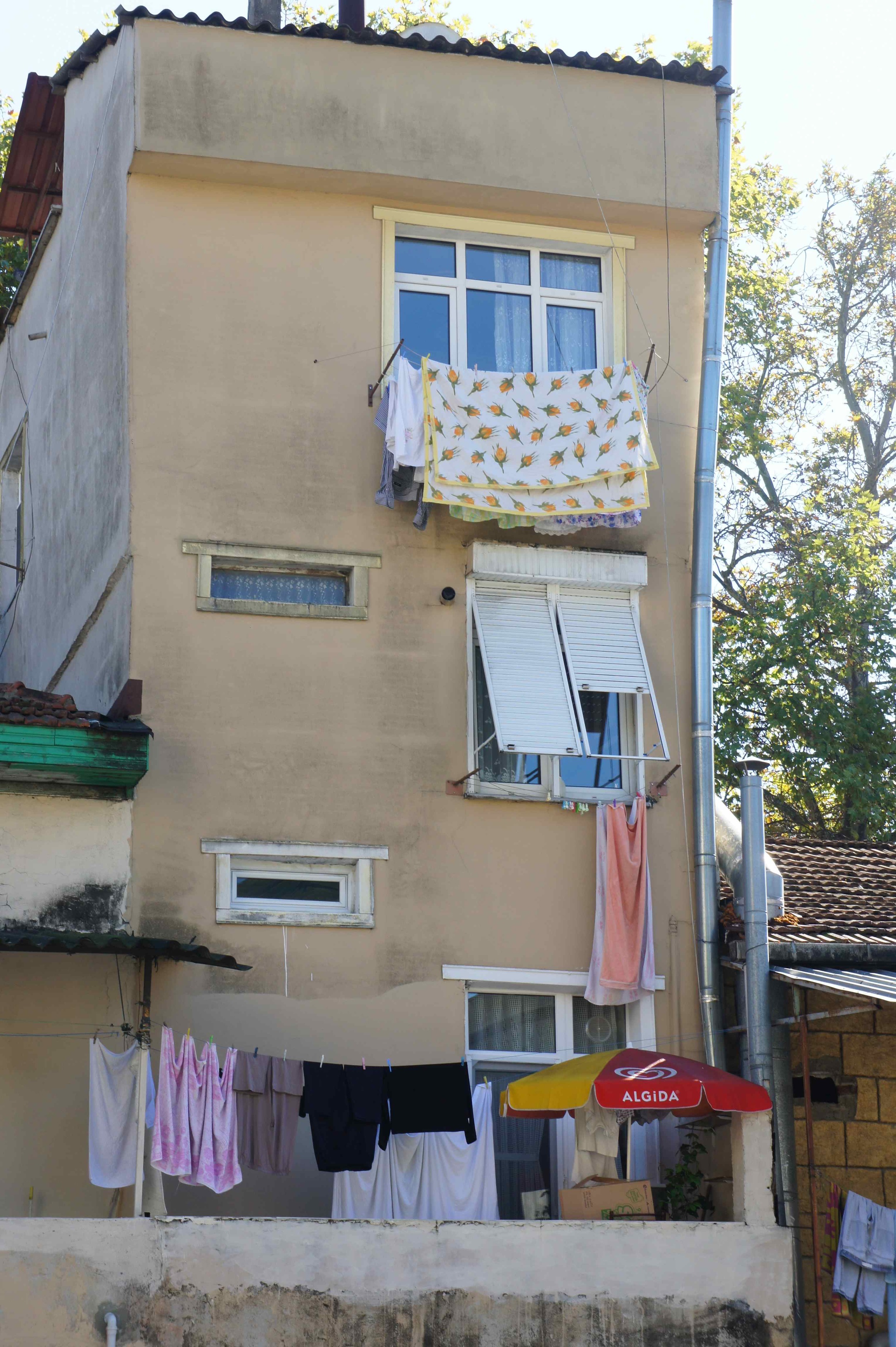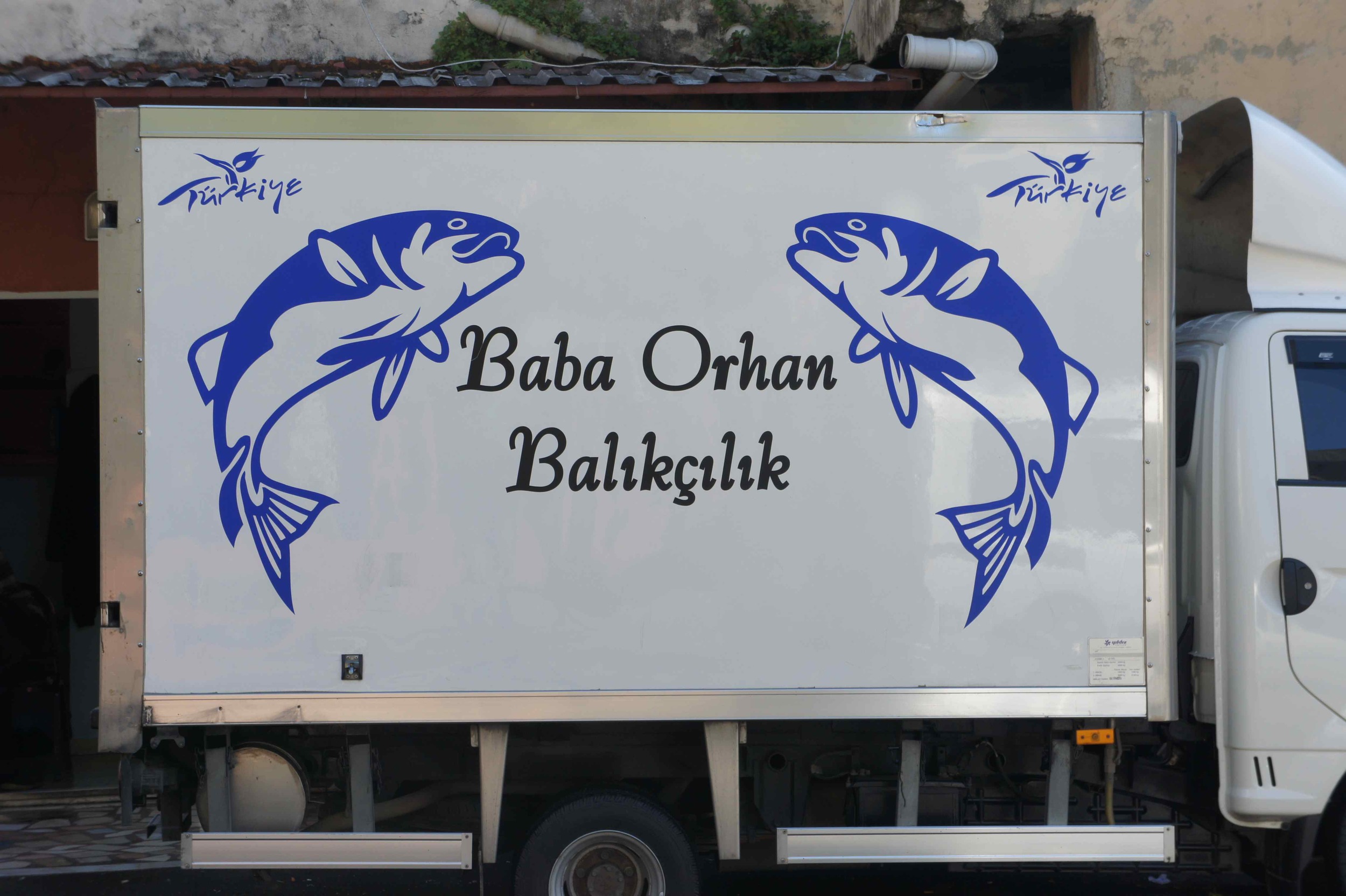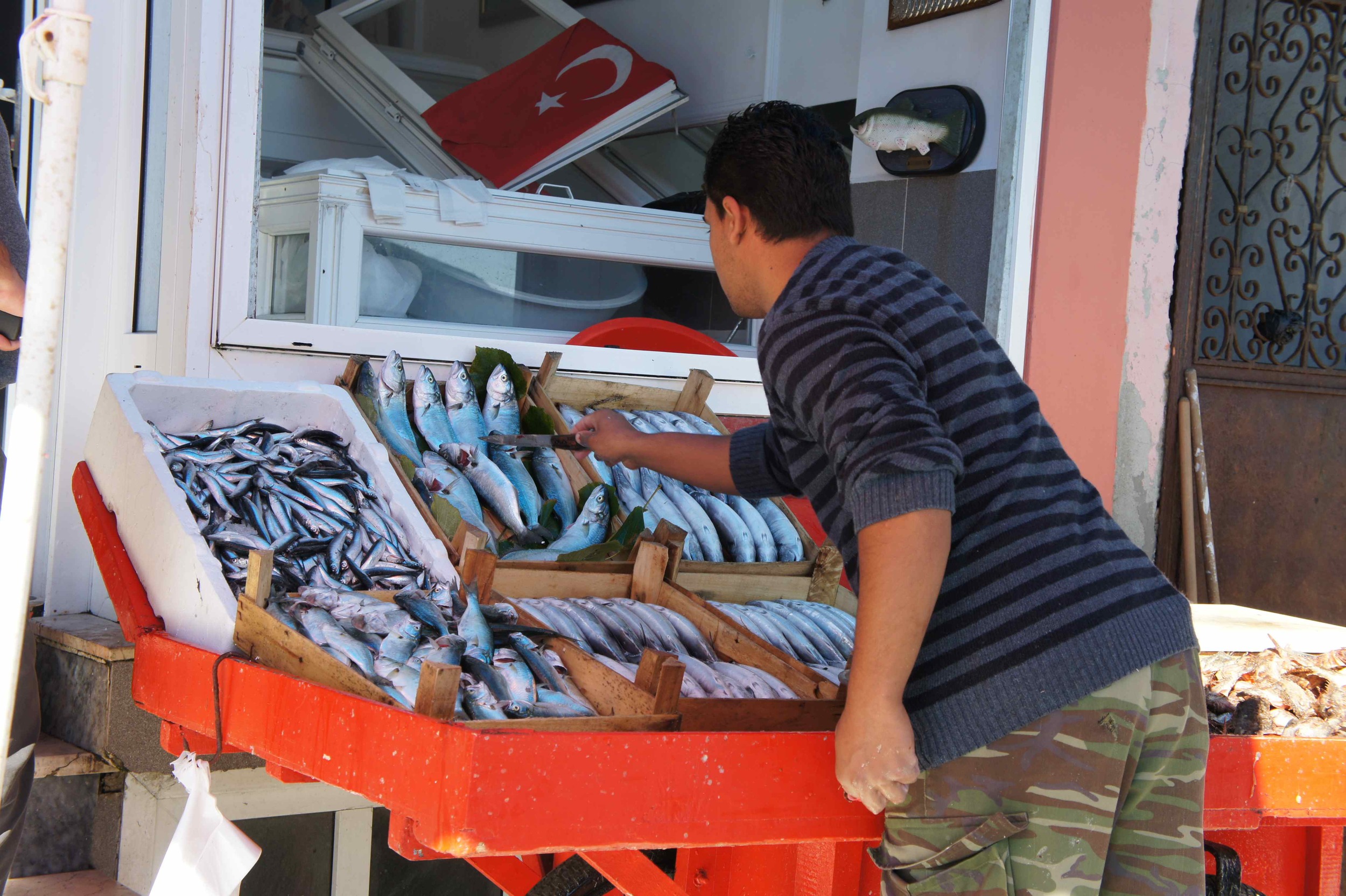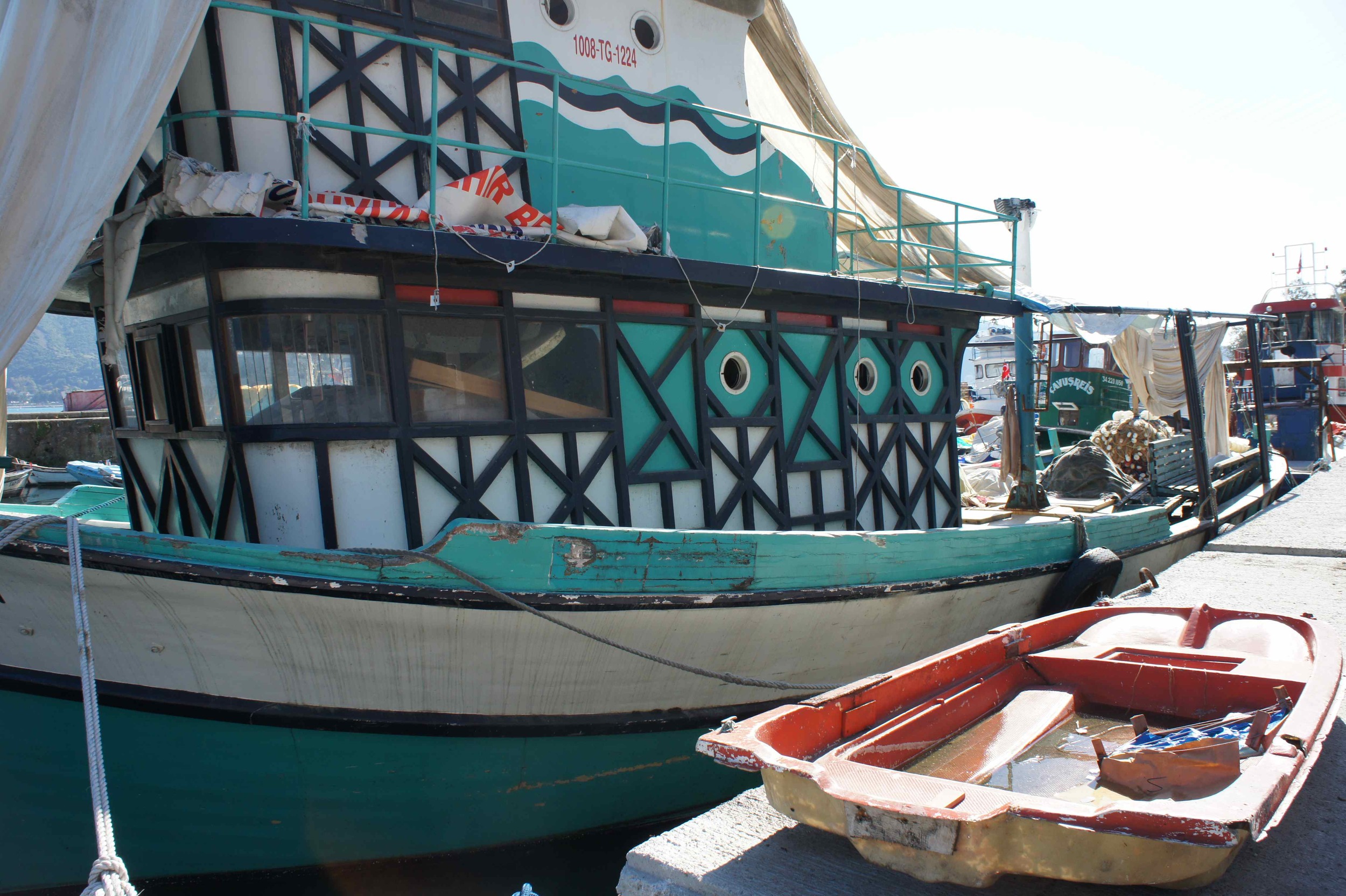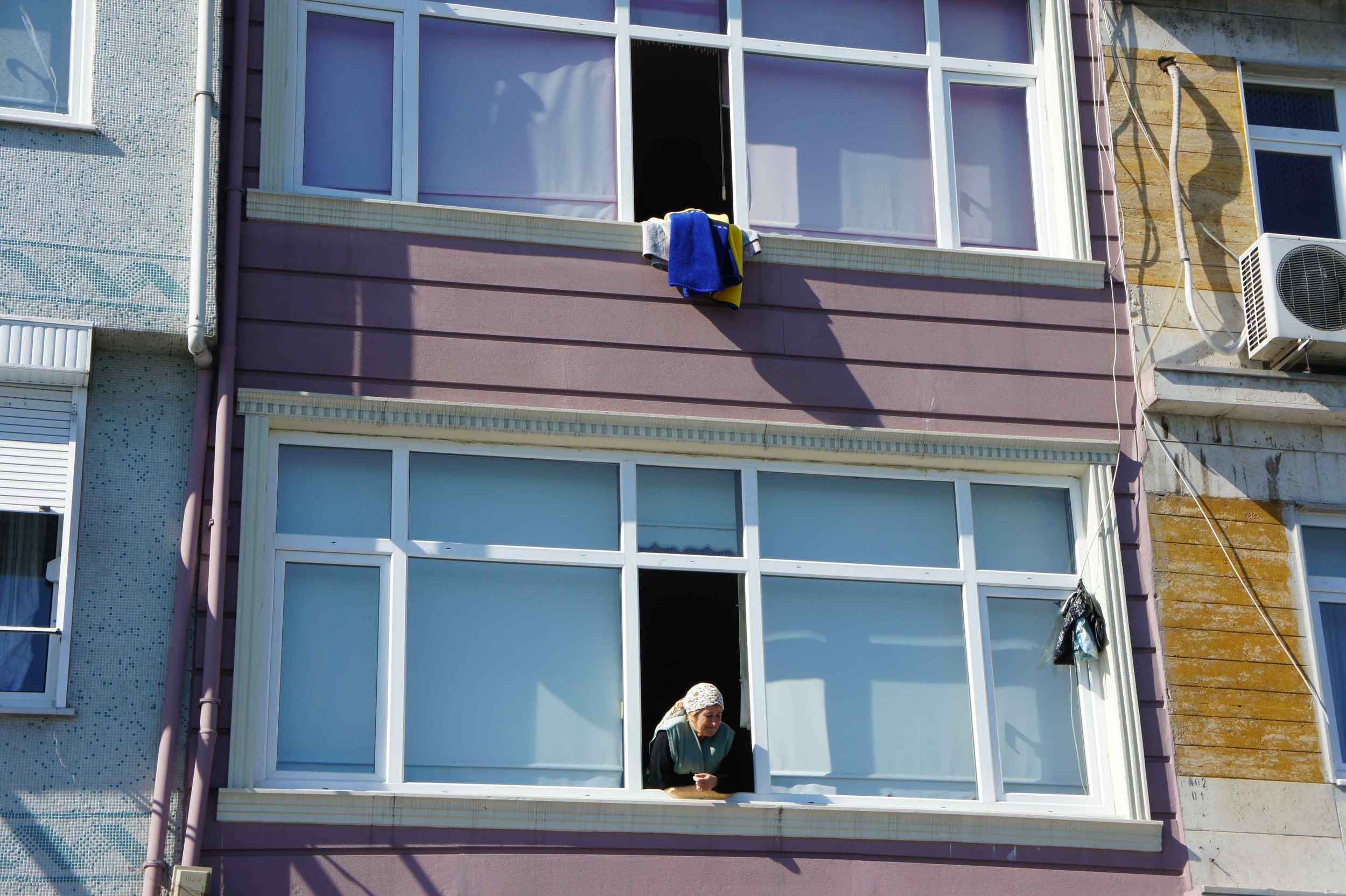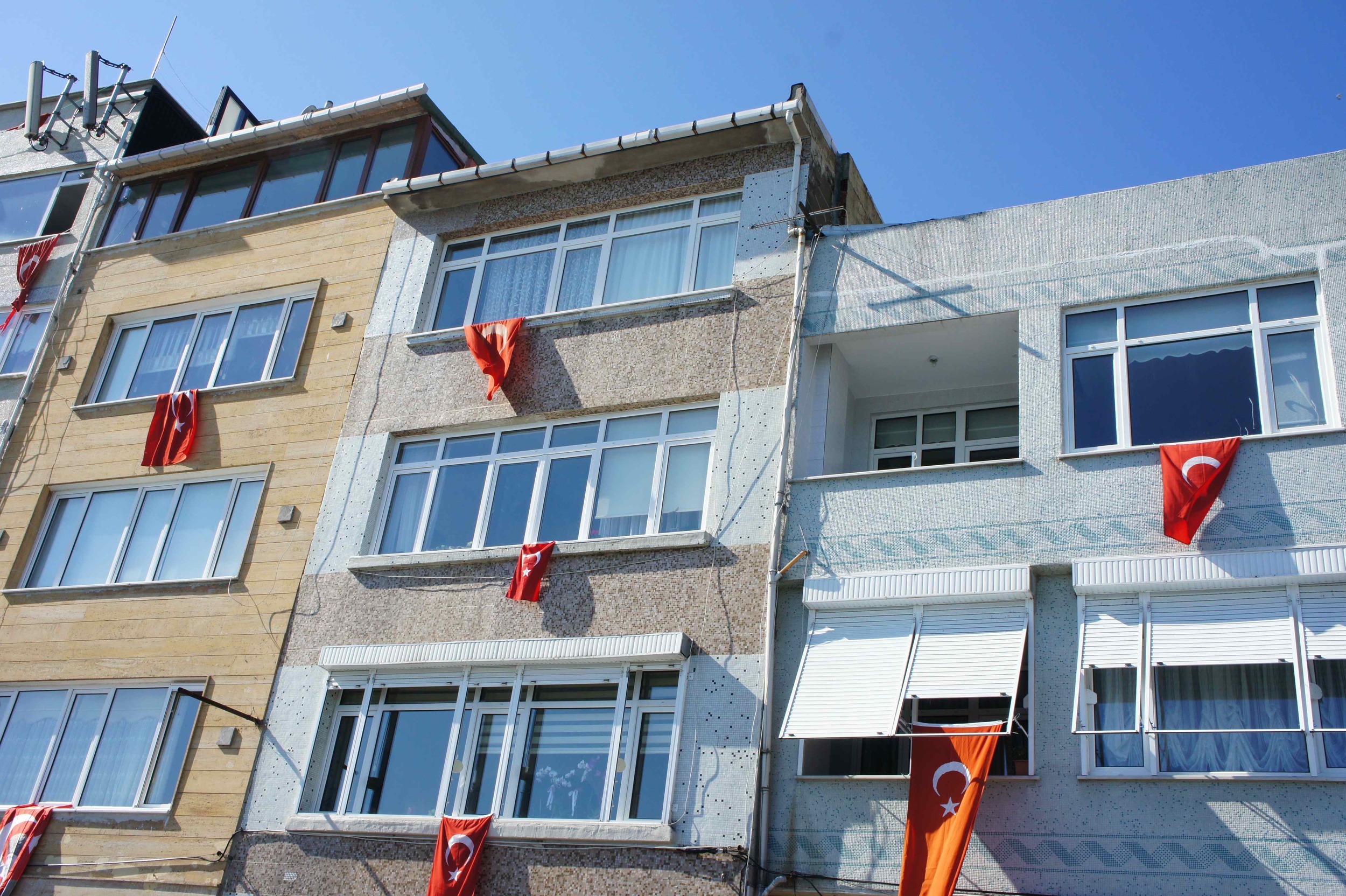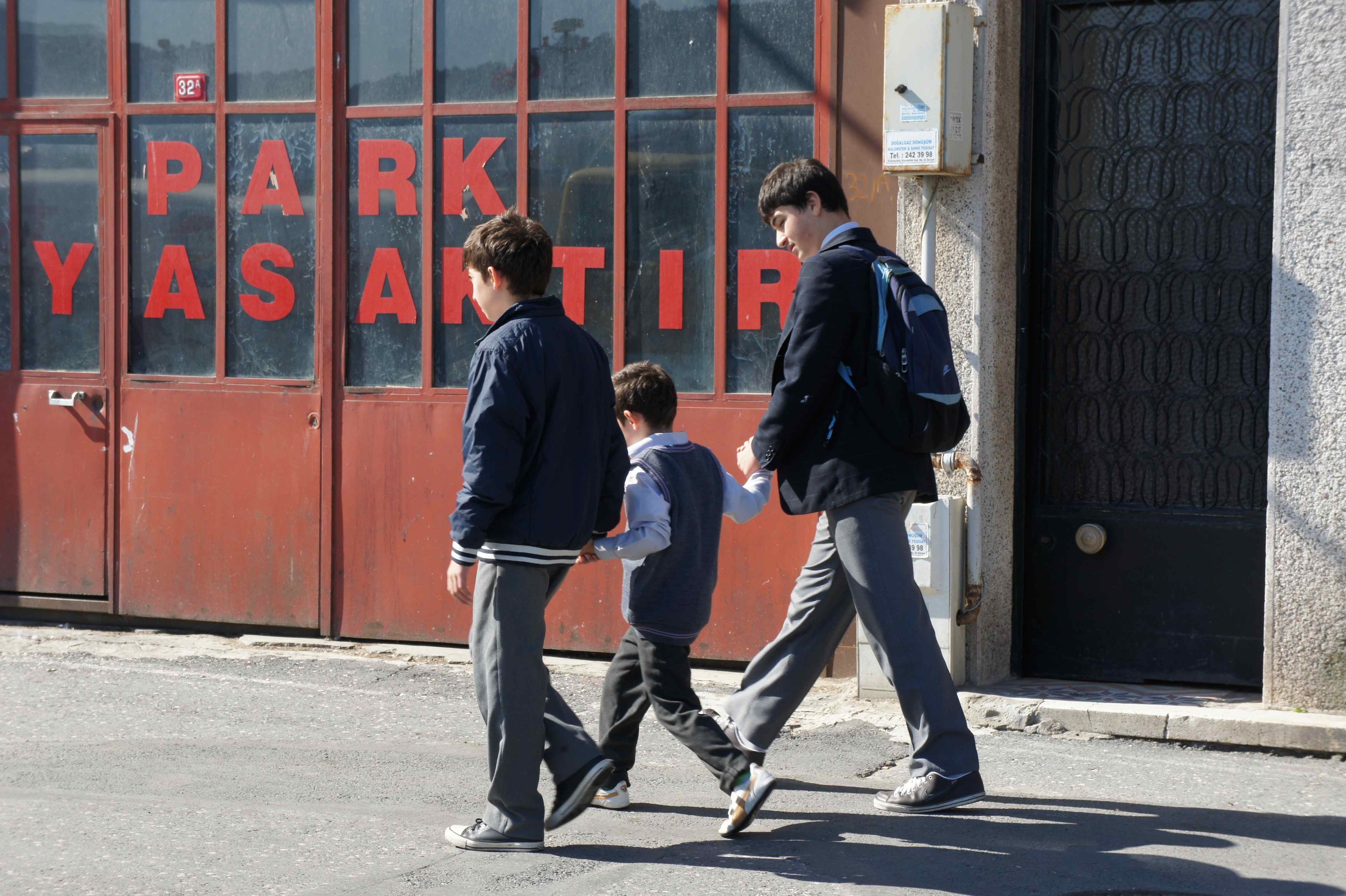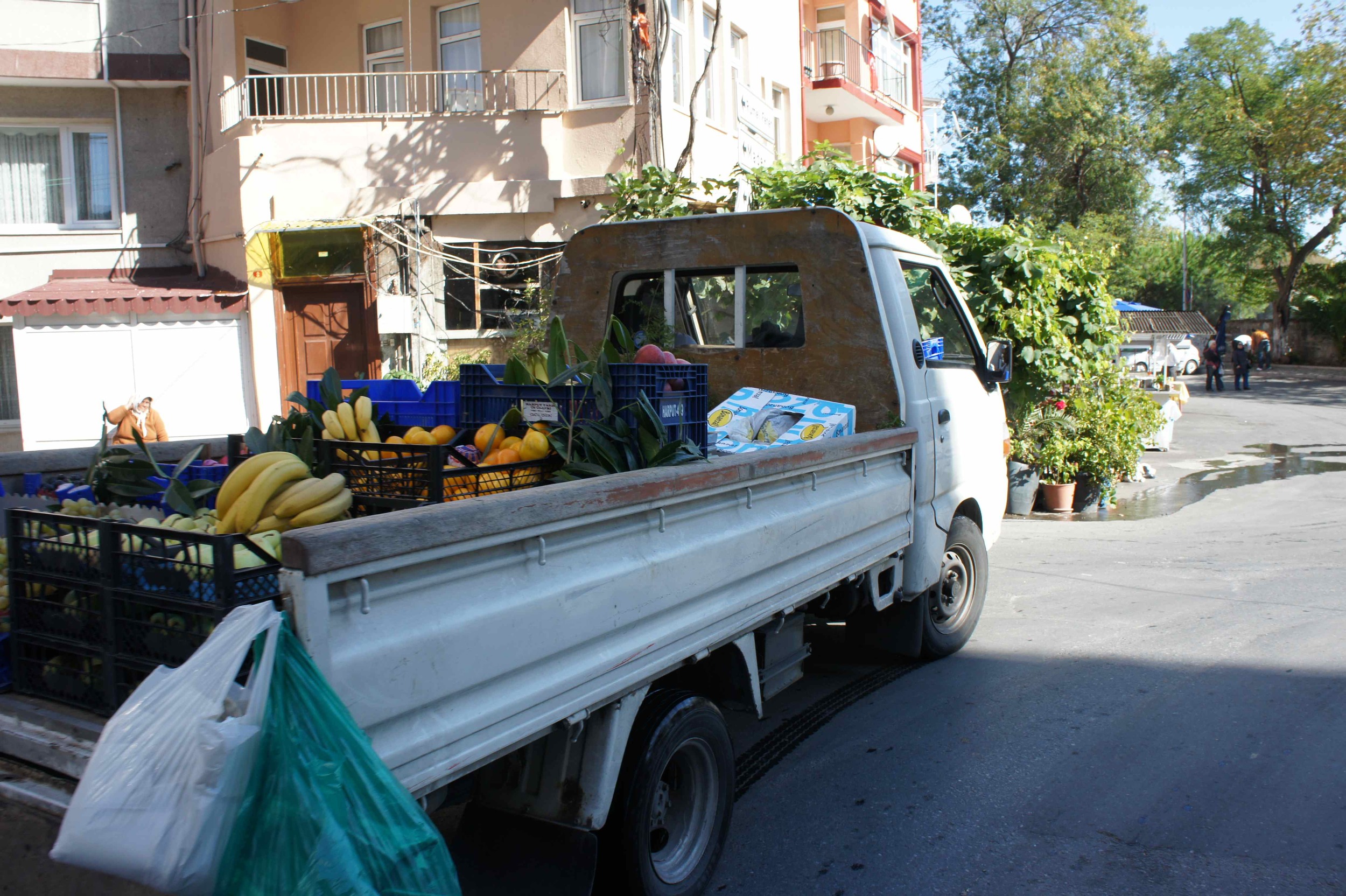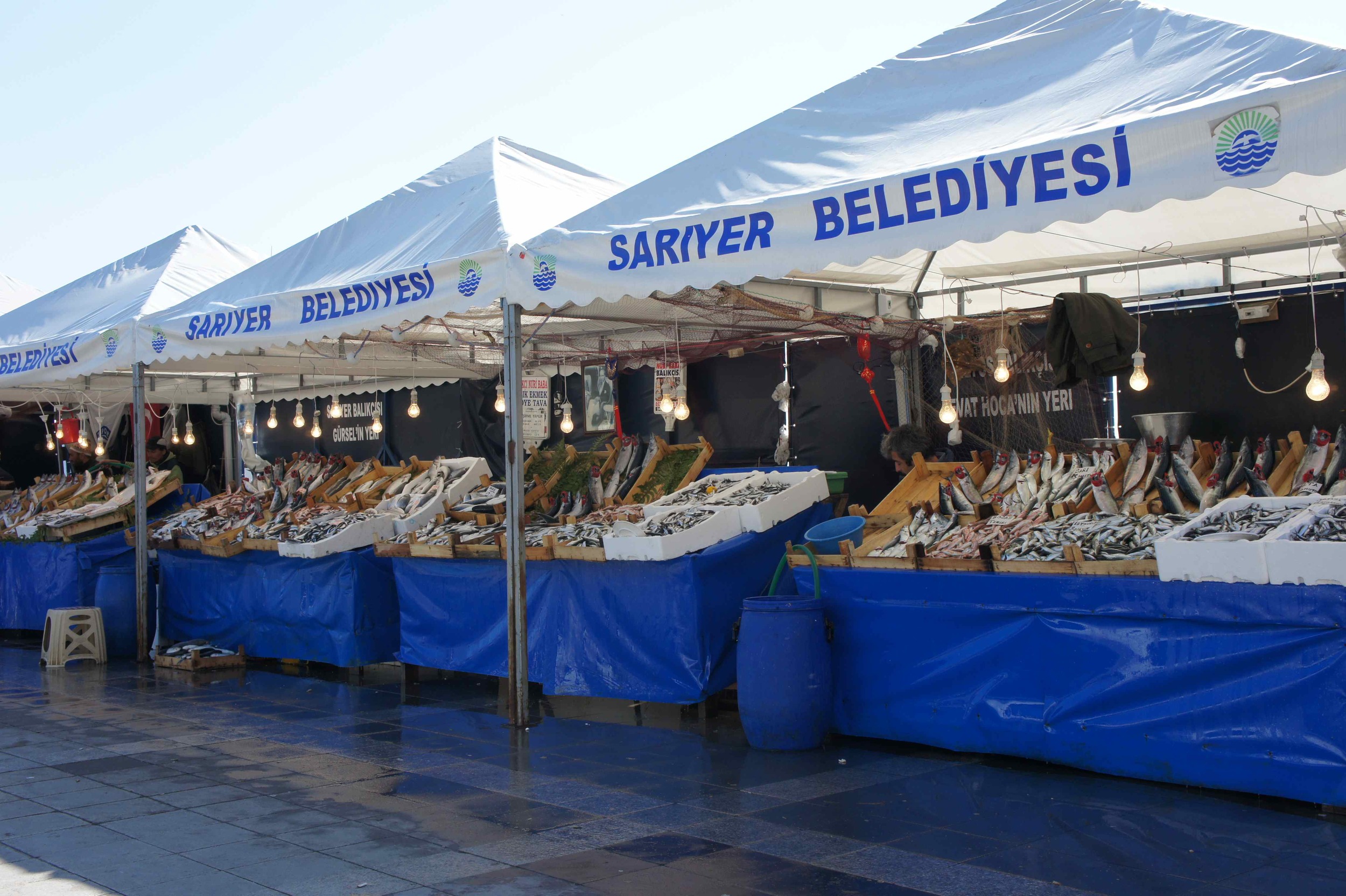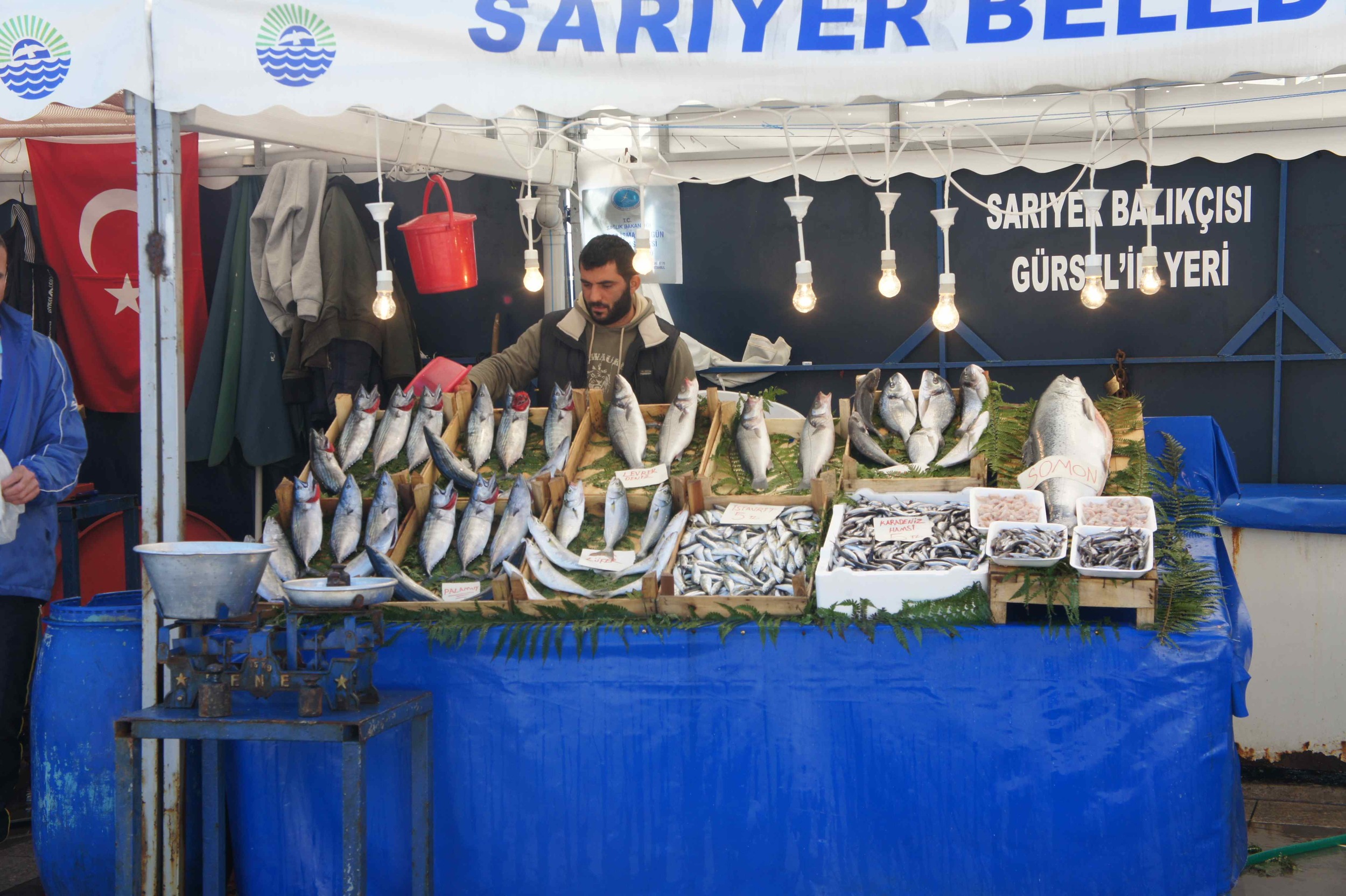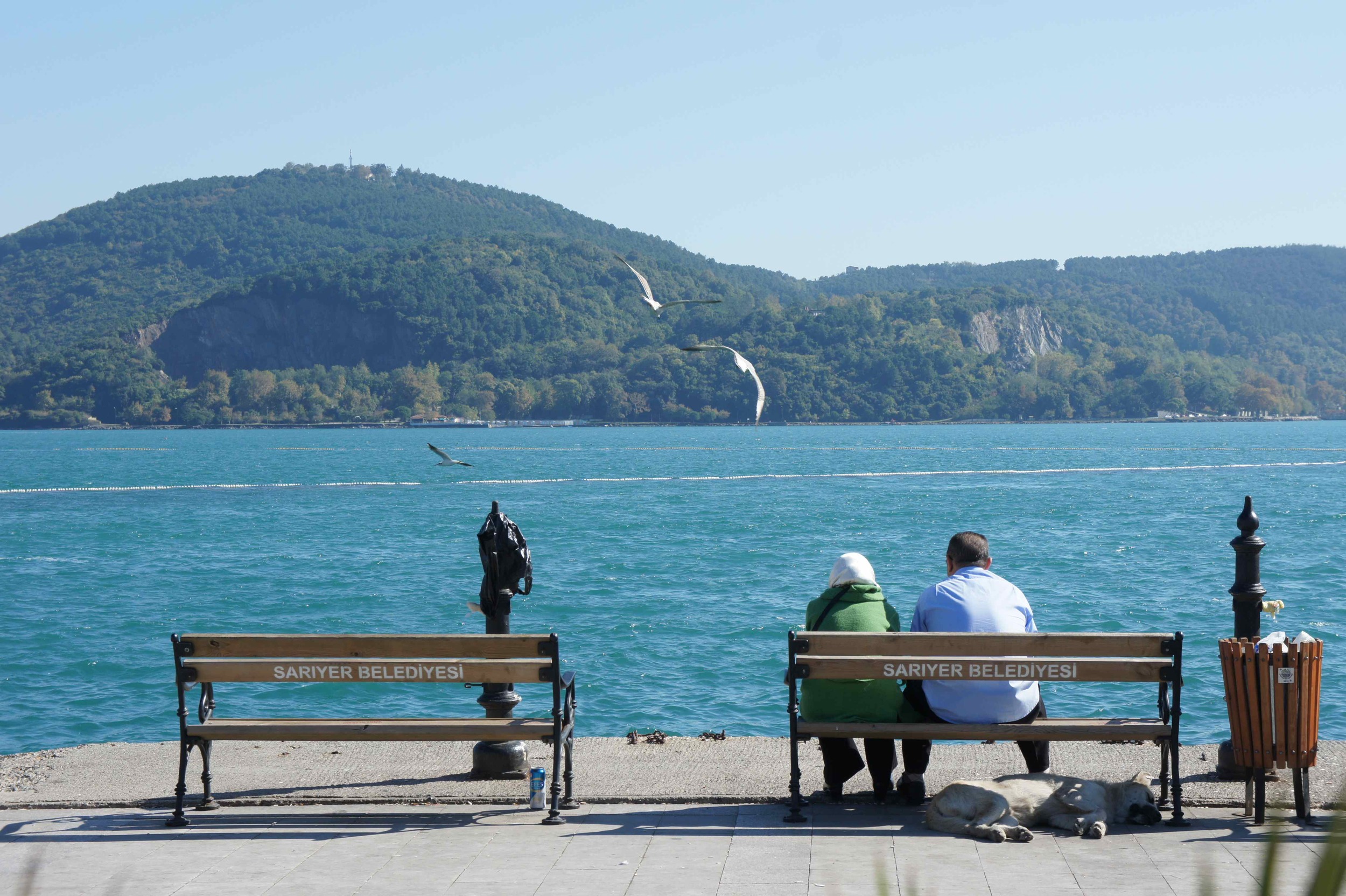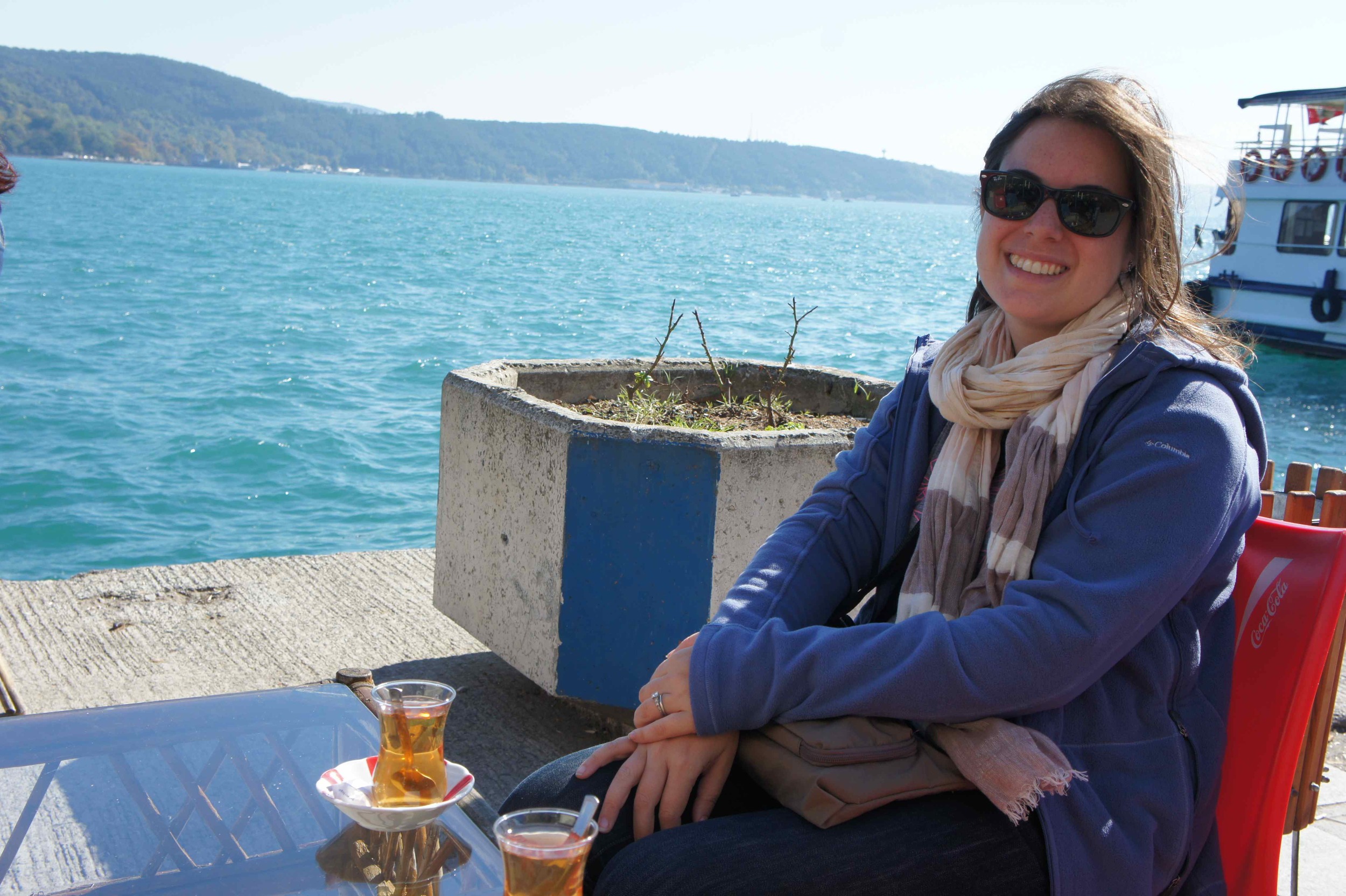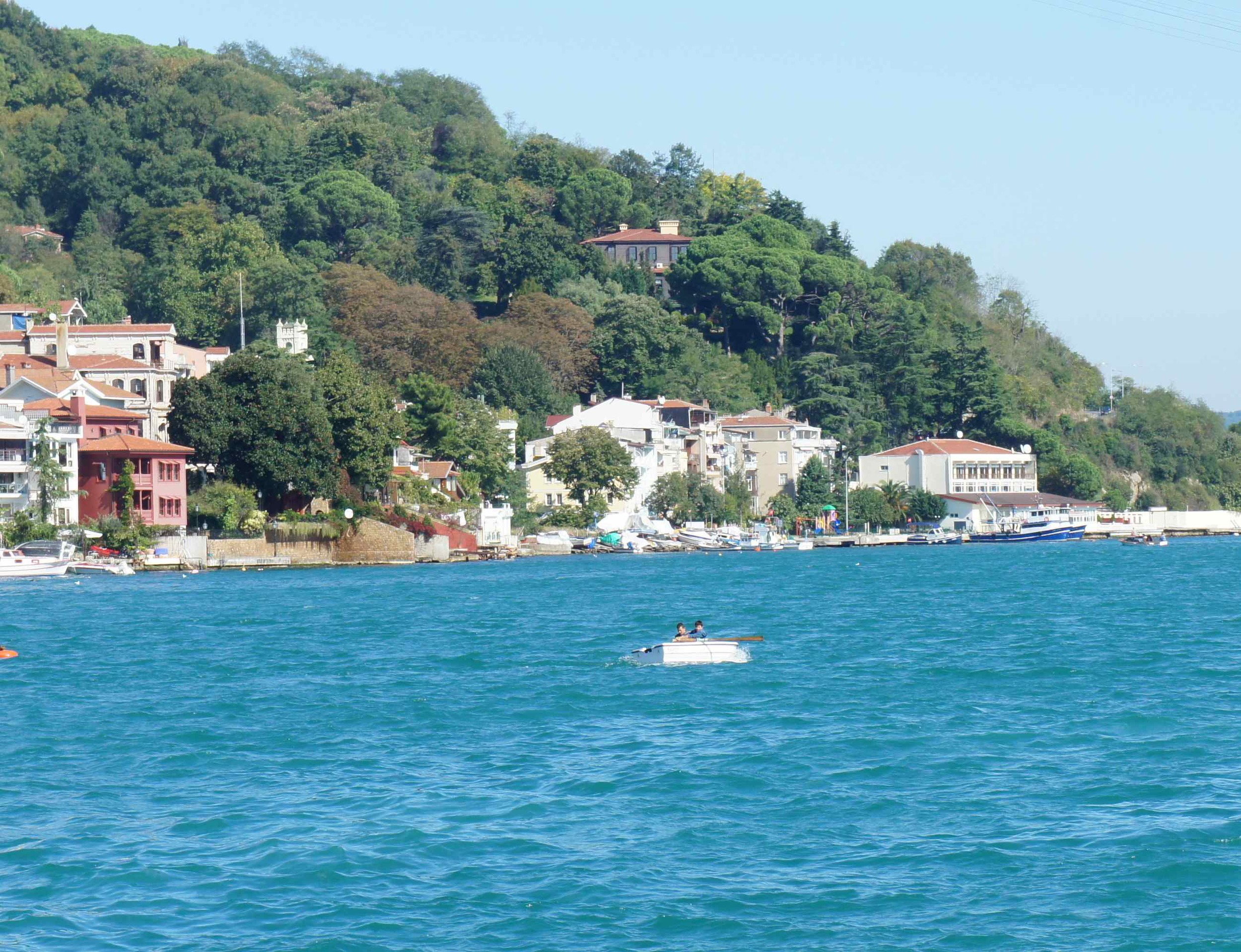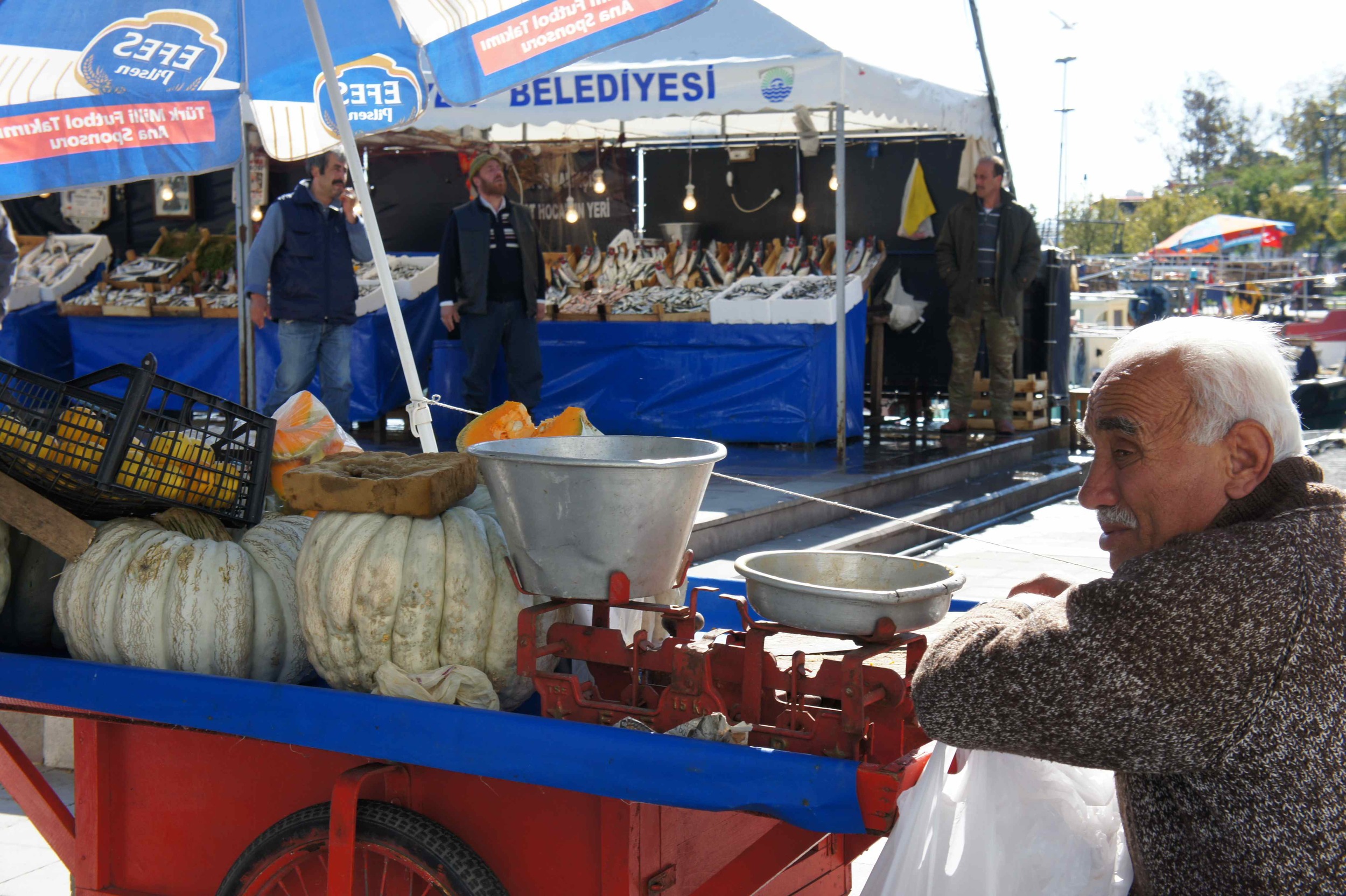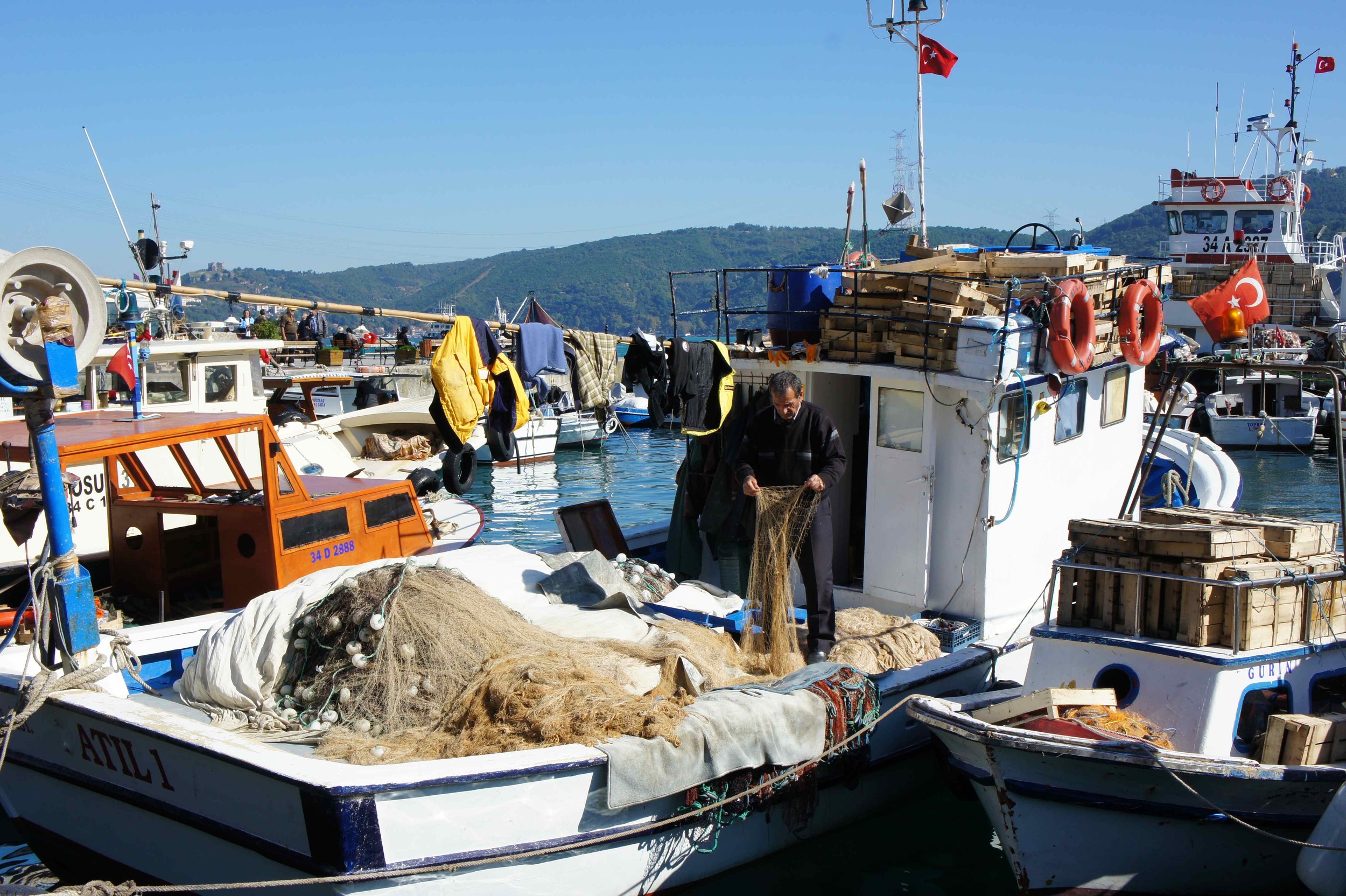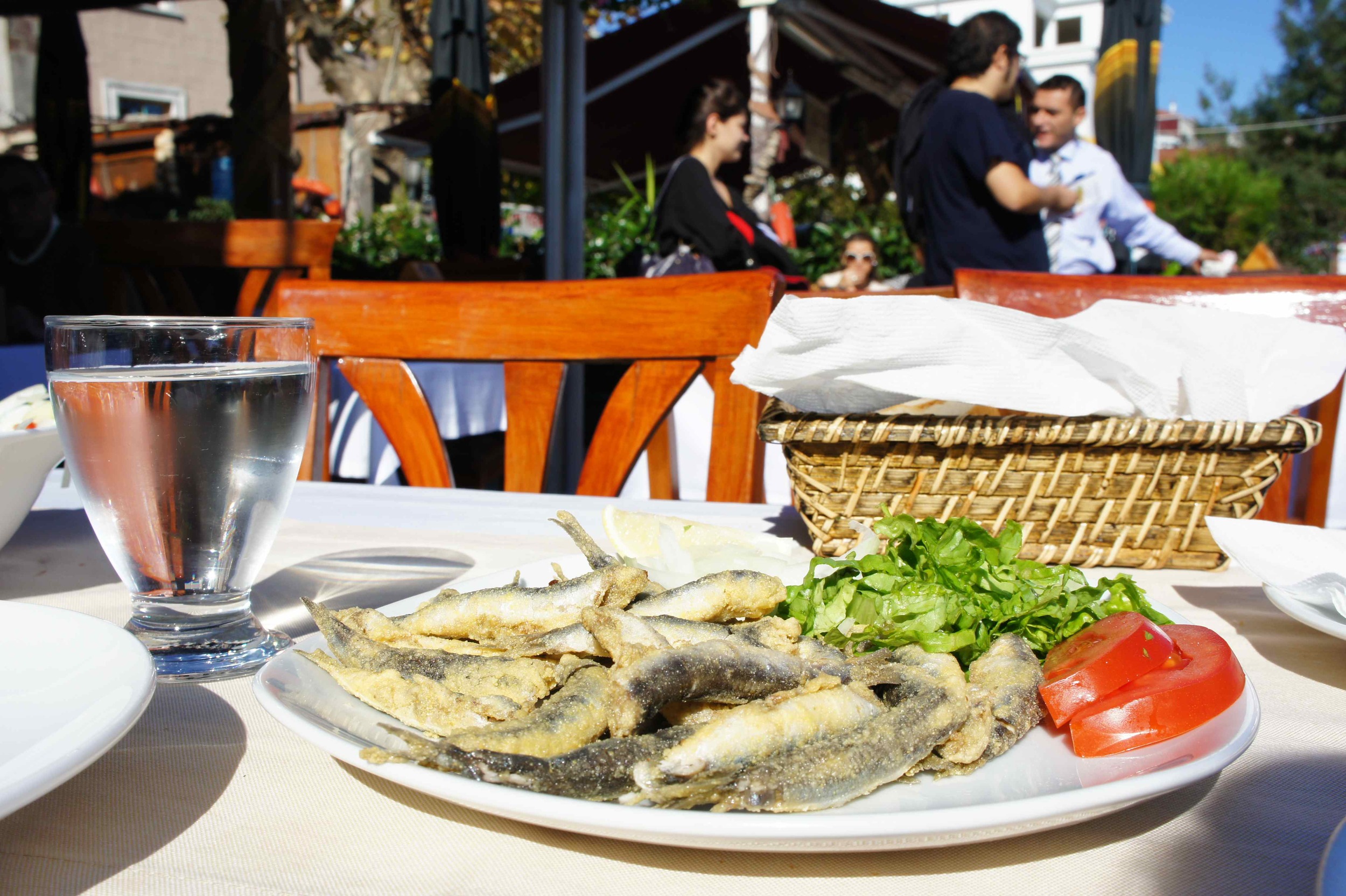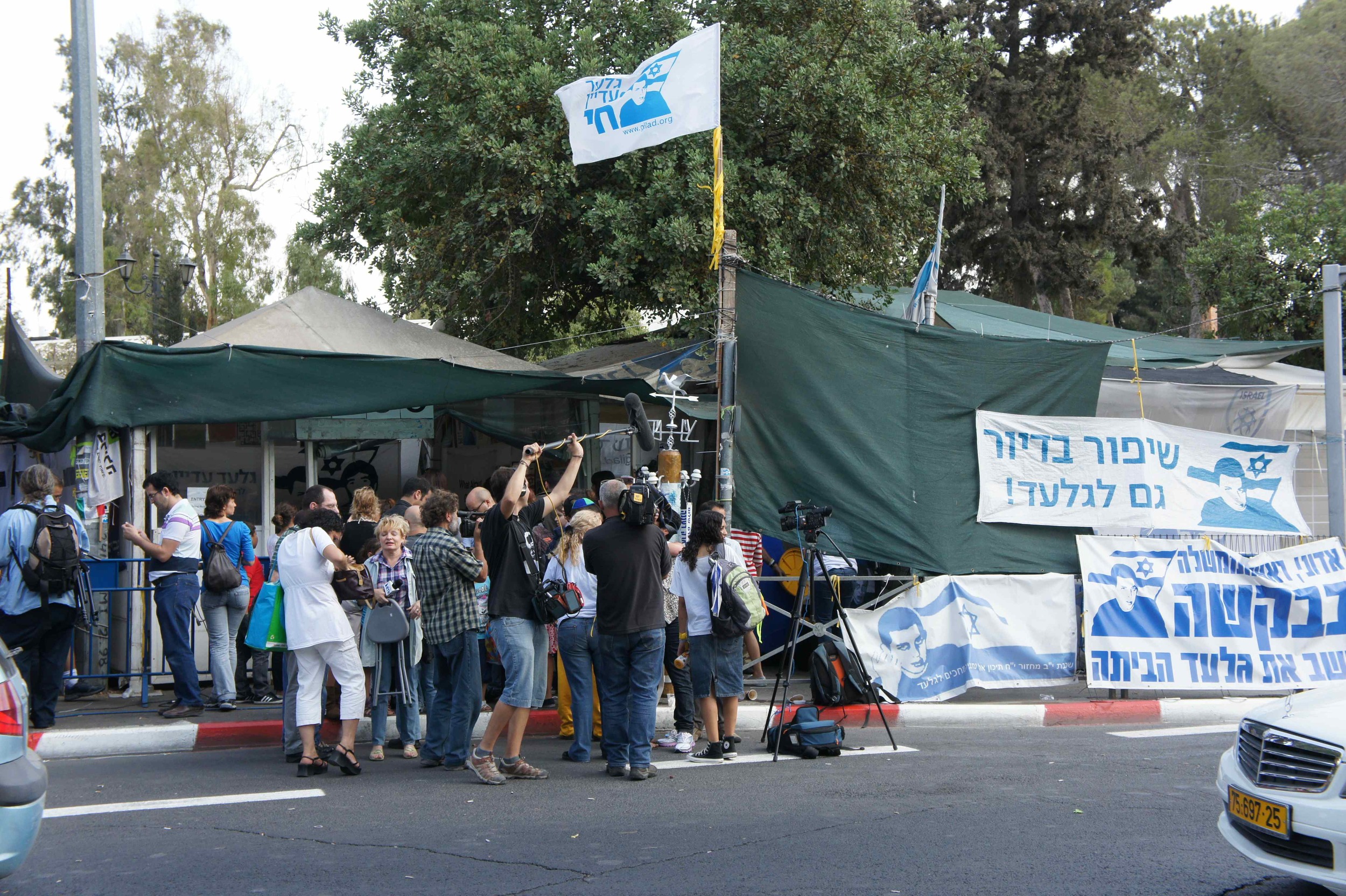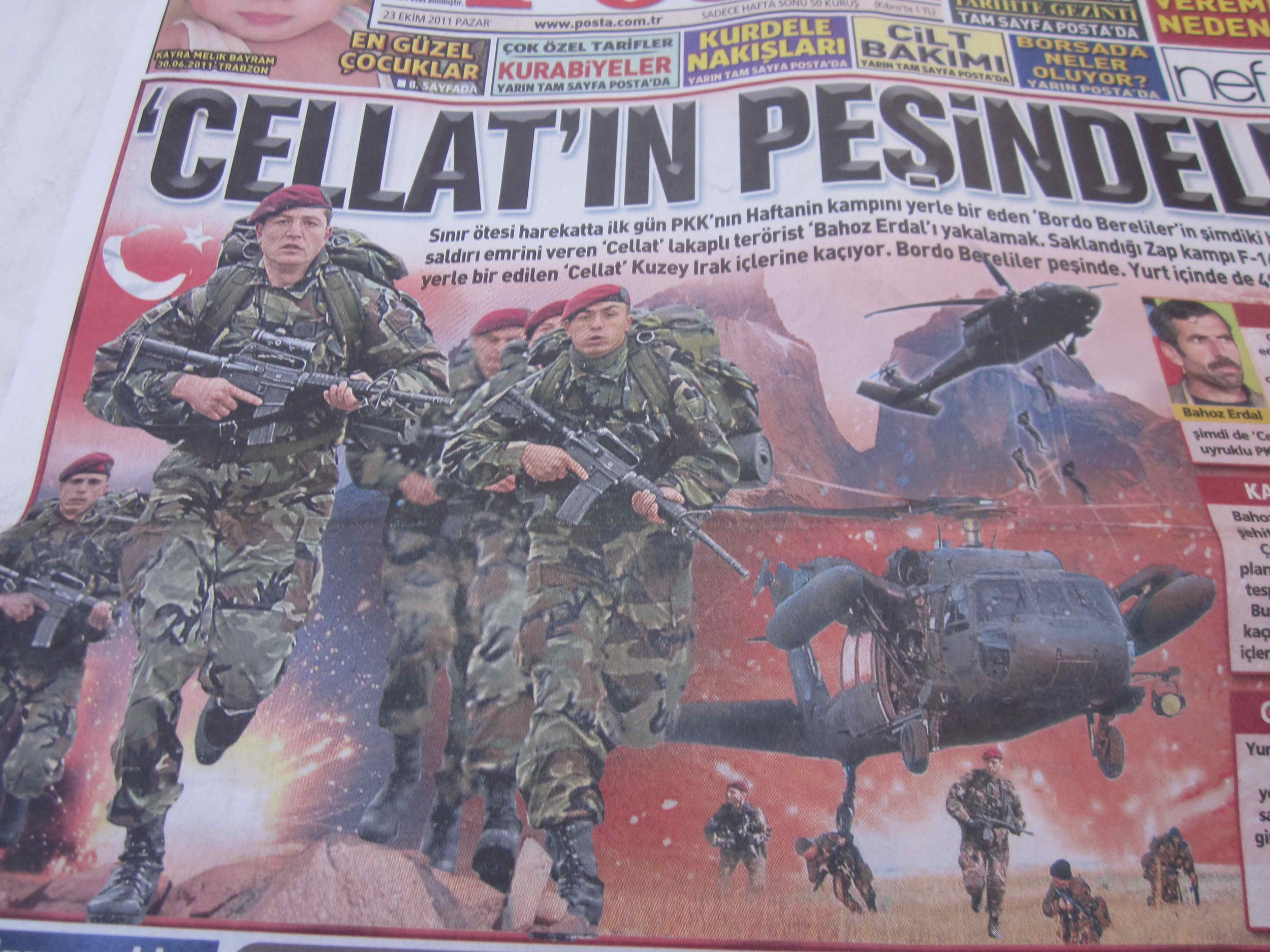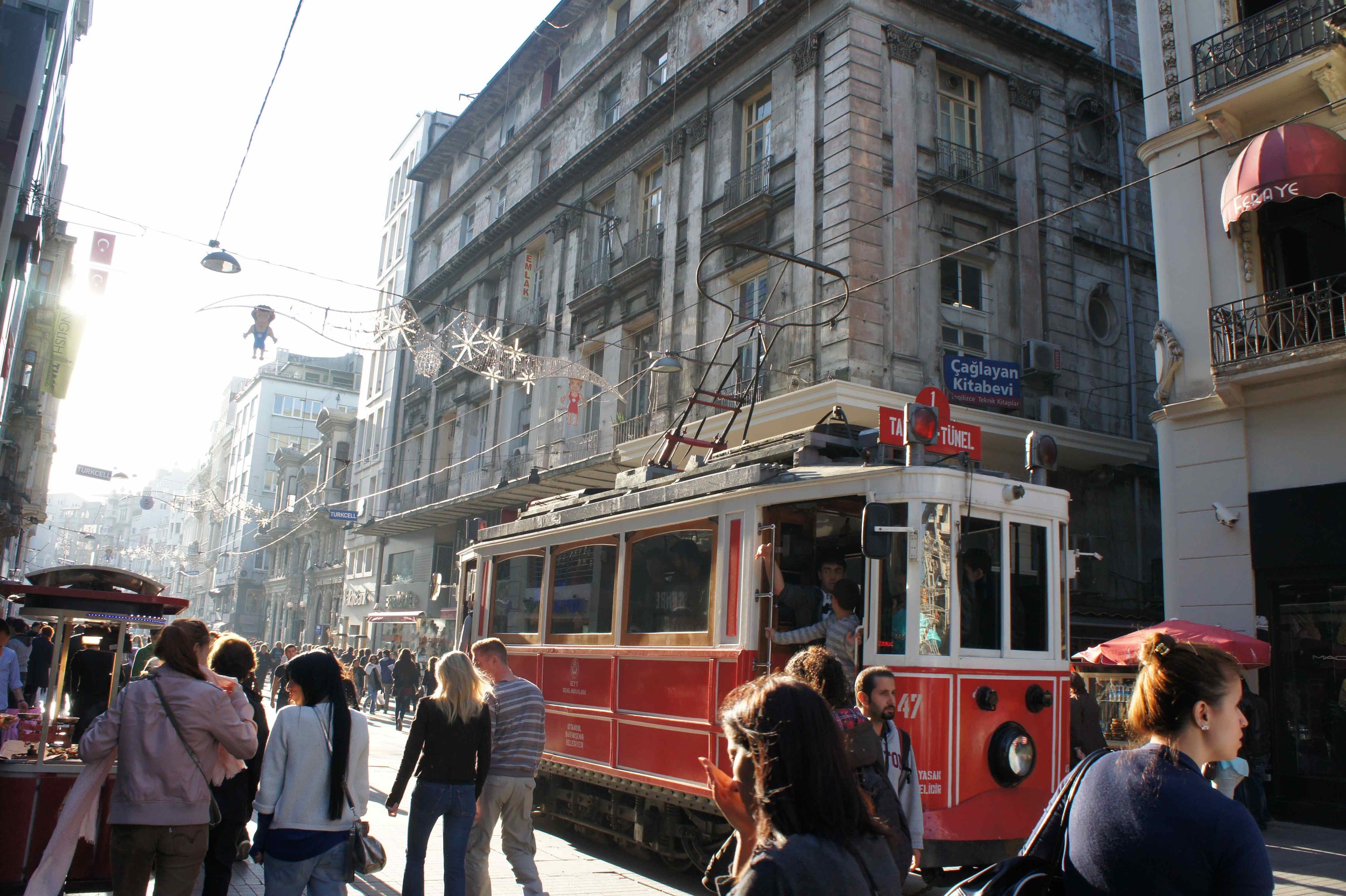India: Our first week in Bombay
I was last in Bombay five years ago, and since then the city has been going through a construction boom. Just looking out the window of our 6 AM taxi ride from the airport to our new Bombay home, the boom was already evident: new overhead walkways, large buildings, bridges, etc. Advertisements for cement companies are everywhere. The pace of development puts New York to shame. I have noticed a few other changes in the city as well. There is an emerging green movement and a new "Clean-Up Mumbai" initiative. Aside from improved garbage collection, "Clean-Up Mumbai" includes fines for littering, urinating, washing a car, etc. on the streets. There is also a fine for defecating in the street, which, of course, is the smallest fine. More importantly, fines are levied on street vendors that don't provide garbage bins. This is a huge change for a city that I used to say had thirty public trash cans for 20 million people. It was difficult having to teach myself to throw garbage on the ground because there was often no other choice. On the other hand, the lack of trash cans gave me an appreciation for the fact that India is a spitting rather than a nose blowing culture --where would all those tissues go? Anyway, the new policy seems to be working--the city is certainly cleaner than I remember.
Another change is the way women ride on their husband's motorcycle. Five years ago, the iconic image of an Indian family--a man on his motorcycle, with his wife sitting sidesaddle behind him and one or two children sitting up front--was fairly common here. Almost all the couples/families on motorcycles had the women riding sidesaddle. Now, it seems like four out of five women on motorcycles sit normally, straddling the seat, and I've even noticed several women driving their own bikes. I'm not sure how much of this change is because we are are in the more modern neighborhood of Bandra or because of a change in the city's culture, but it's definitely noticeable.
We spent our first week here adjusting. The adjustment took longer than I thought. When I left here five years ago, I really missed the city. I felt at home here and that feeling came back to me every time I was in a place even remotely like Bombay. I expected to have that same feeling the moment we landed here, but the combination of not volunteering for the first week, exhaustion from three weeks of intense travel, and the heat and humidity which made being outside unbearable throughout most of the day made me anxious about our choice to live here. Once I started working and a semi-routine emerged, things improved. The heat has yet to improve.
Our first few days in Bombay were during Diwali, the Hindu new year. I've read that traditionally this is a time when Bombay sees lots of firecrackers, but the city has been urging people against that. The efforts have not been very successful. From the moment the sun went down until the early hours of morning, there were firecrackers everywhere, including right outside our apartment. It was amazing to walk down the street and see fireworks in every direction.
In our first week, we already started to get a feel for typical Indian culture. Many Indians, especially in Bombay, are obsessed with Bollywood stars, and our neighborhood (Bandra West) is famous for being the home of many of those stars. One day we went for a walk along one of the promenades in the area. On our way back we saw a crowd of people staring at a building, but we couldn't tell what was so special about it. As we passed it, Devorah tried to ask someone what they were looking at: "Is there someone famous in that building?" The interaction was not productive--the man she asked did not speak any English. (We found out later that it was the home of Shahrukh Khan, one of India's most famous actors). A few minutes after we started walking home, as we waited to cross a major road, the man Devorah spoke to showed up behind us. He gave me his cell phone and asked that I take a picture of him with Devorah. Apparently, having a foreigner talk to him was more exciting than getting a glimpse of a celebrity.
We also got a taste of some genuine Indian hospitality. One afternoon, after we waiting on a very long line to buy tickets for a local train, we got to the counter, only to find that we did not have enough small bills to buy our tickets--we were 20 rupees short and the cashier did not have change for our 1000 rupee note. We got out of line and started talking about how we were going to get home: go and find change somewhere, find a taxi, etc. As we were trying to figure this out, the guy that was behind us in line tapped on my shoulder, asked me how much we needed, gave me the 20 rupees, and went off to find his train. It may have been Diwali that caused him to do it, but it was a touching gesture nonetheless.
